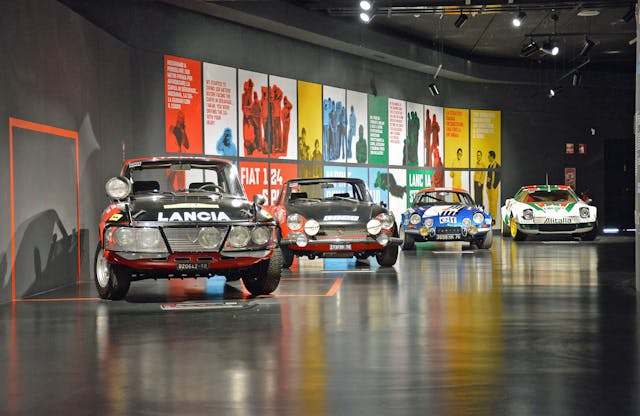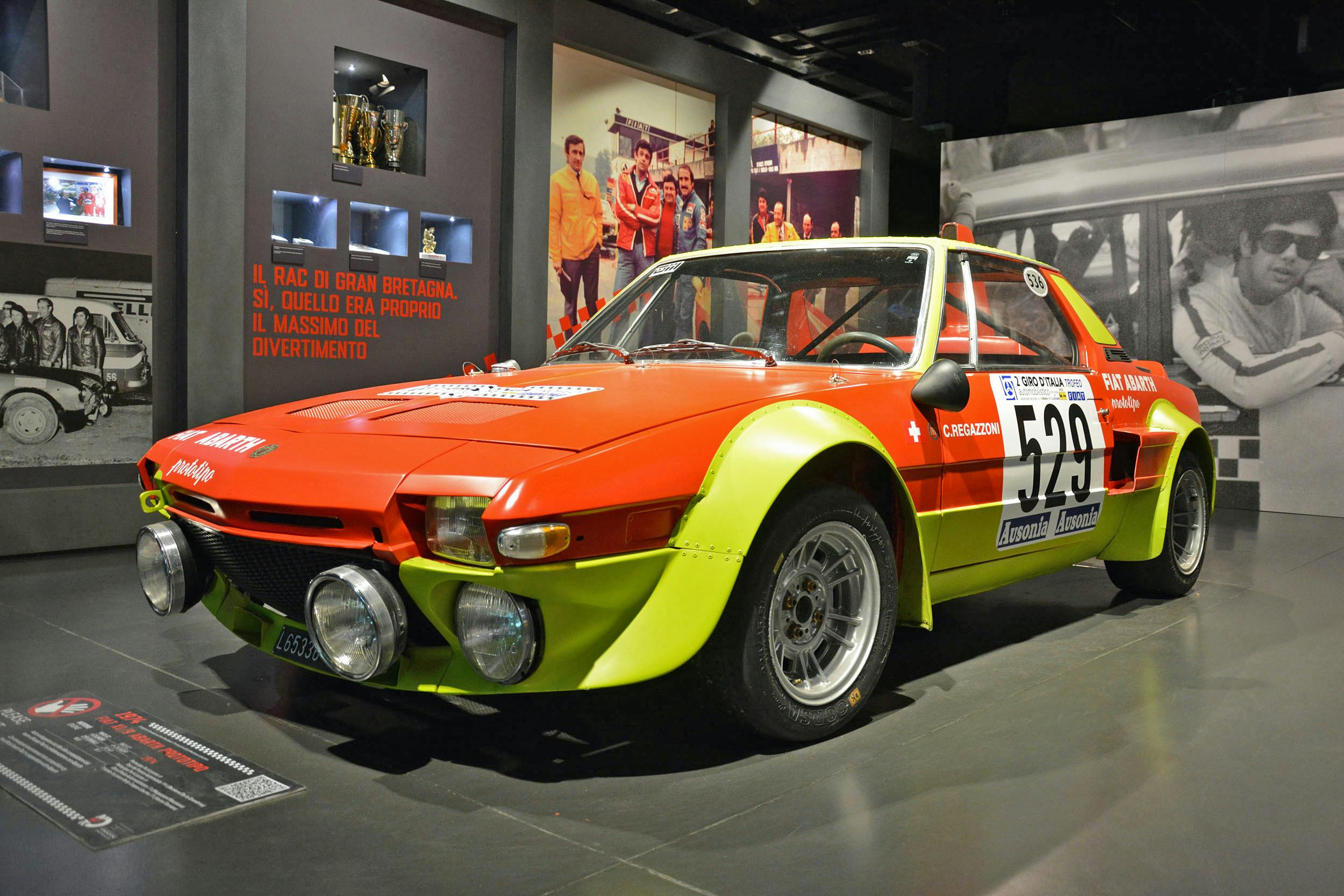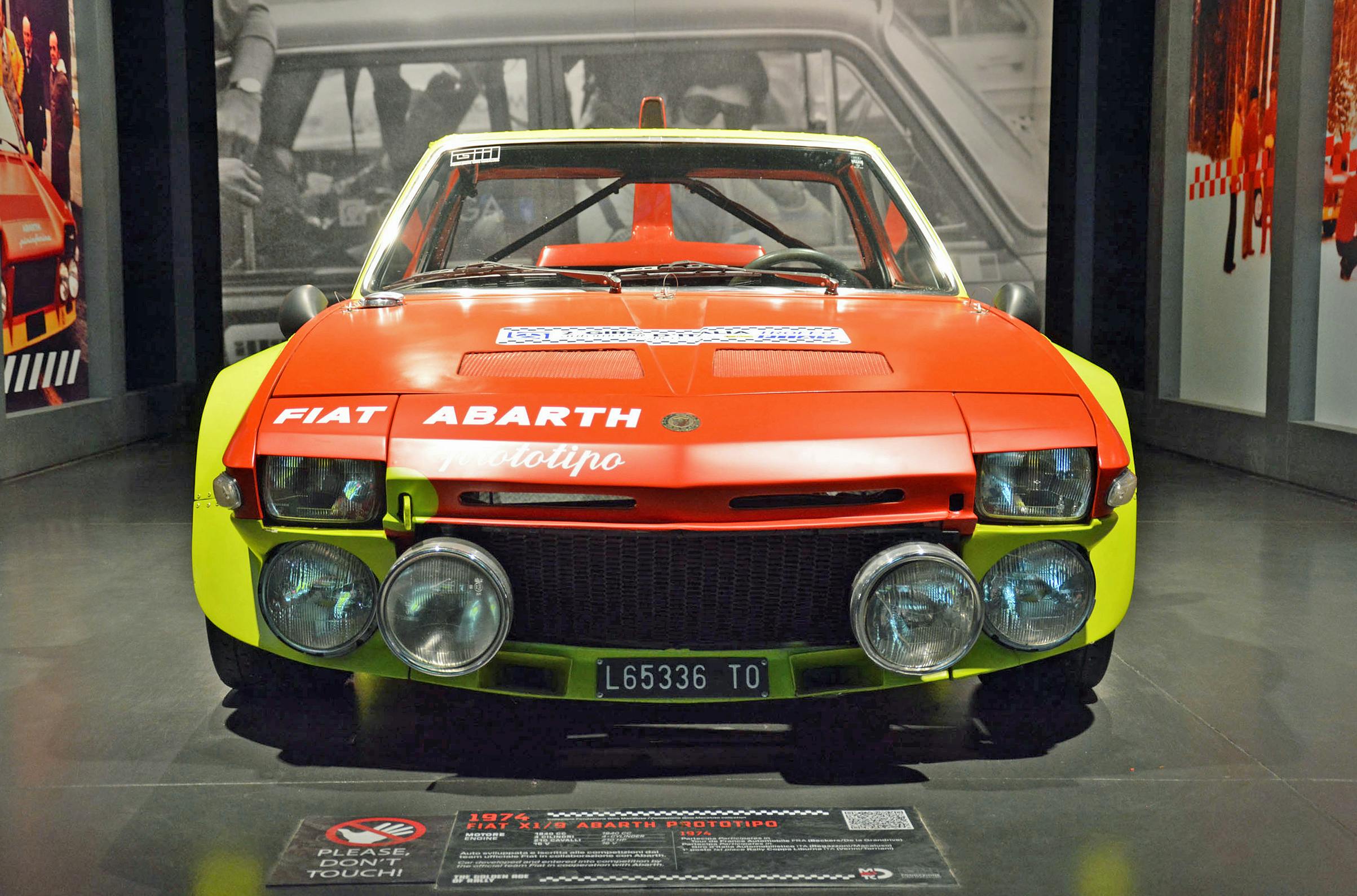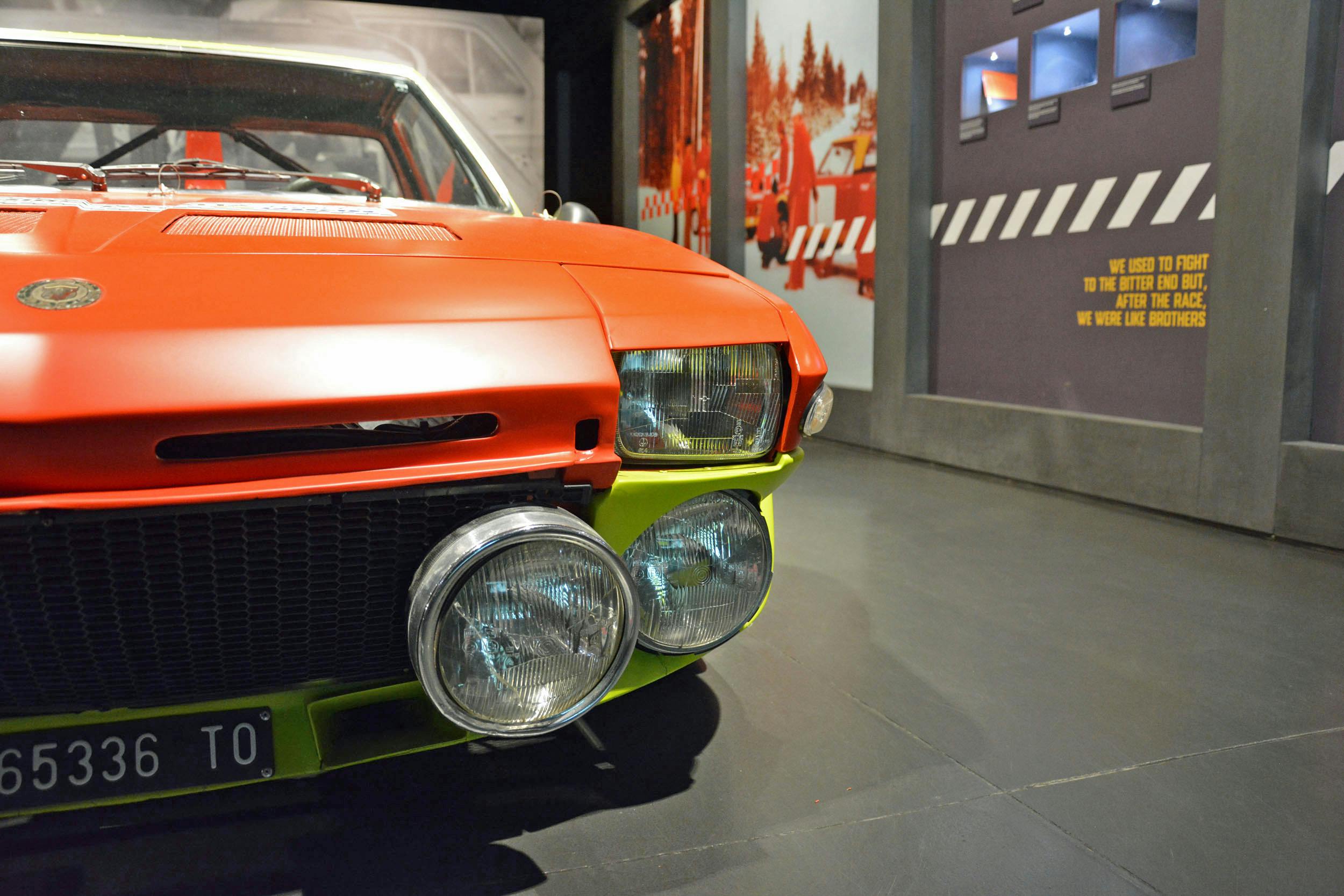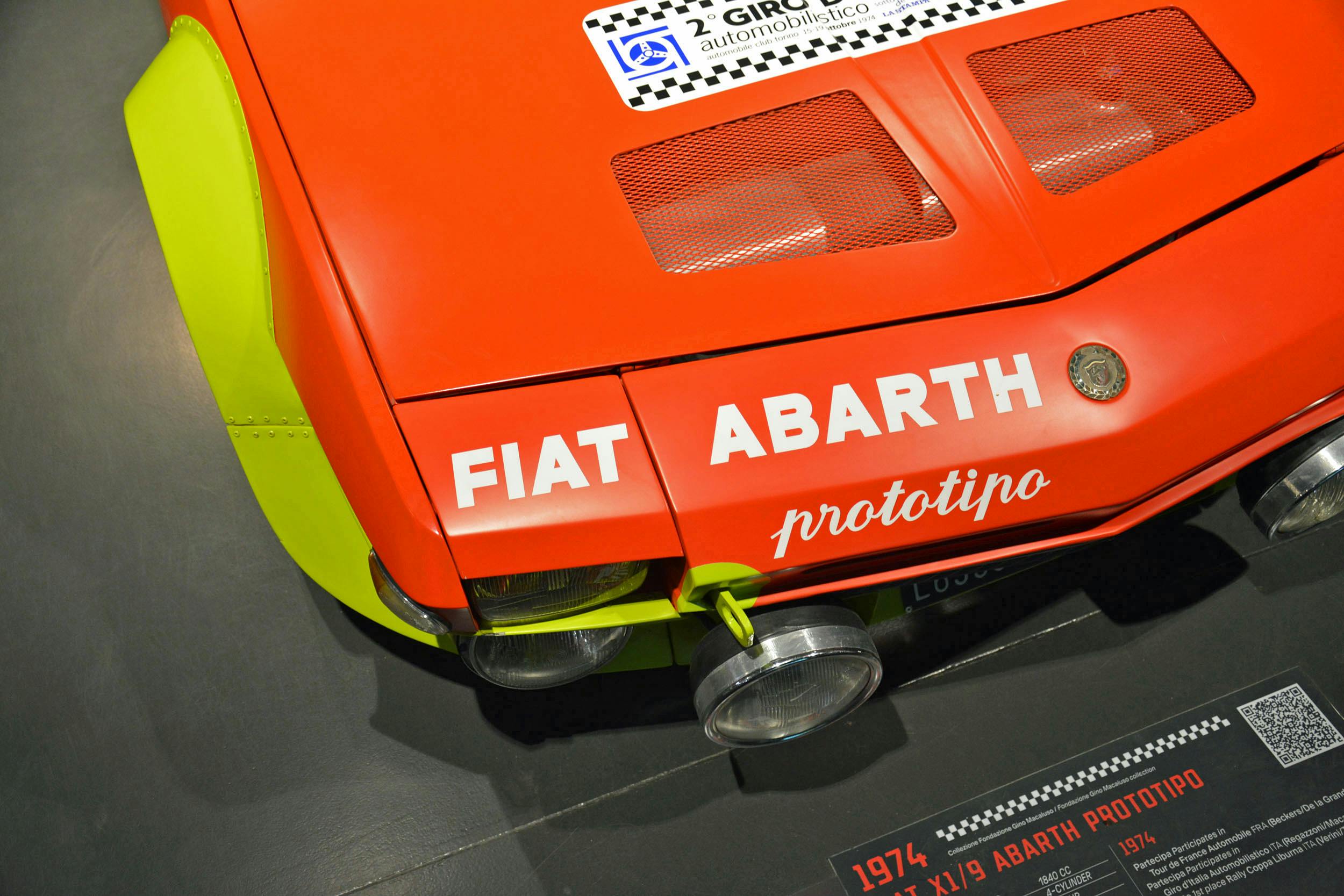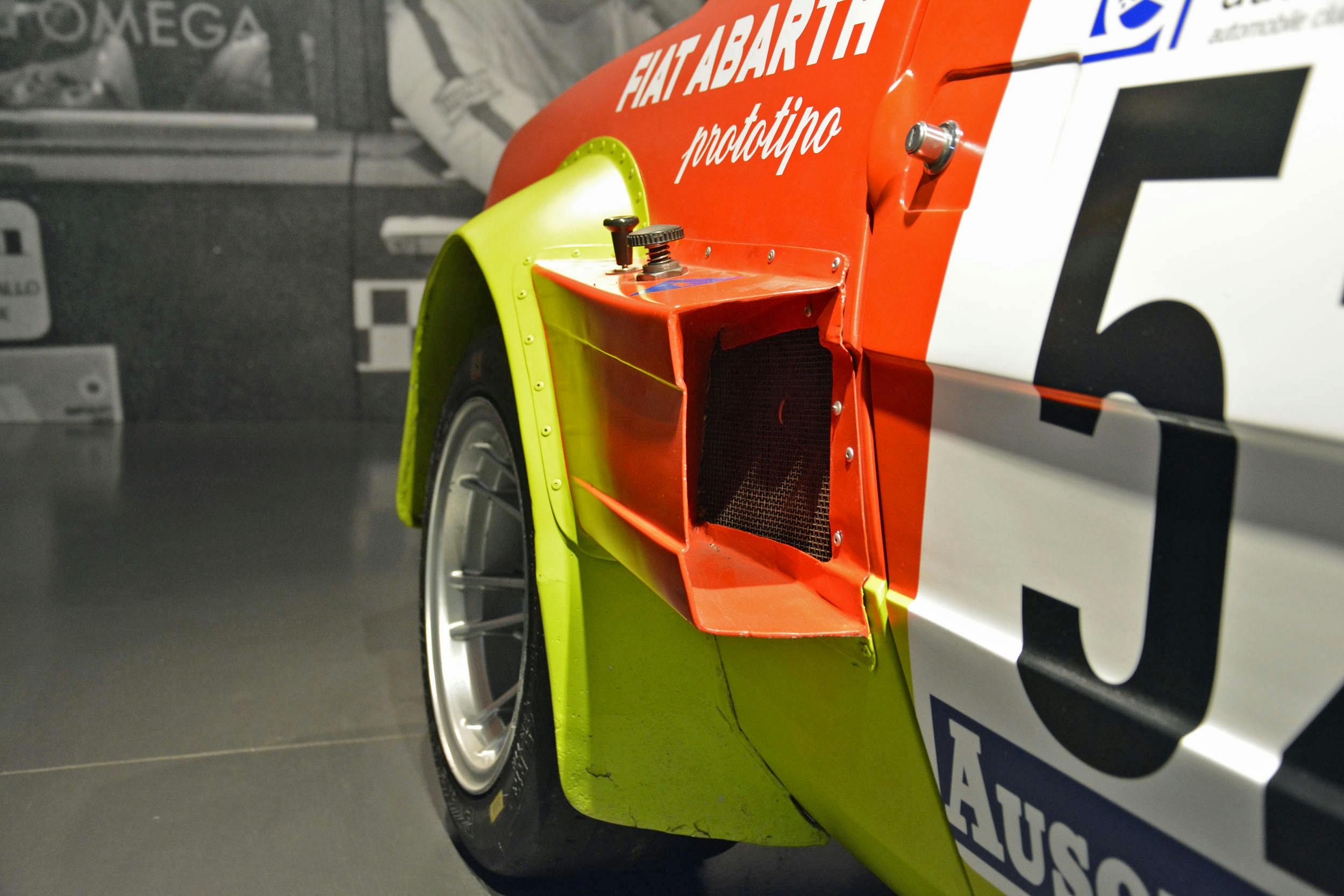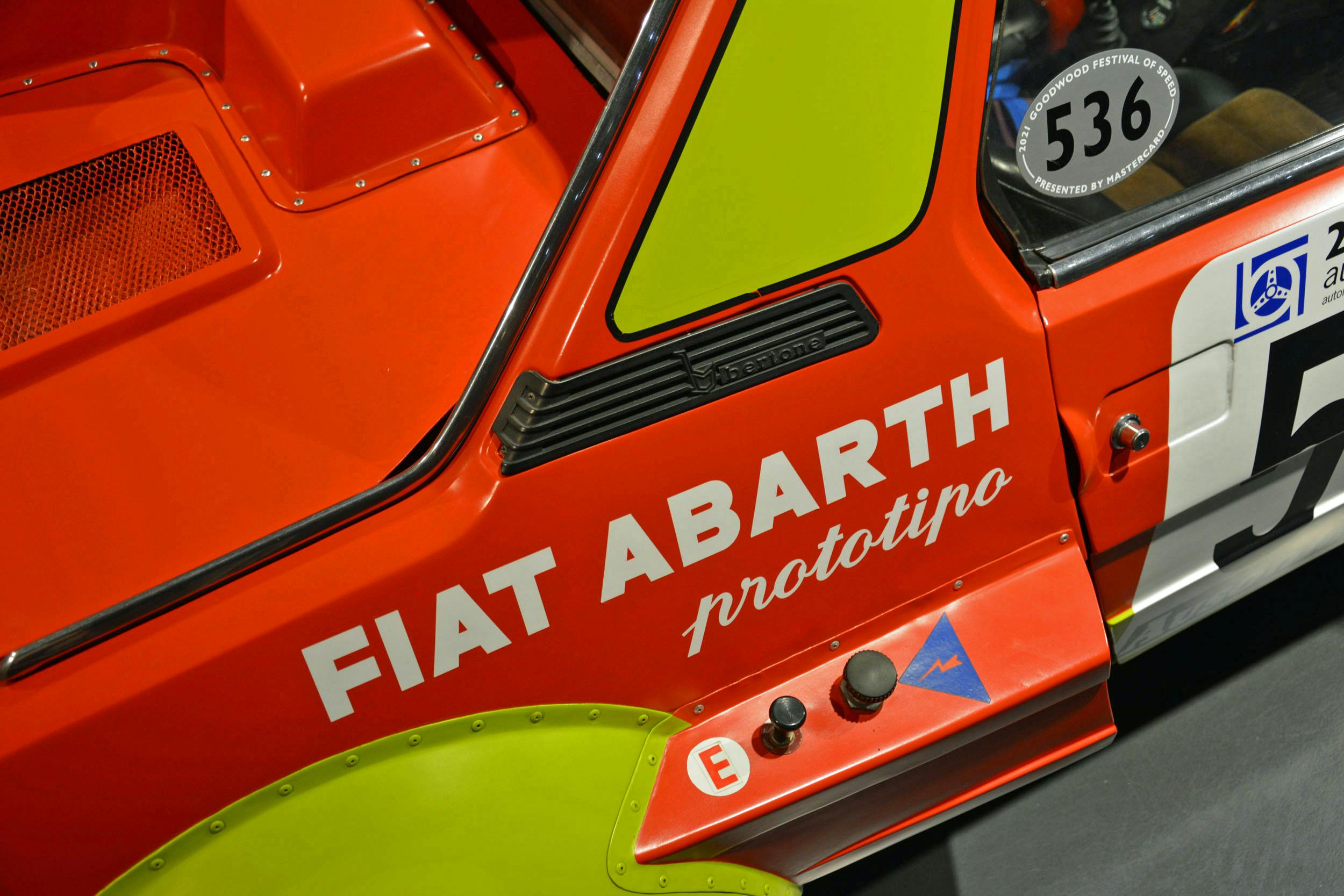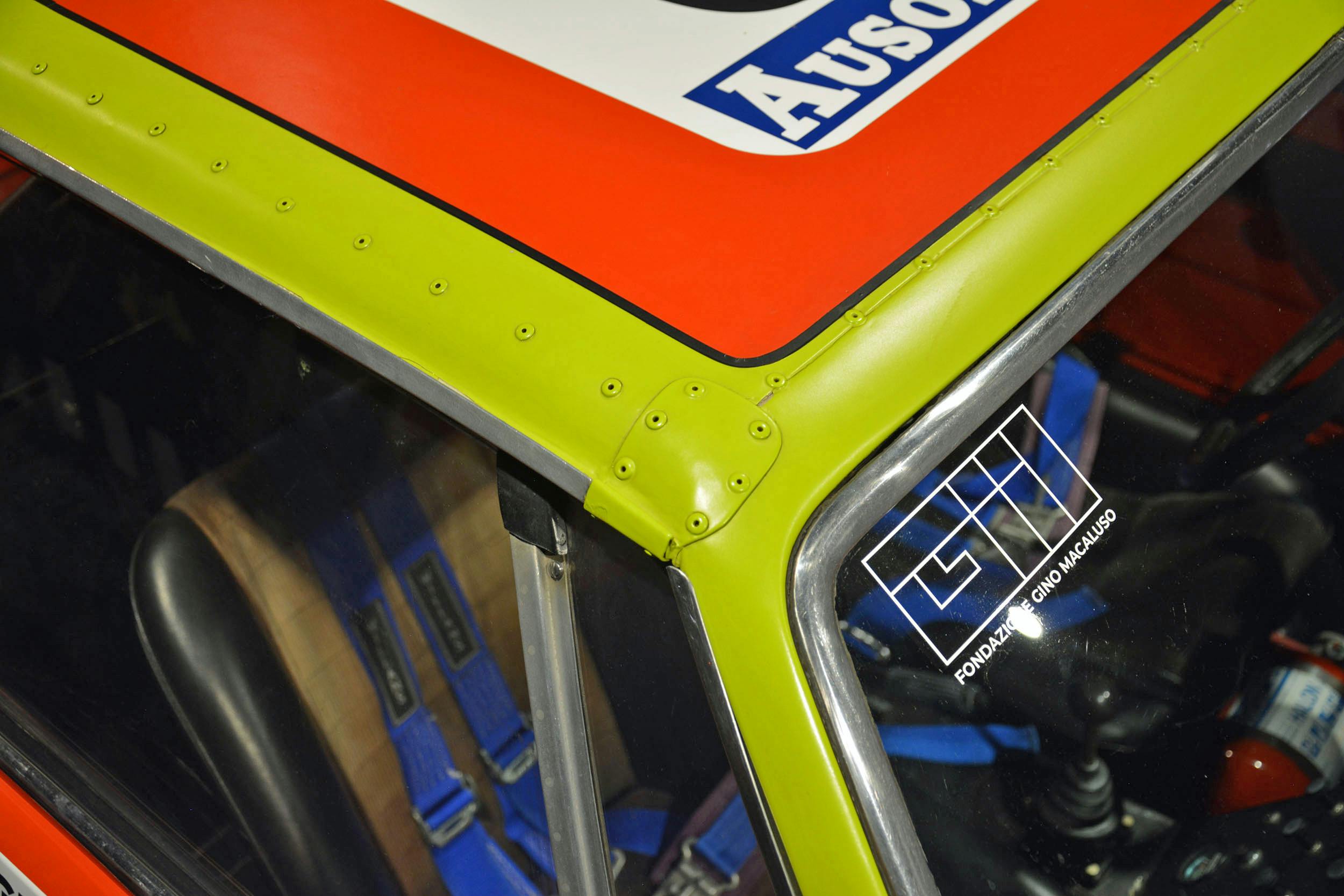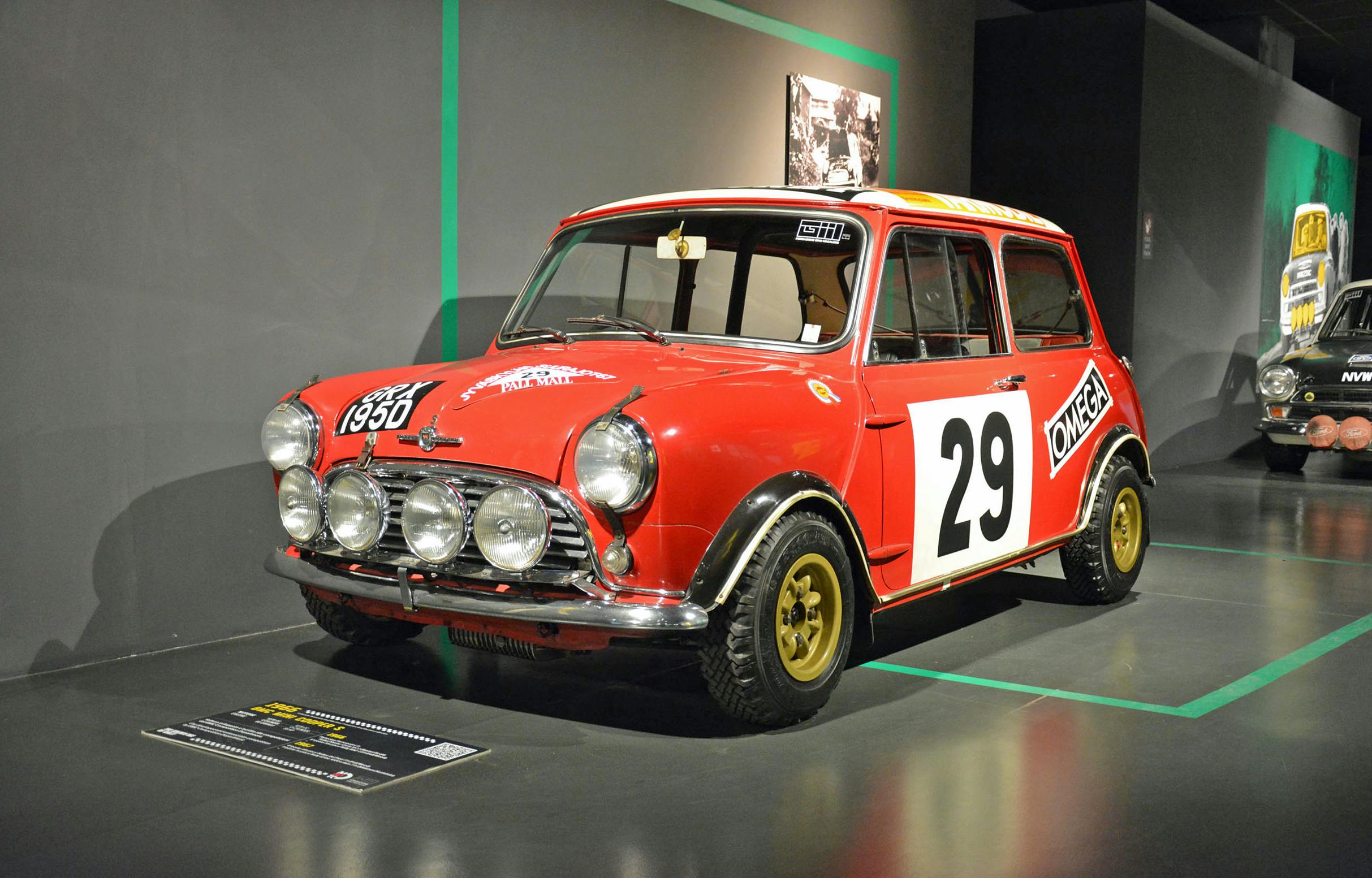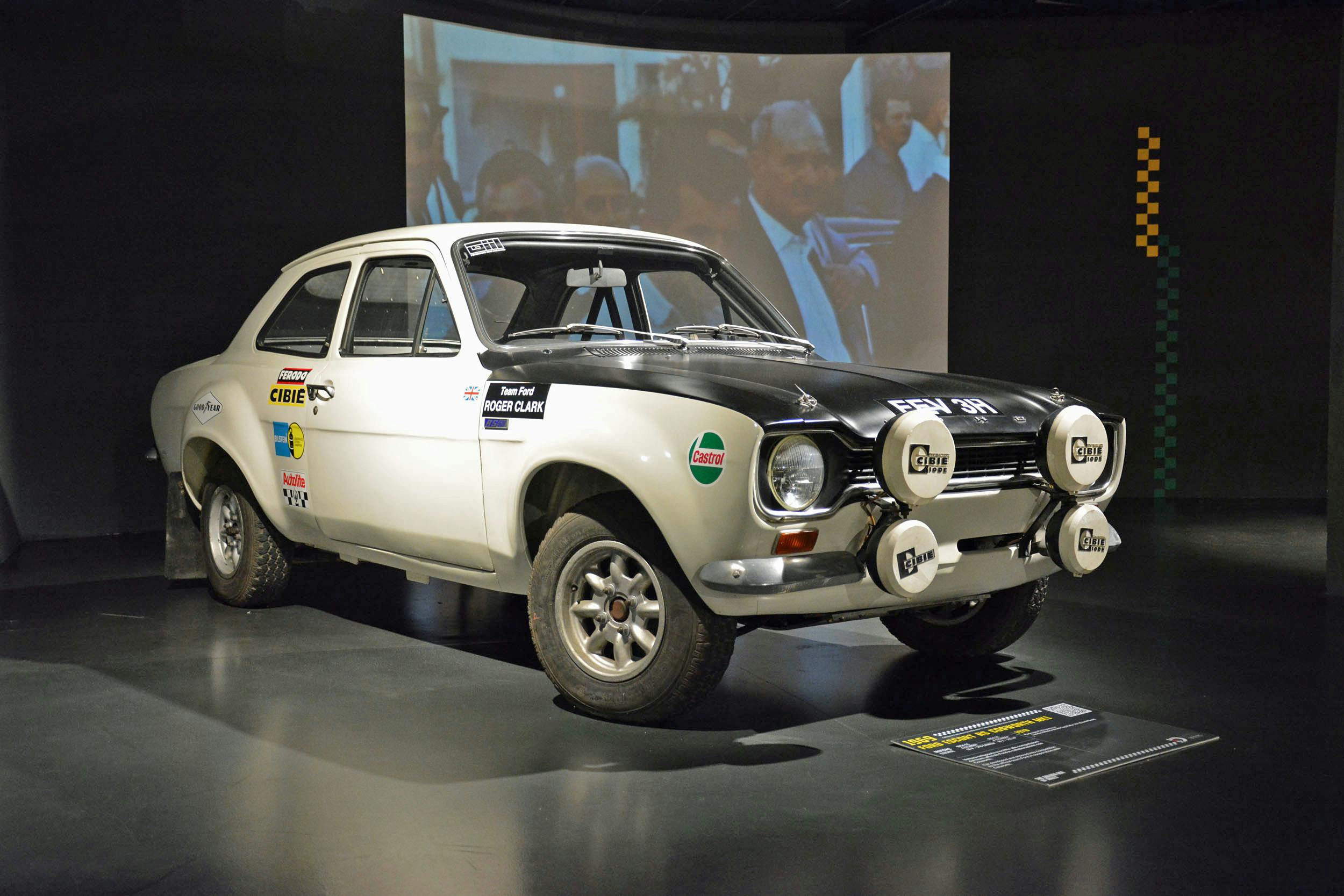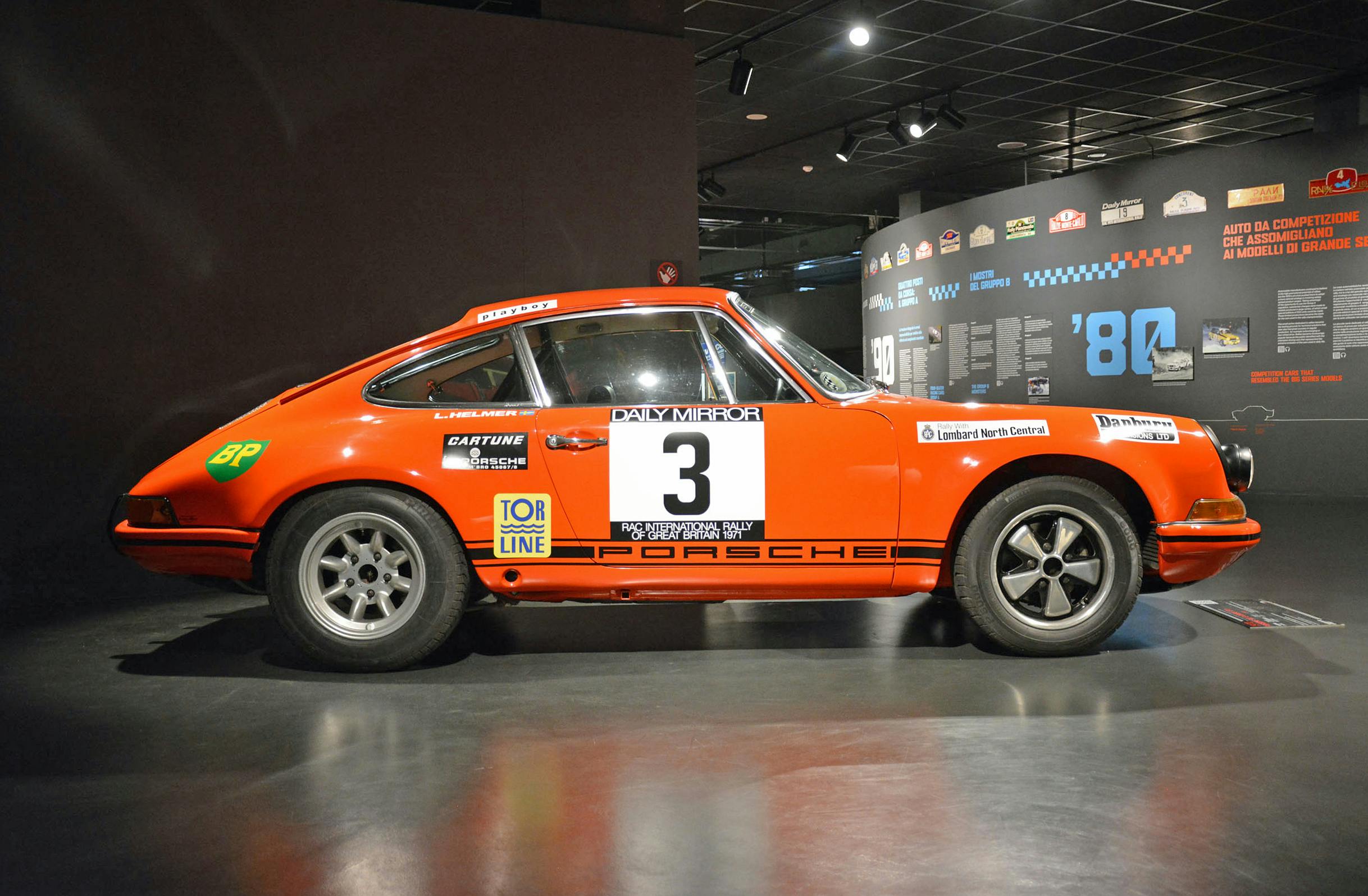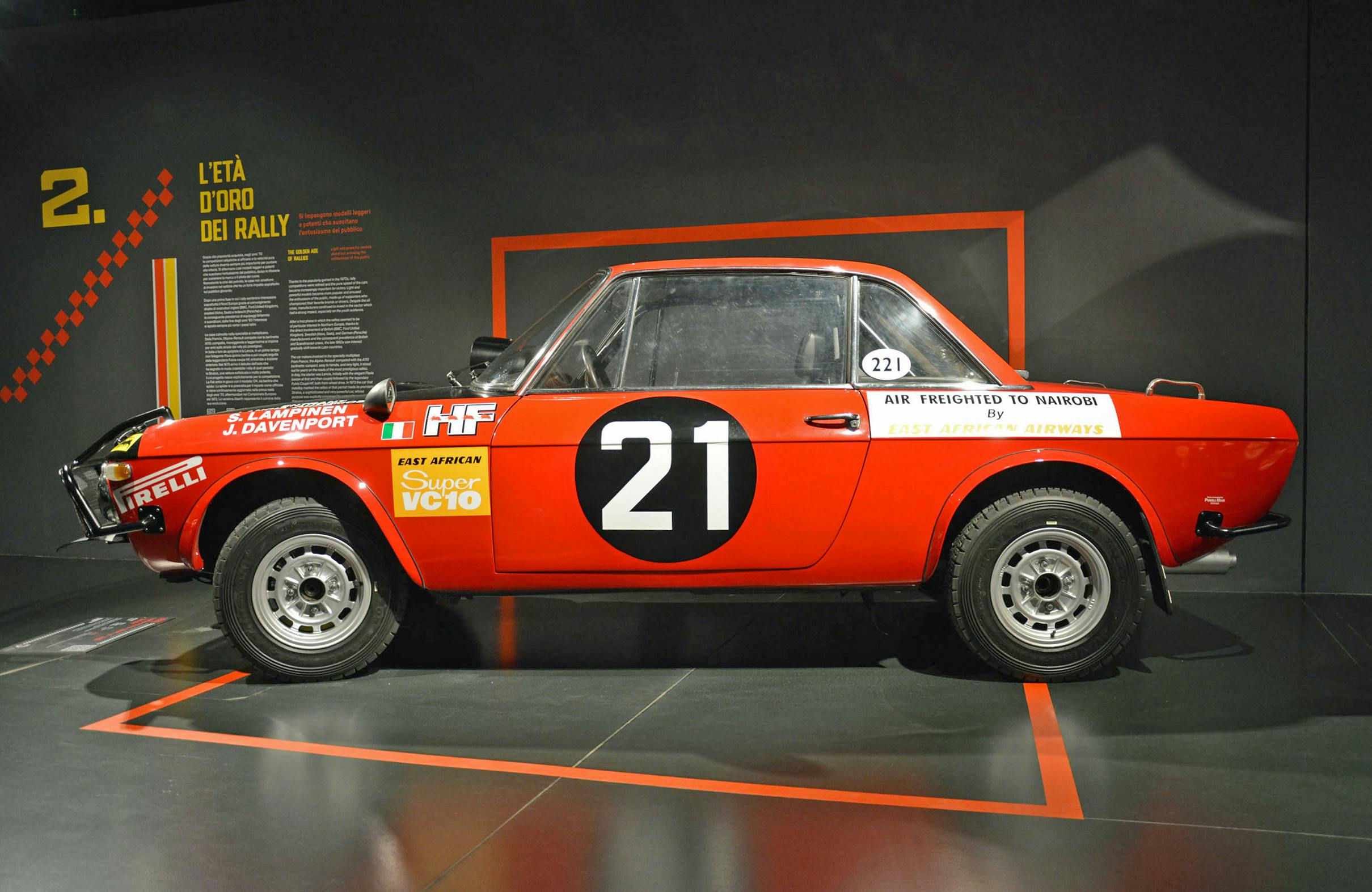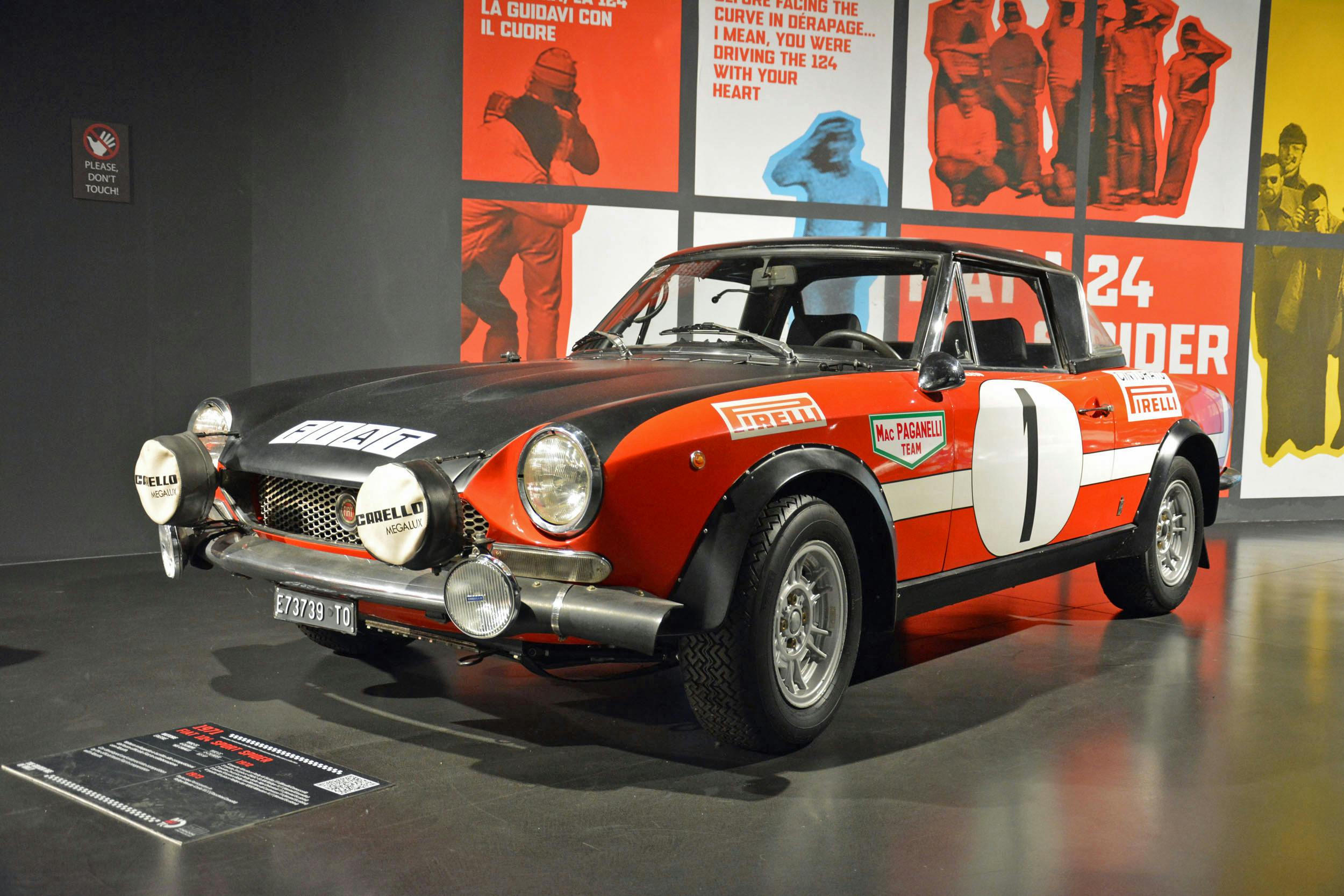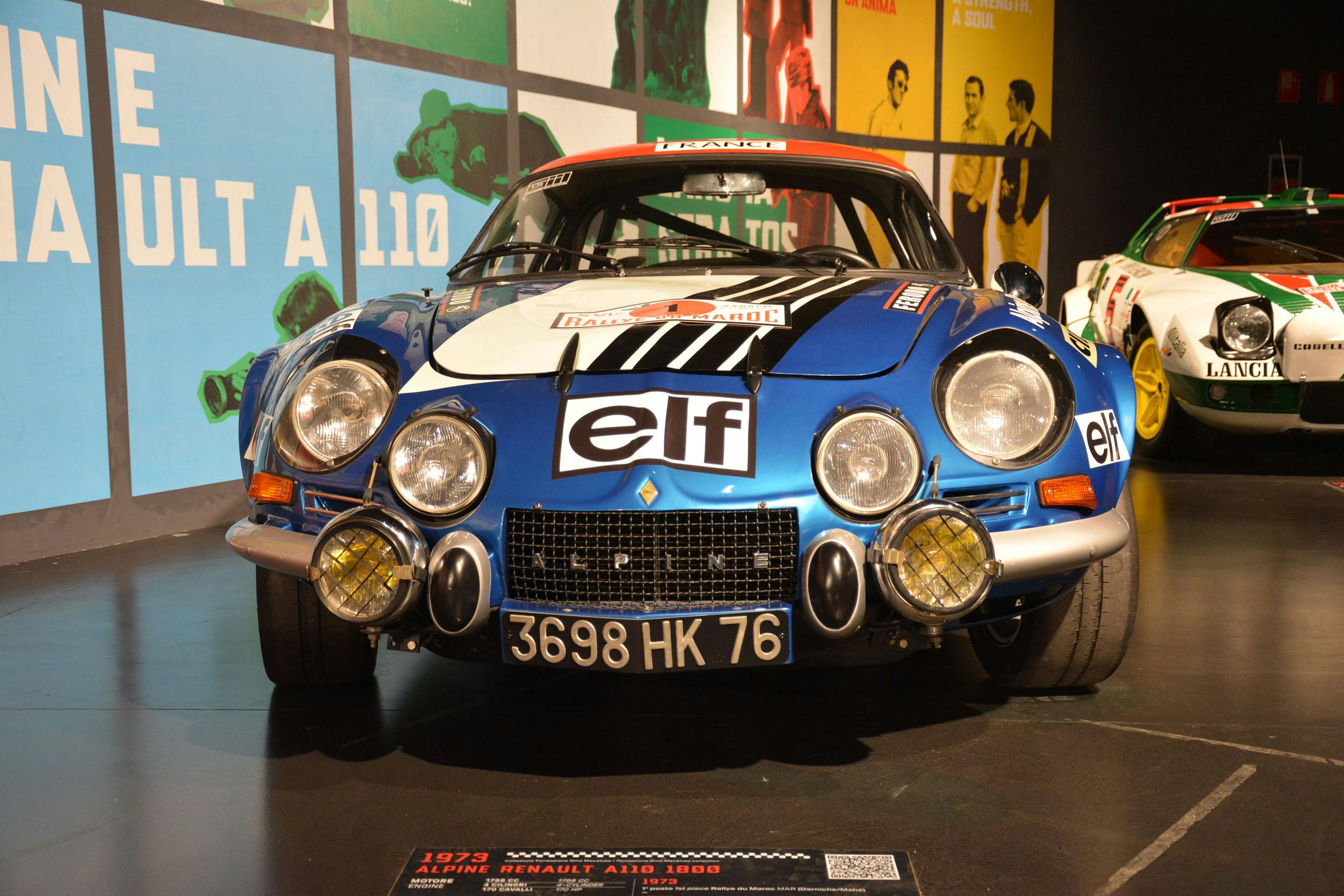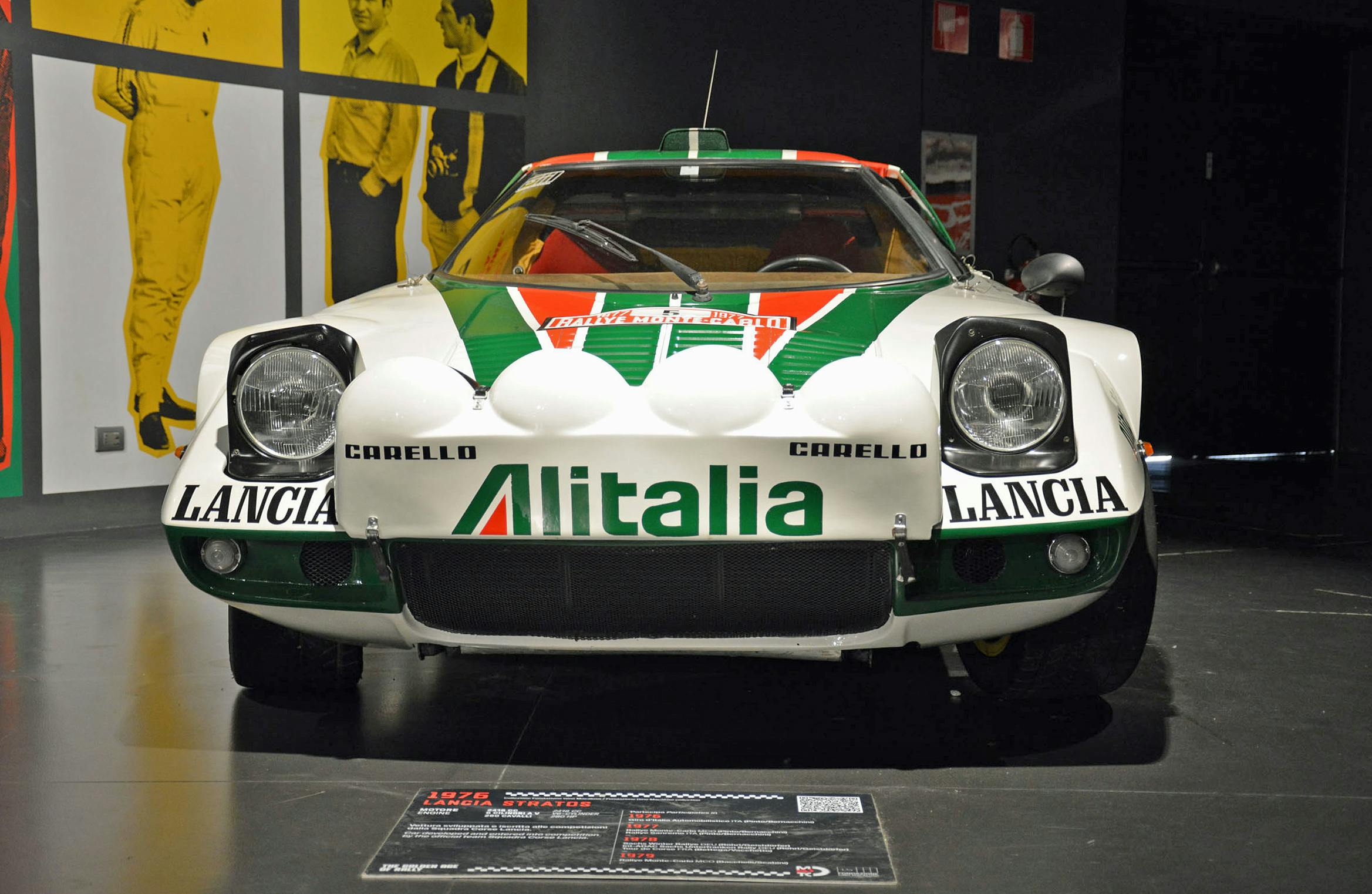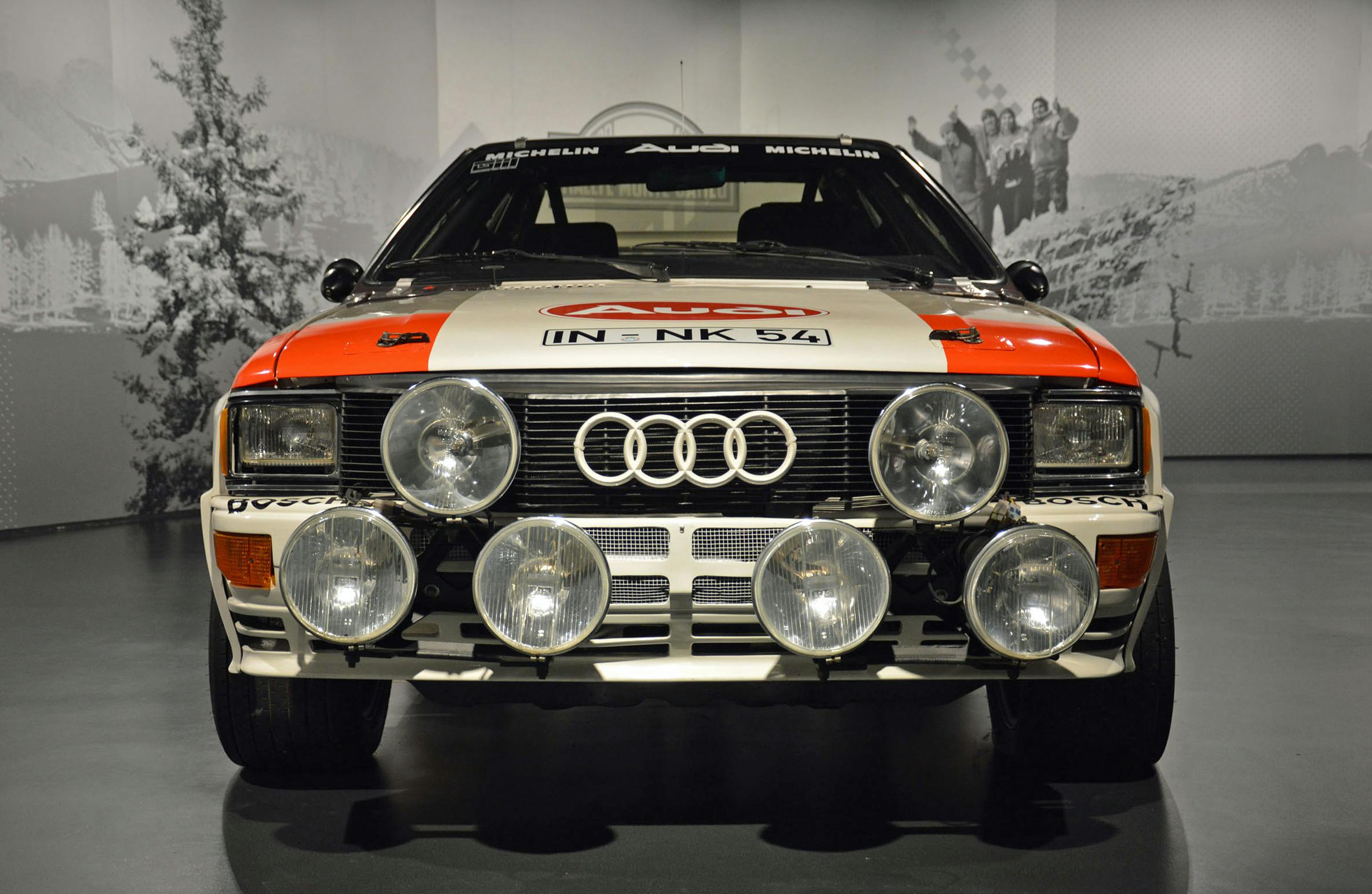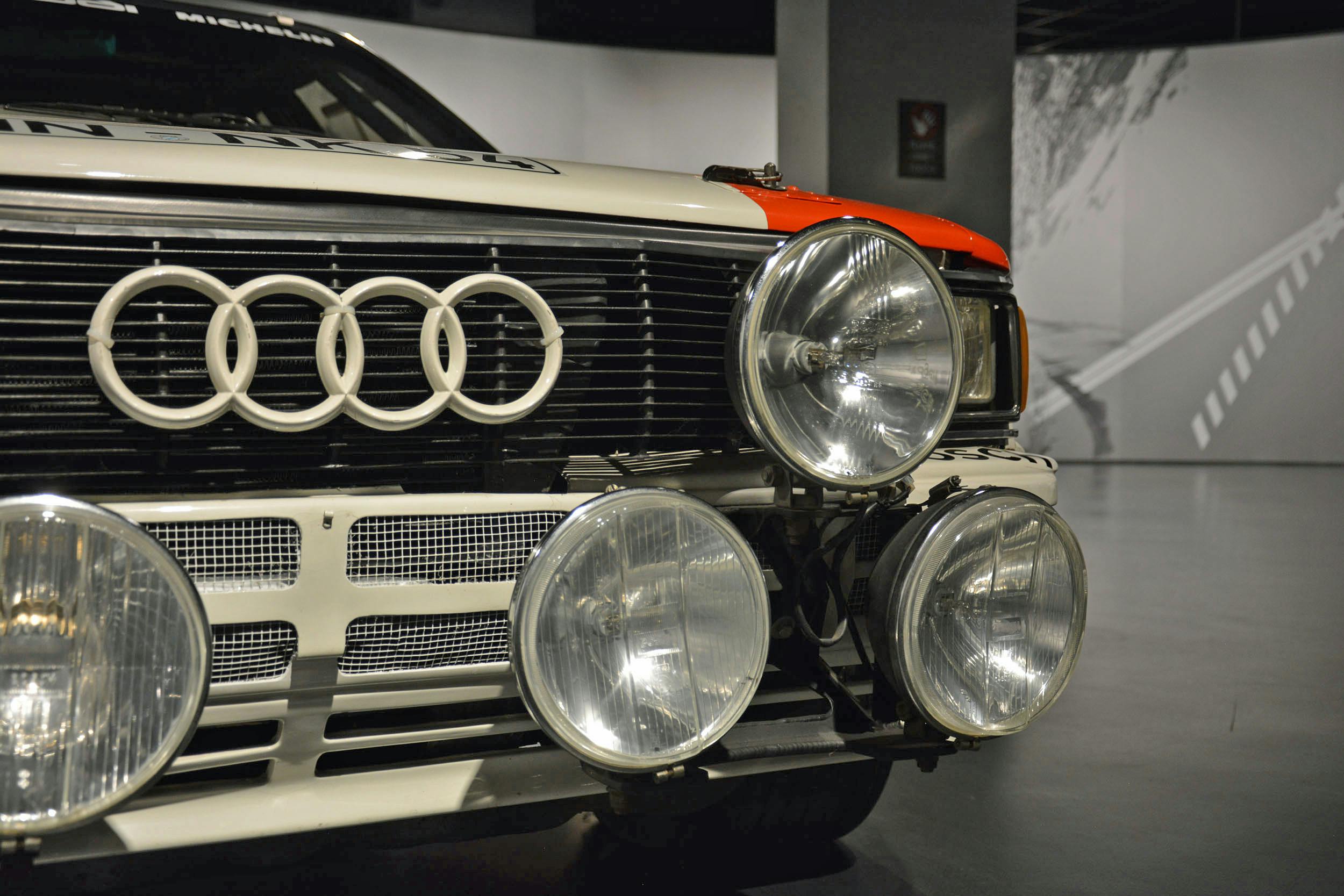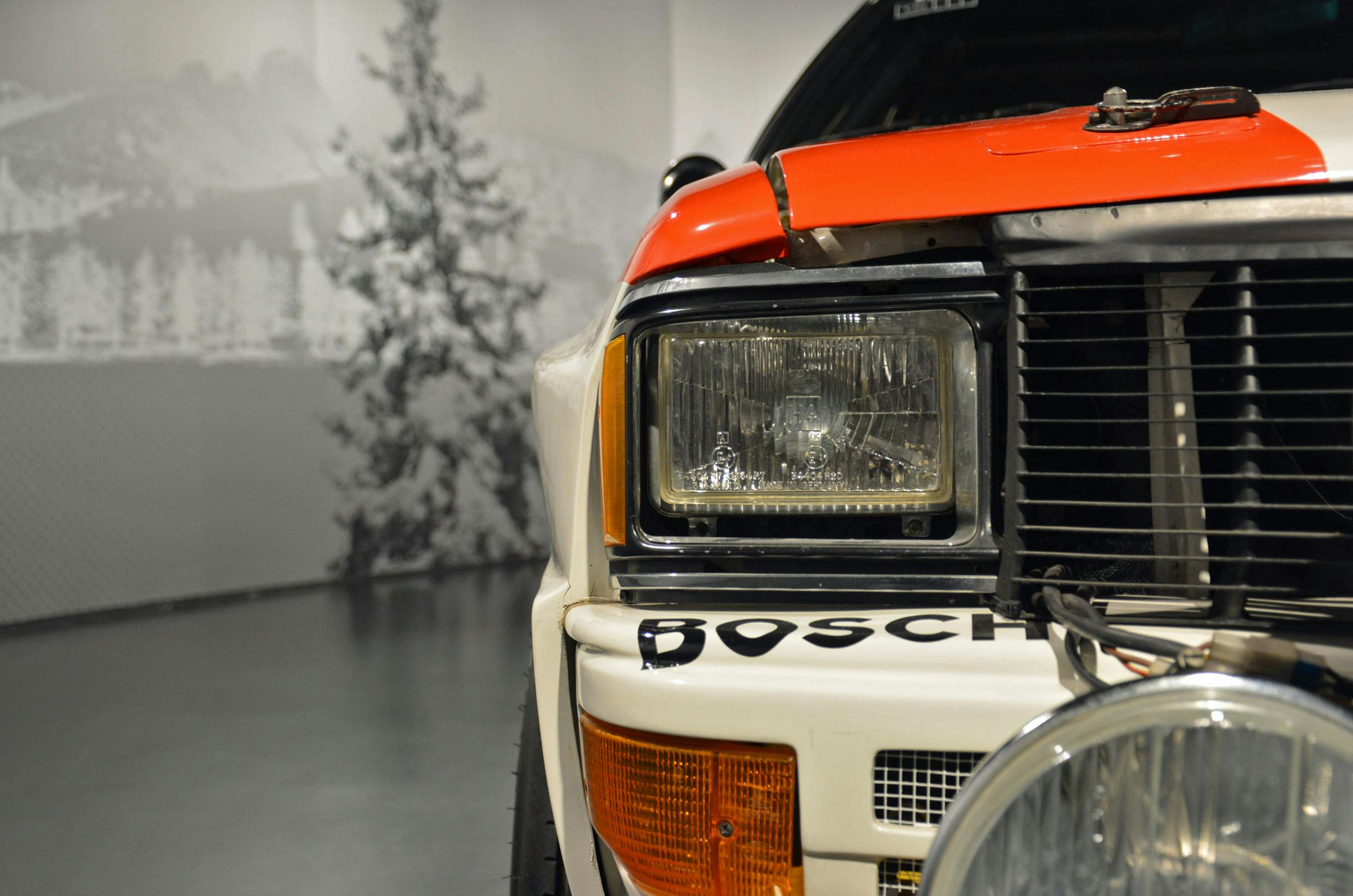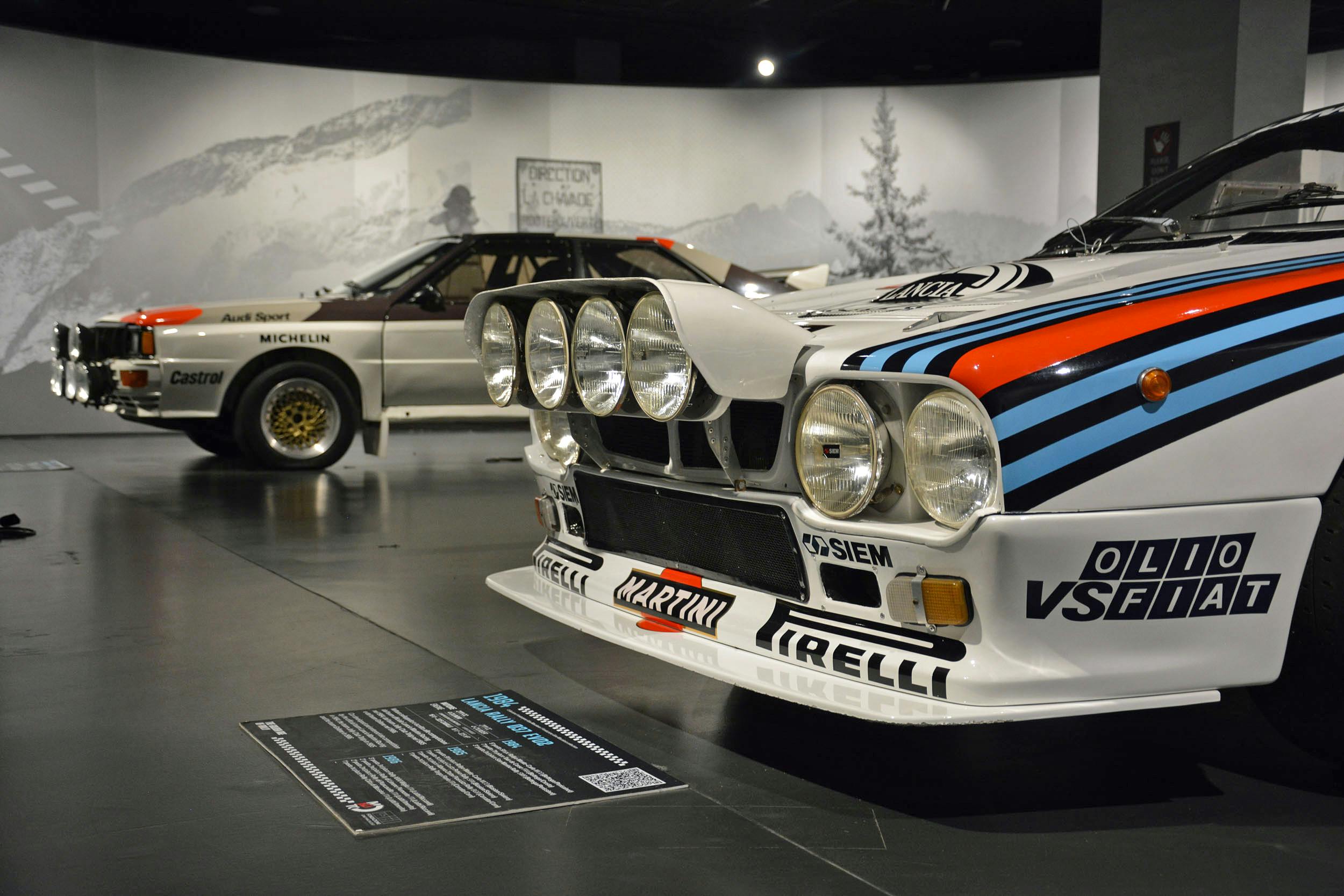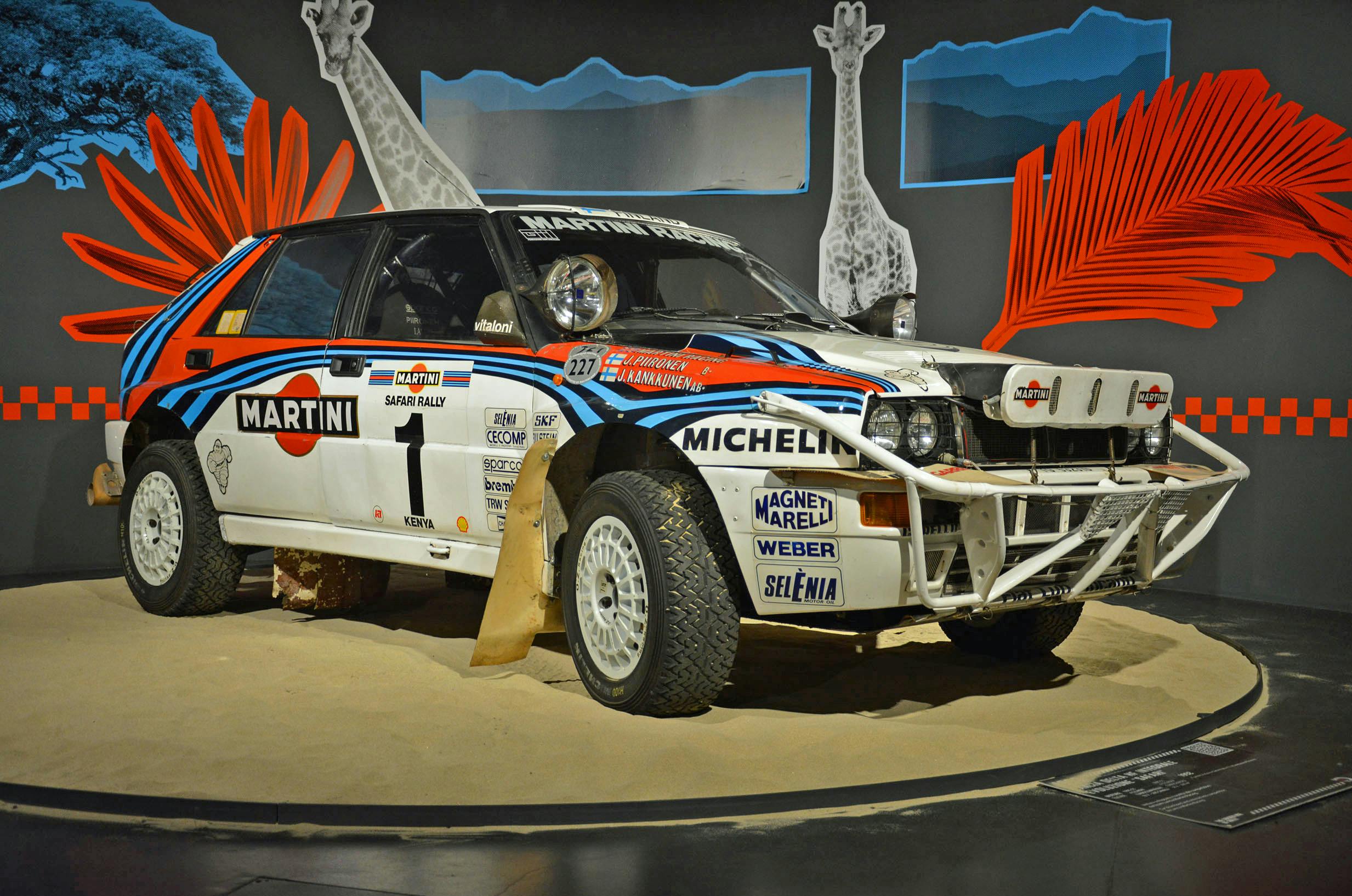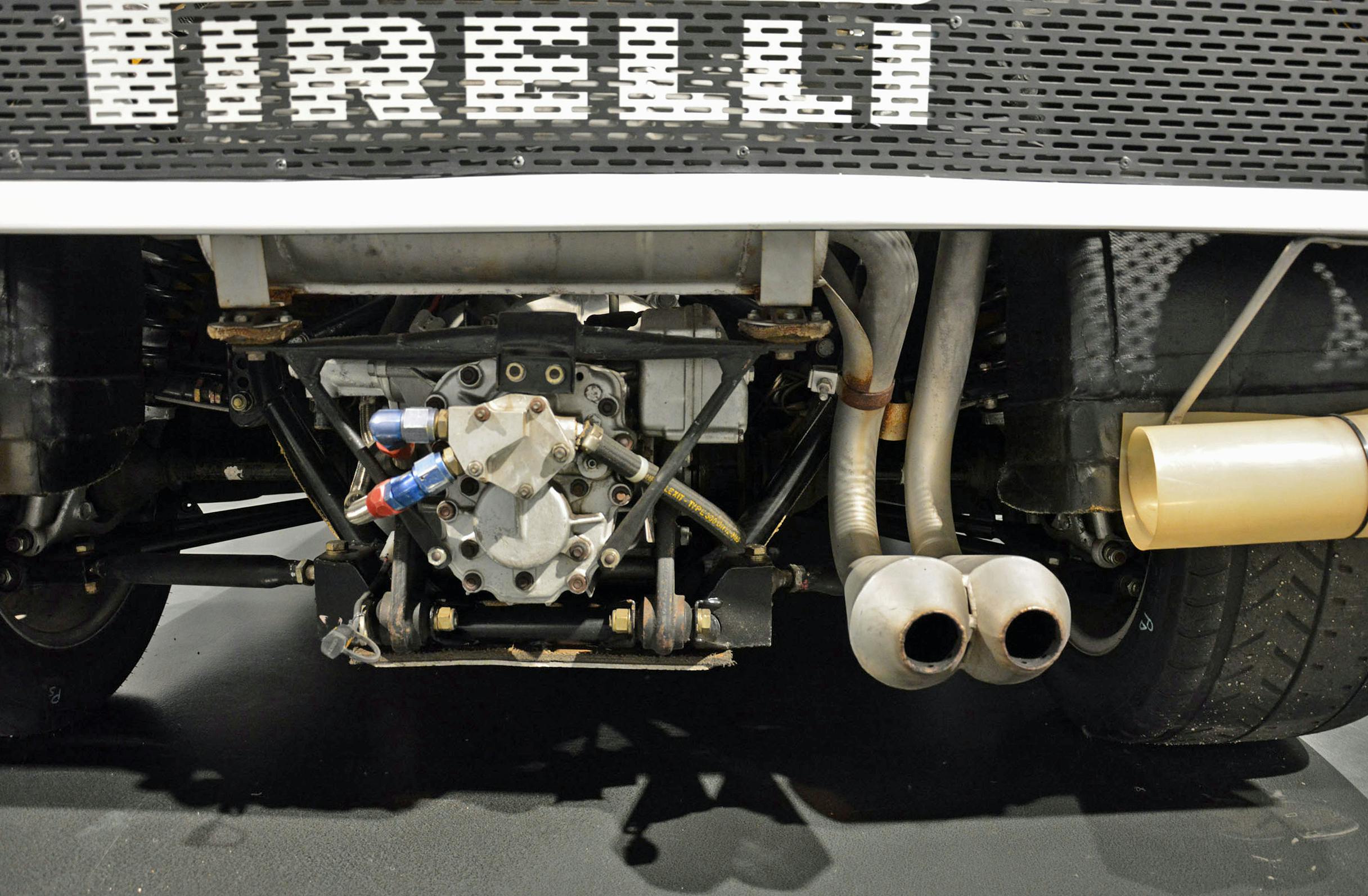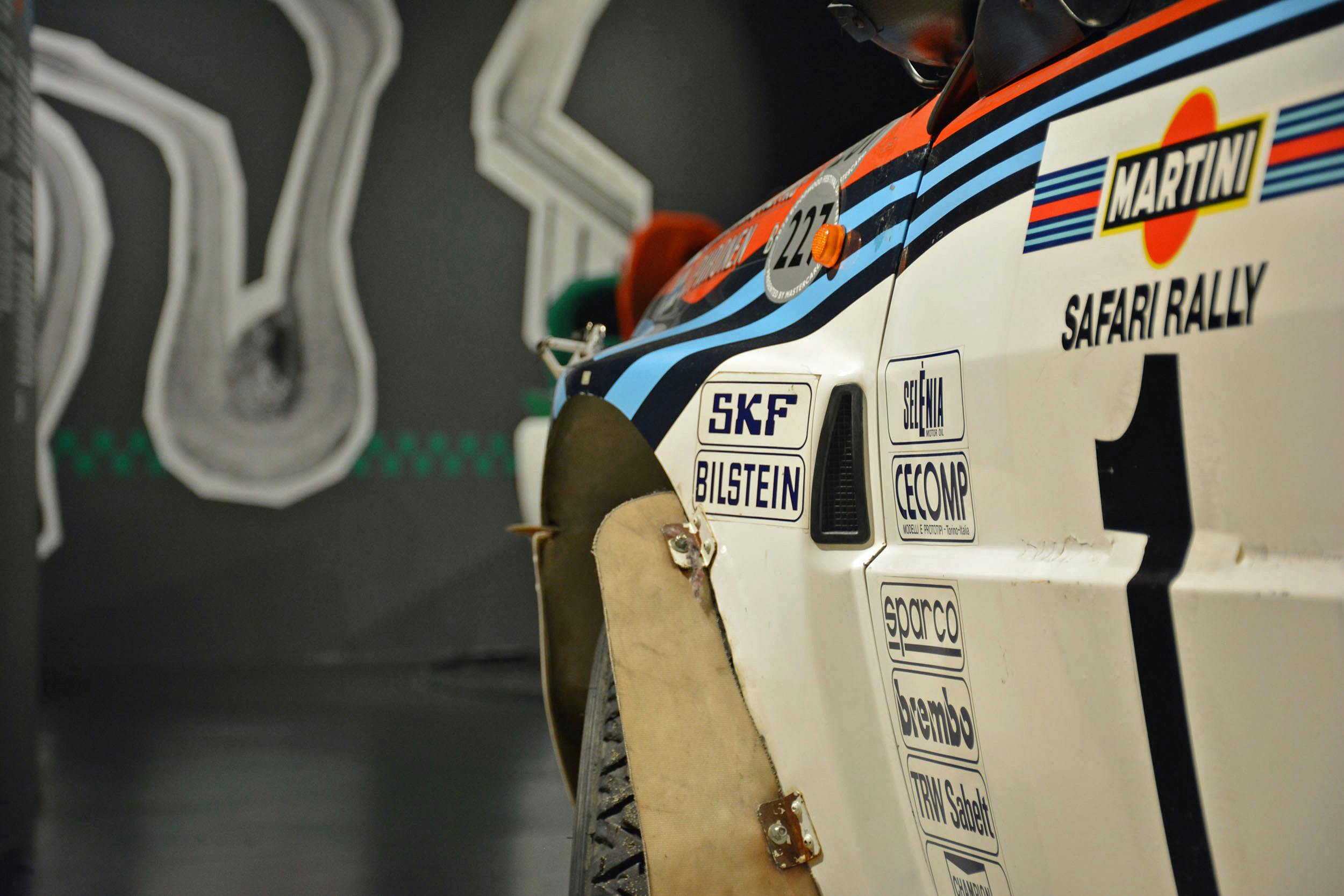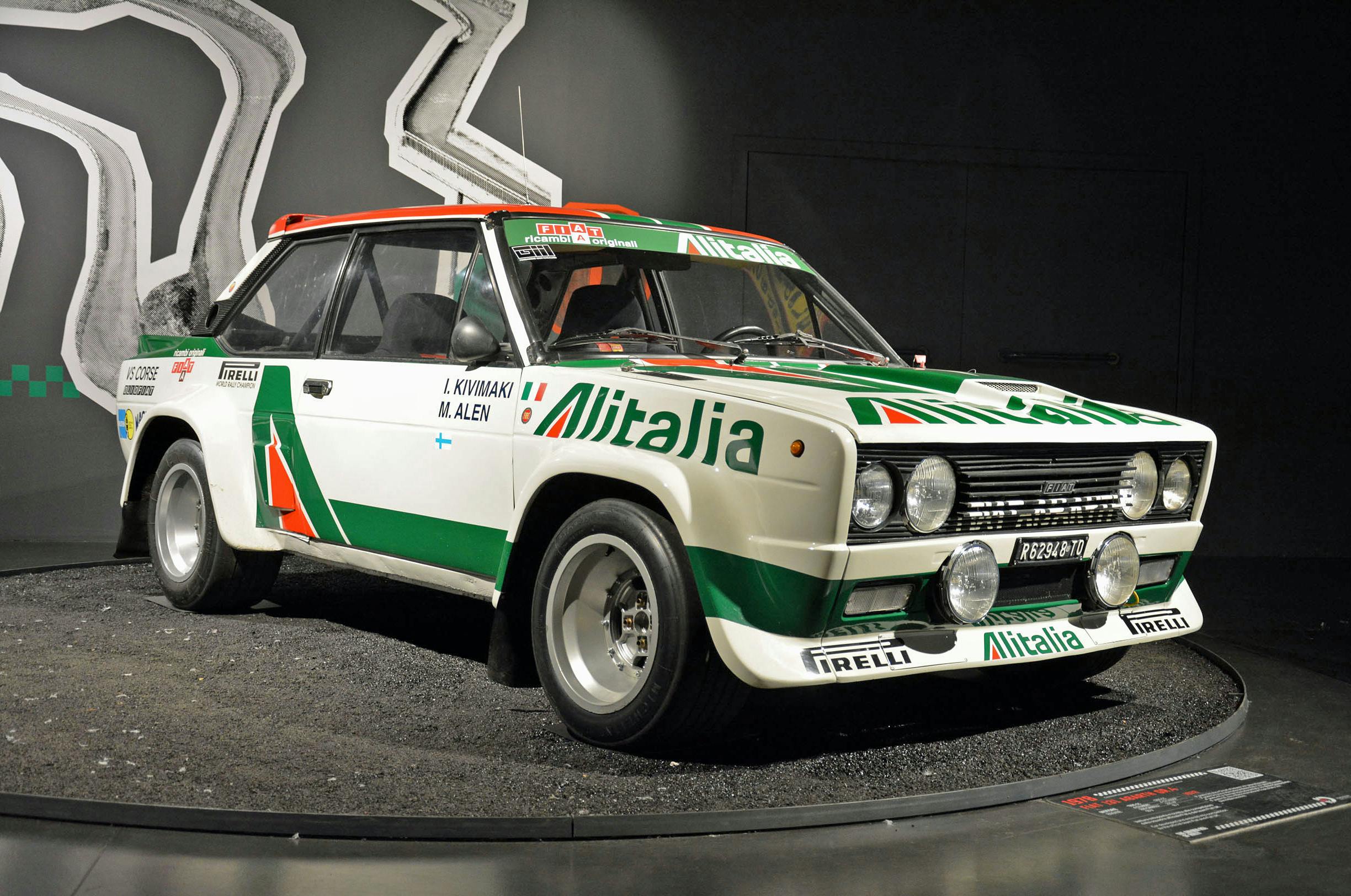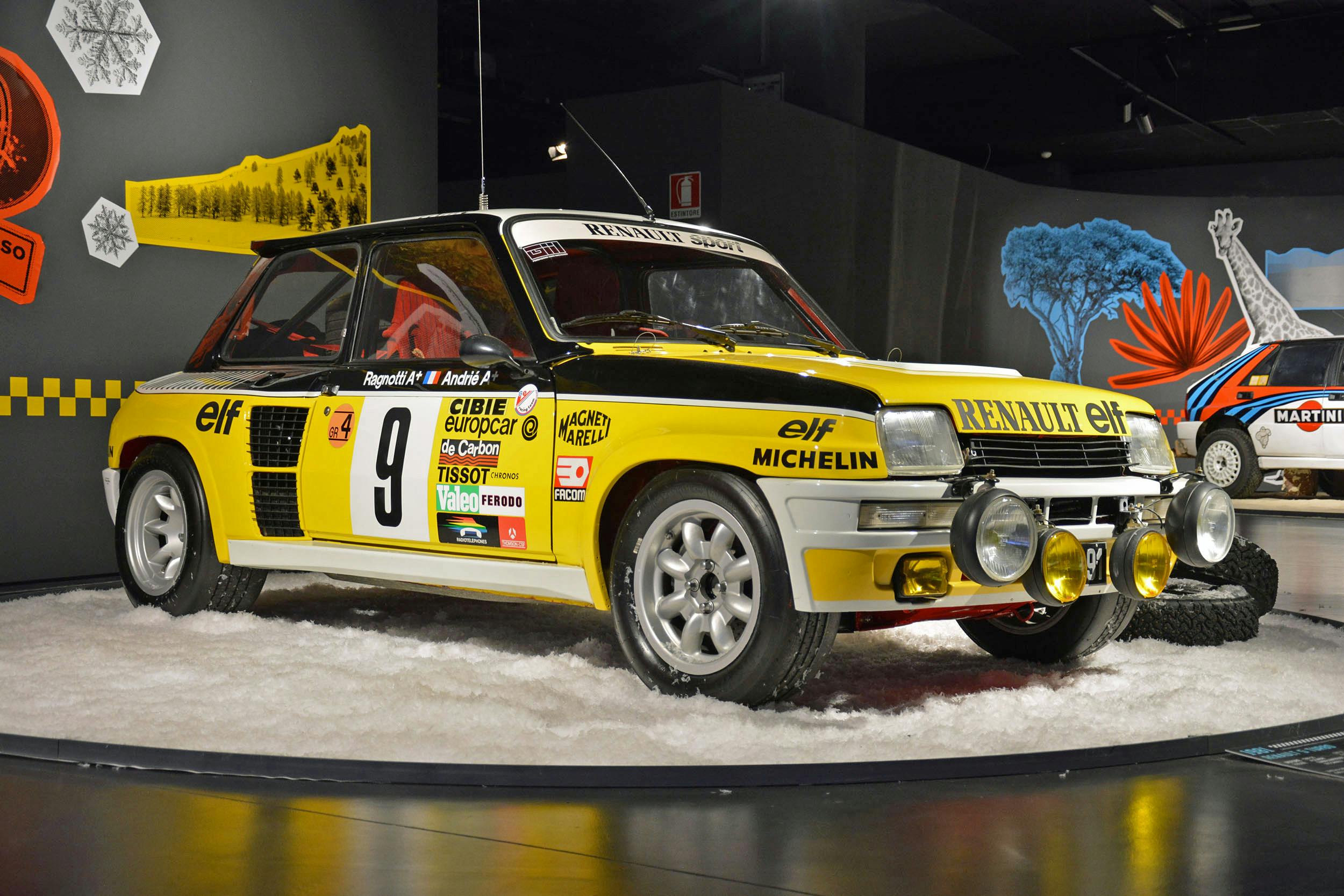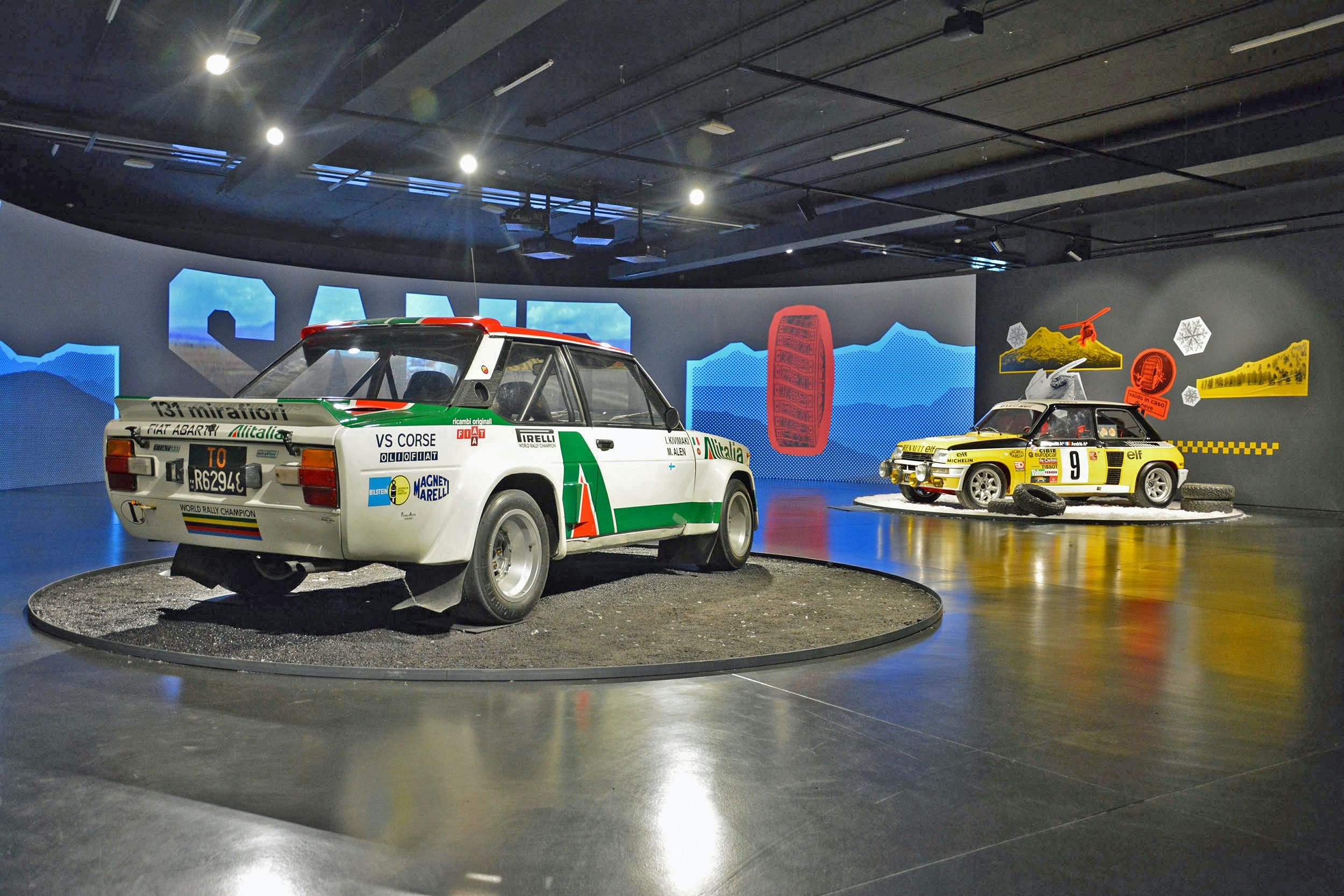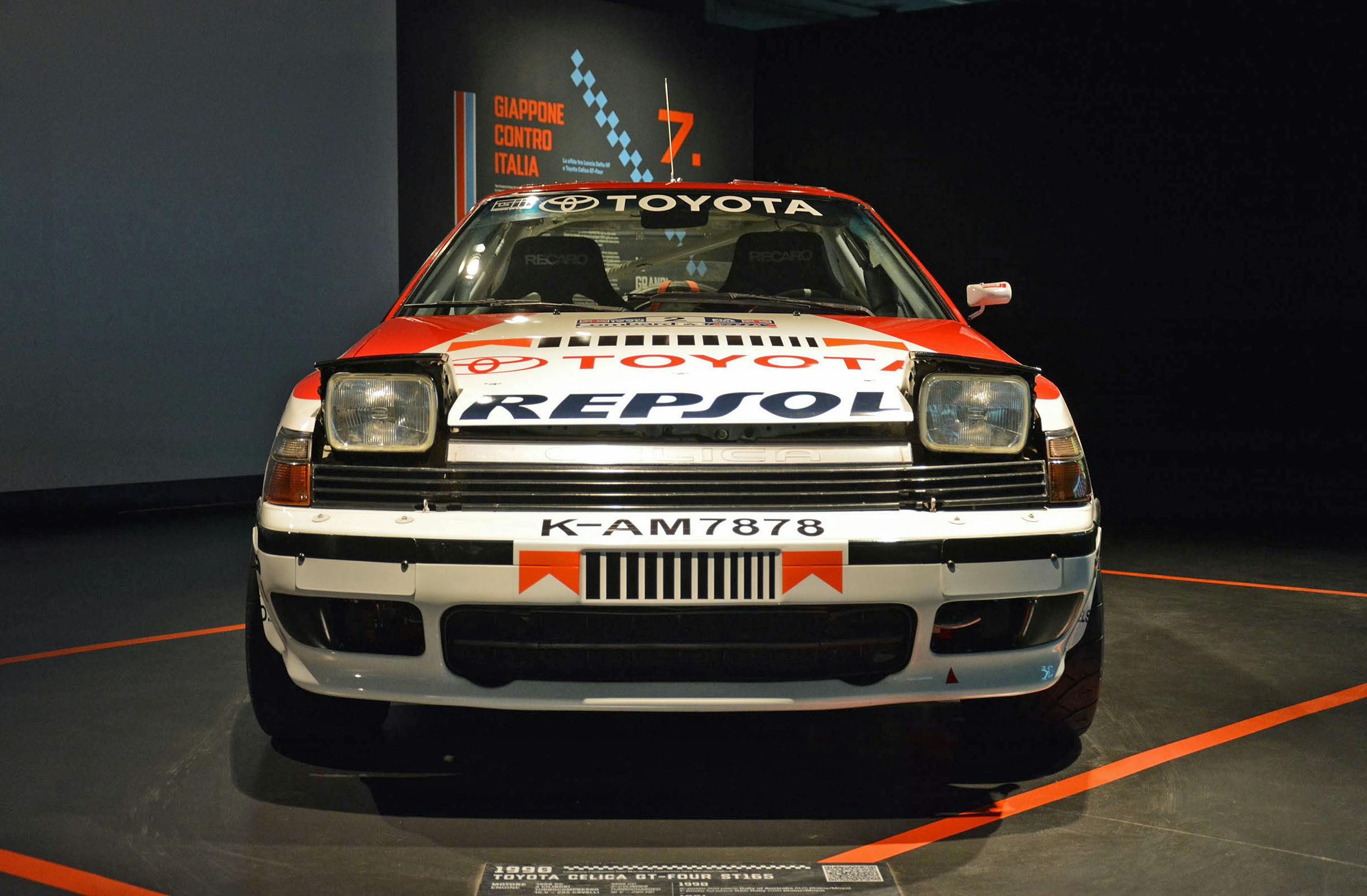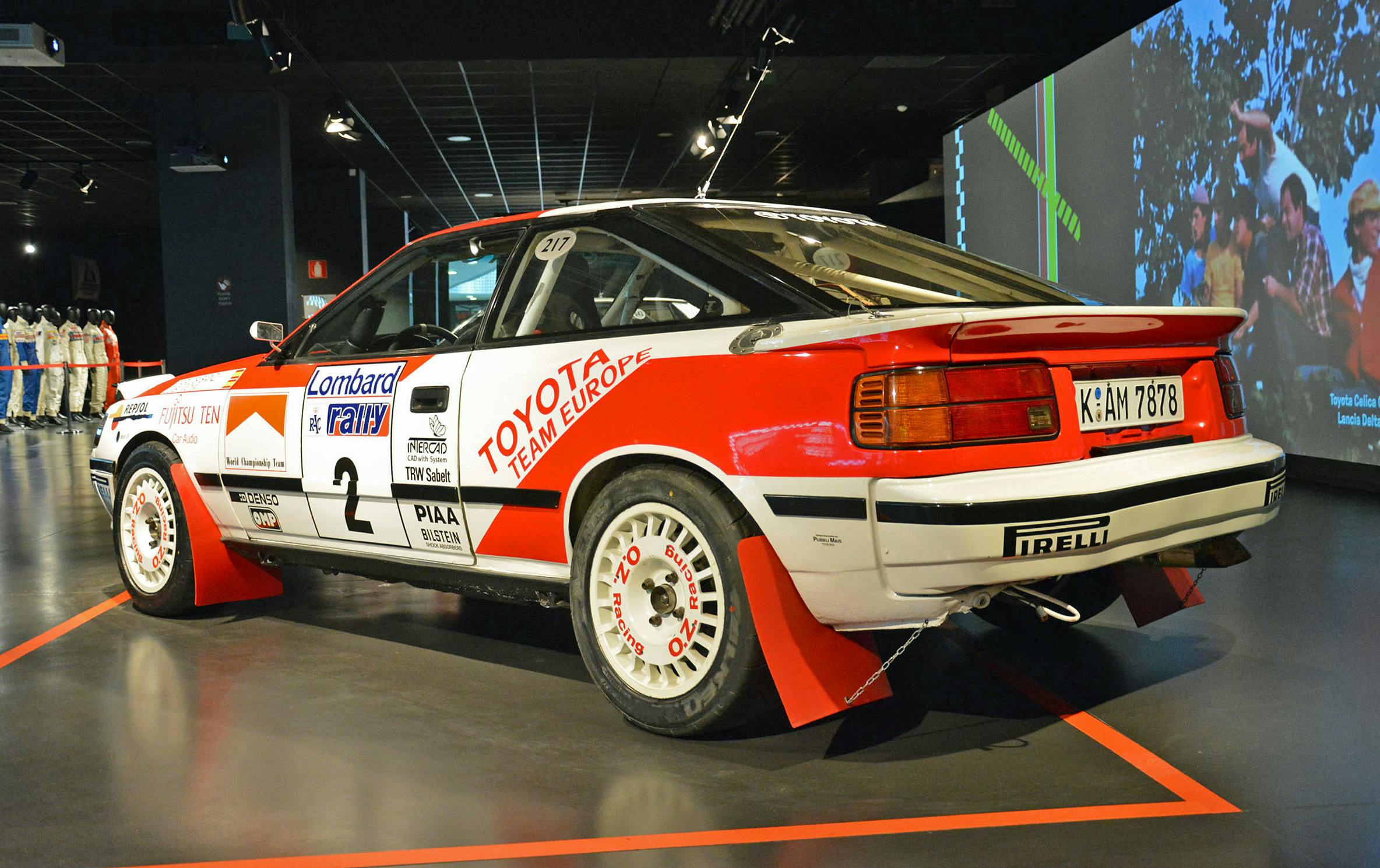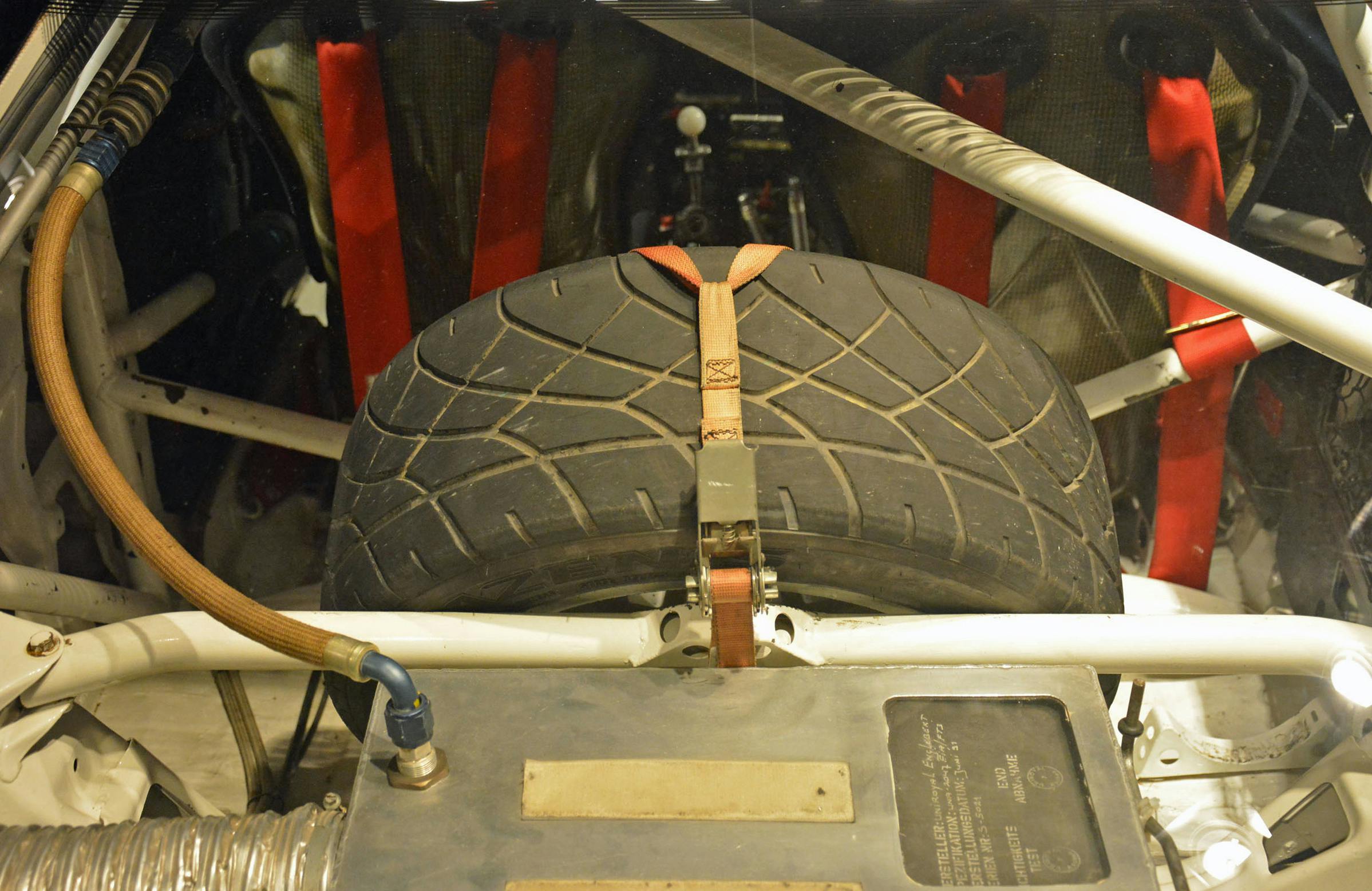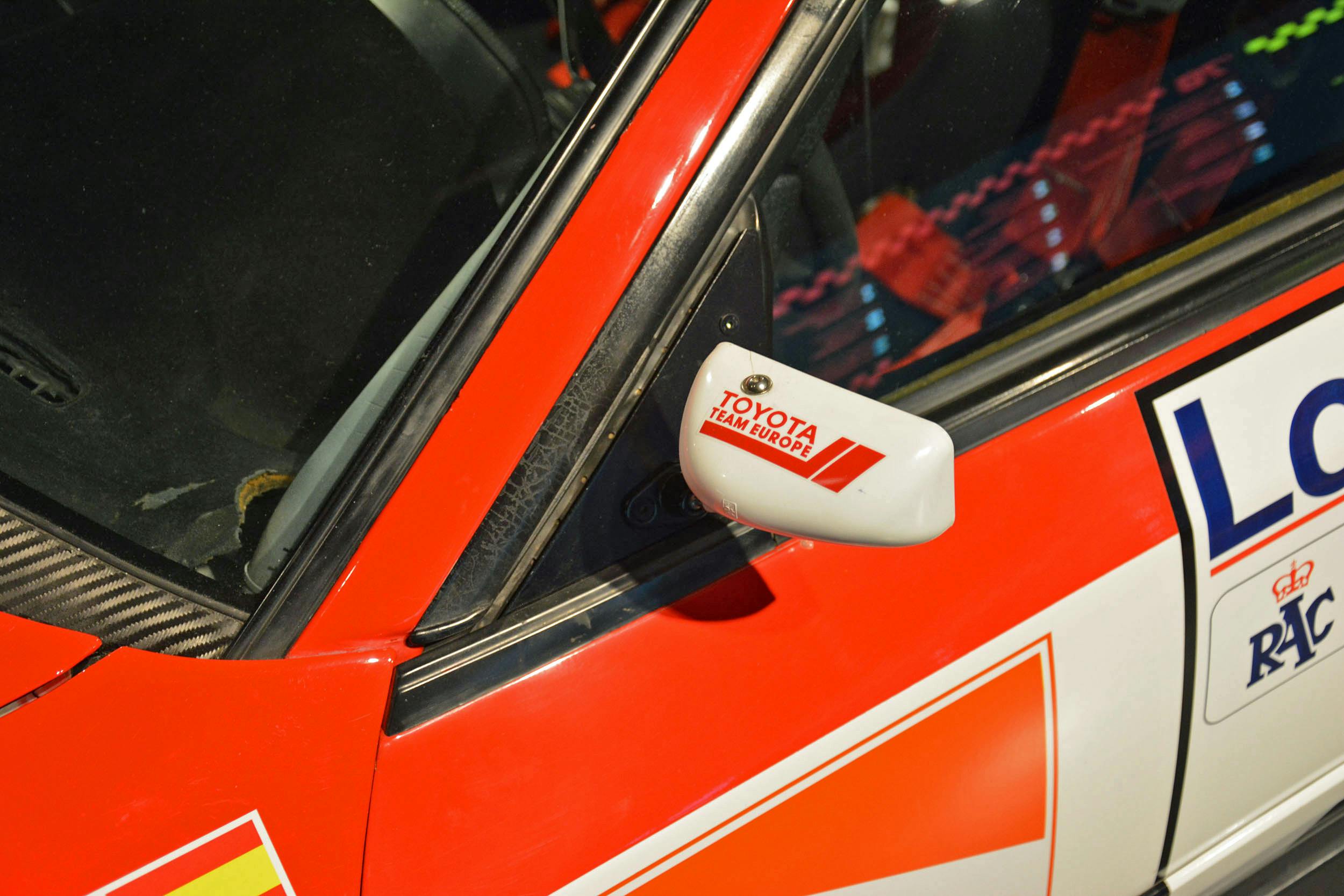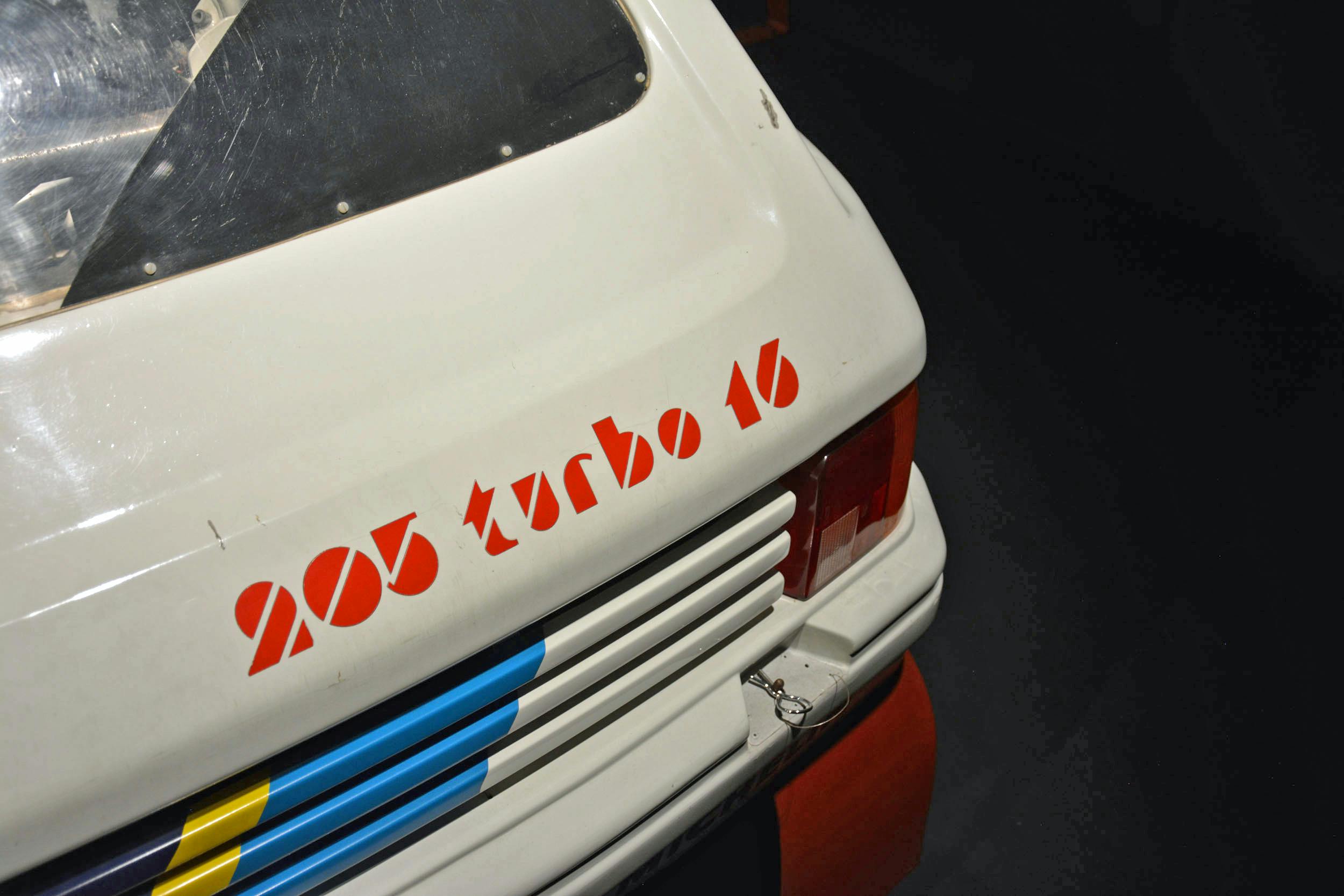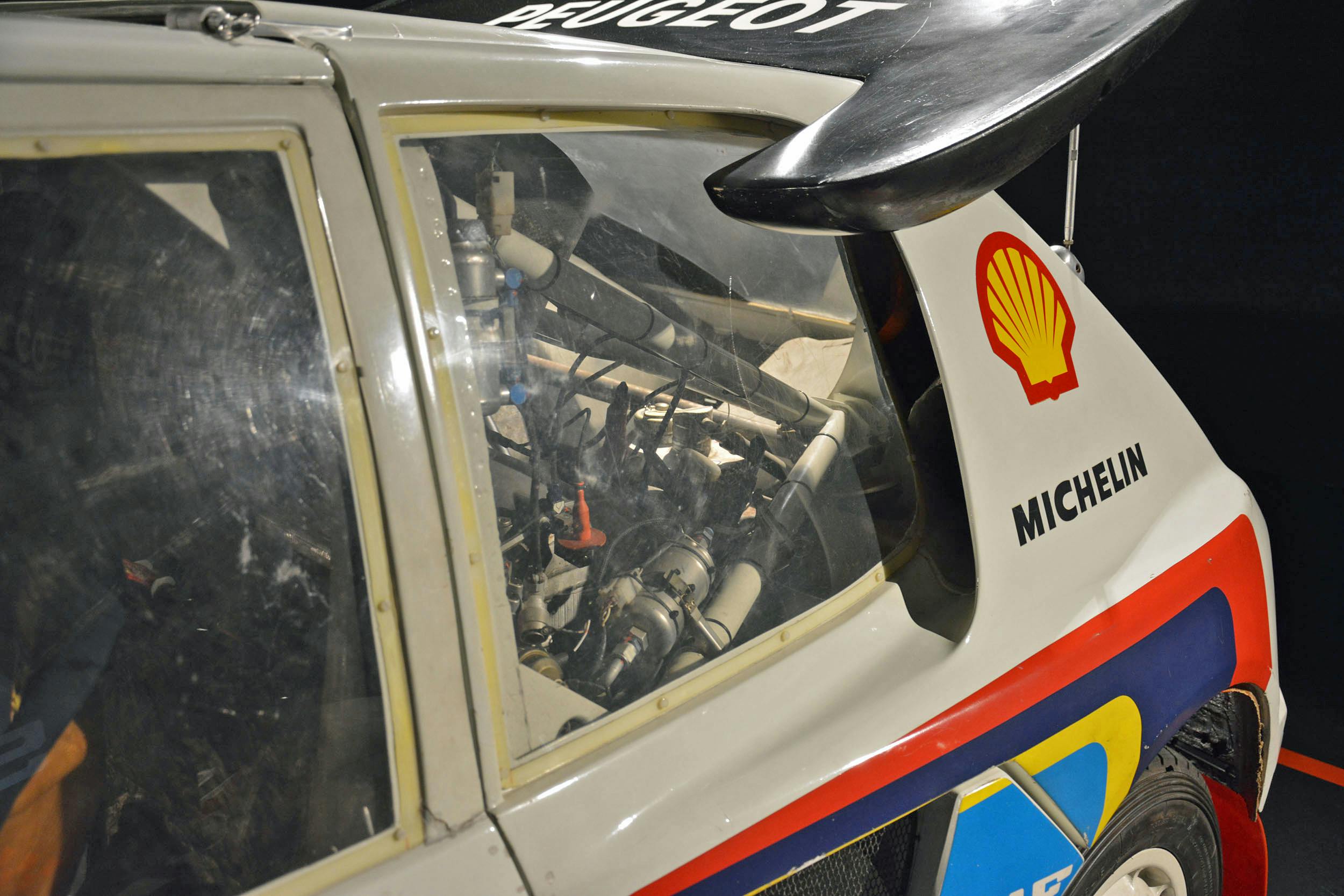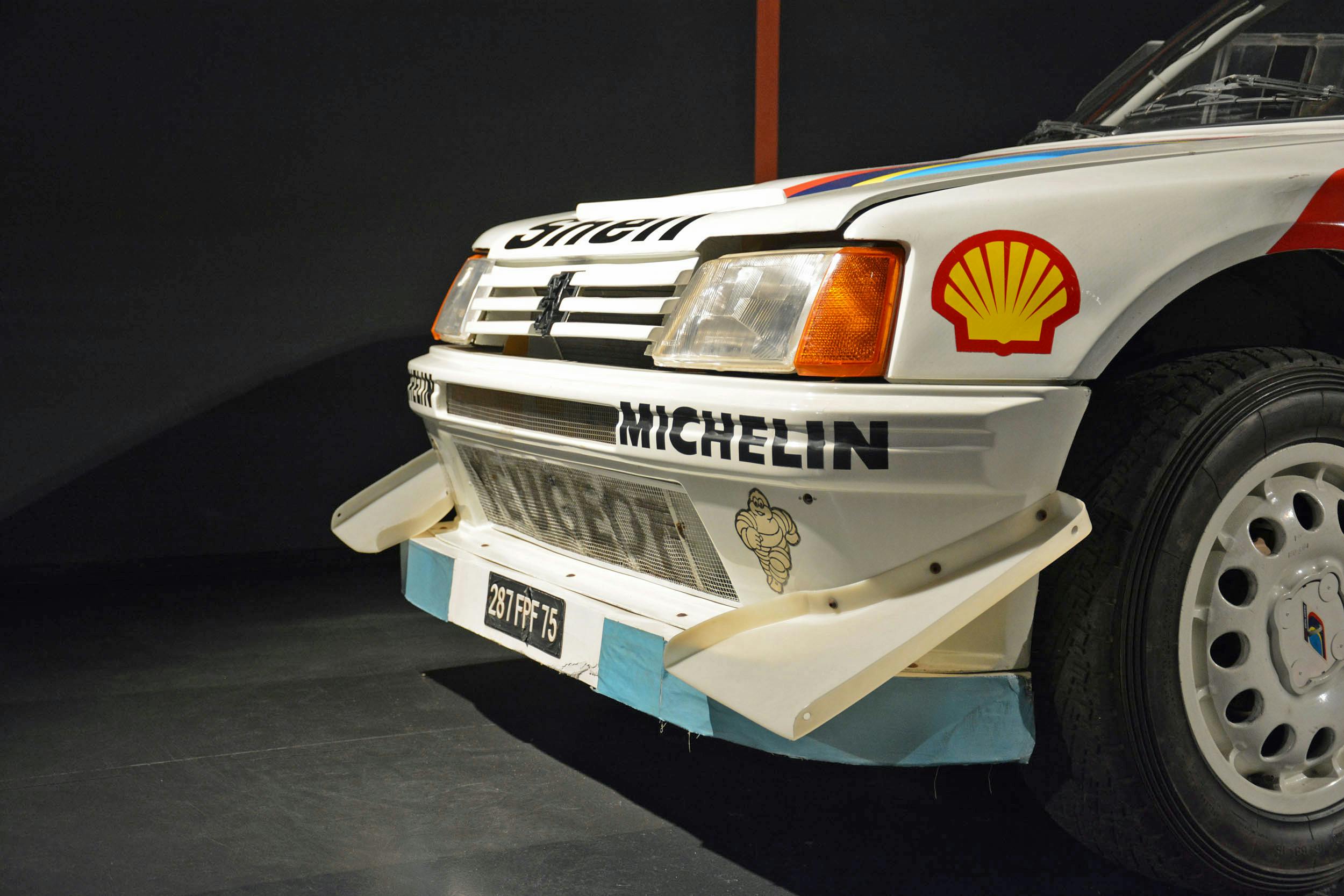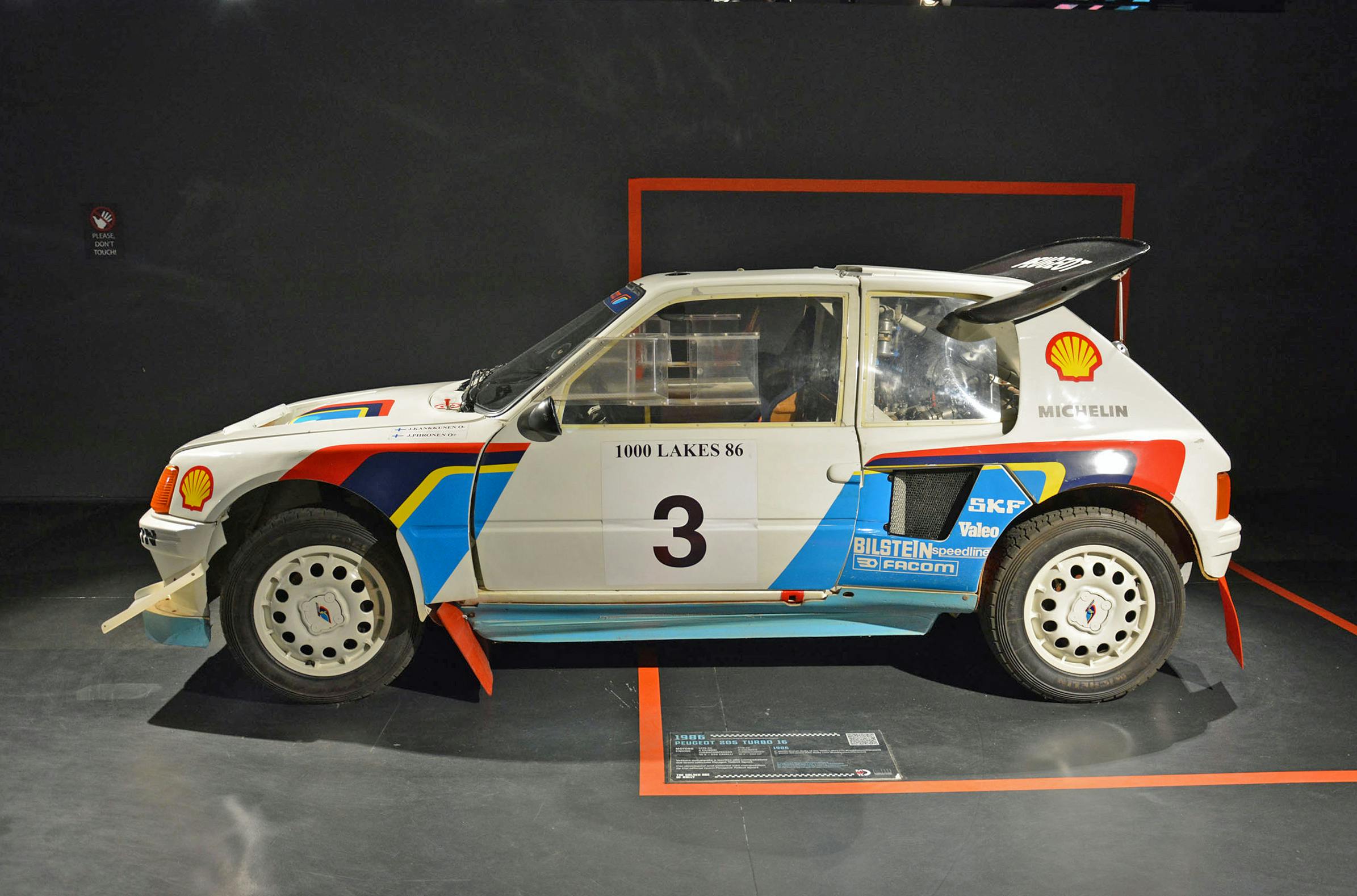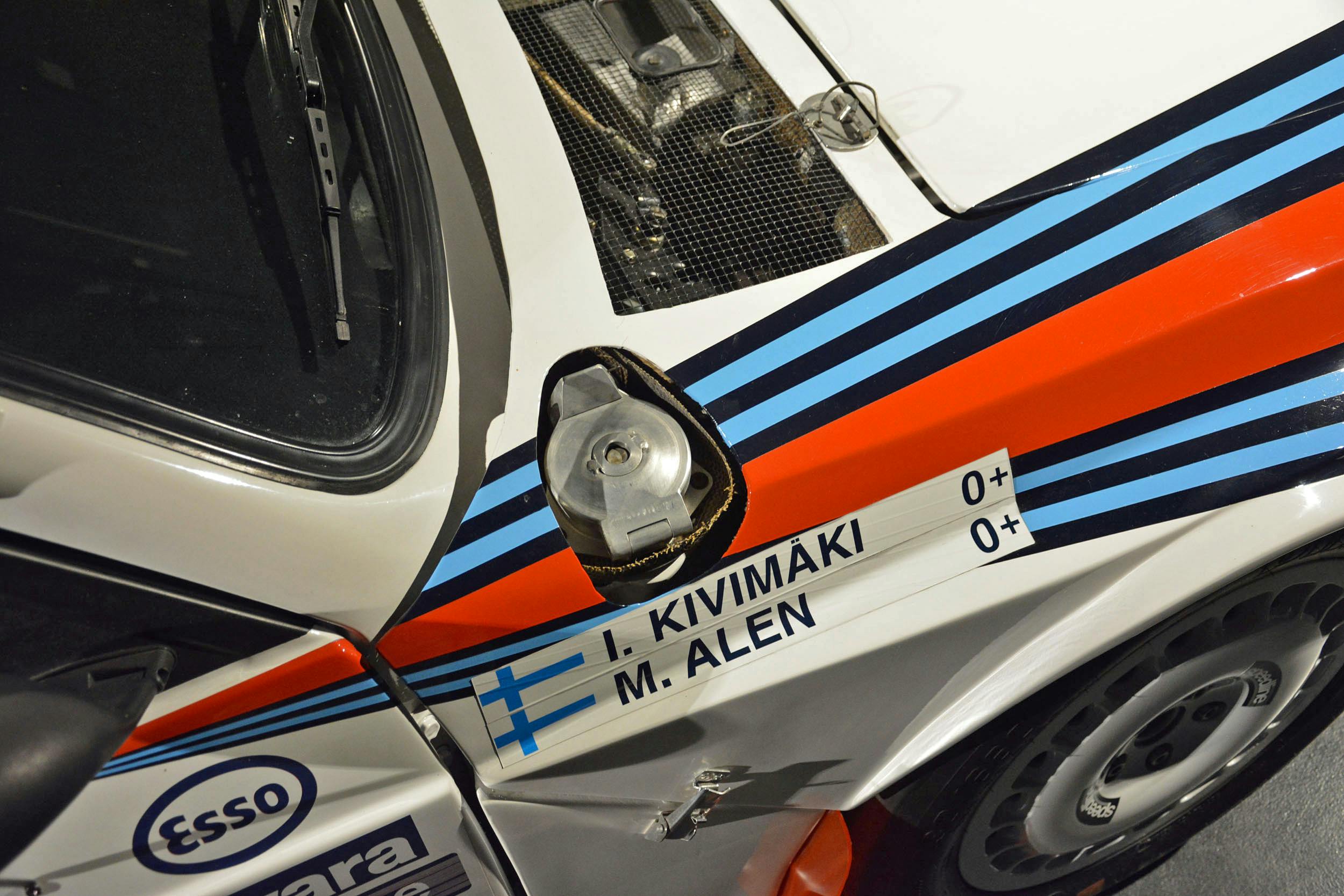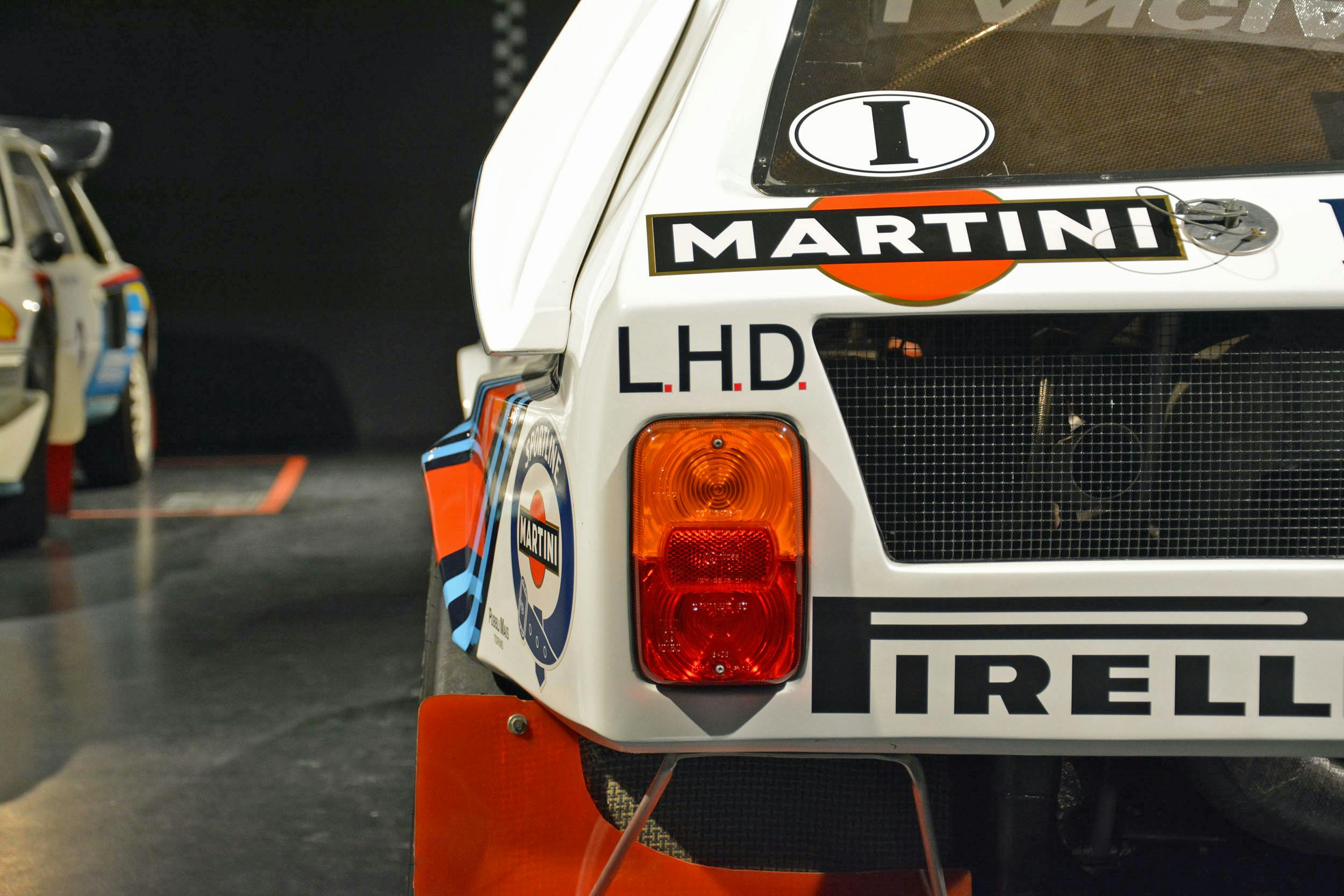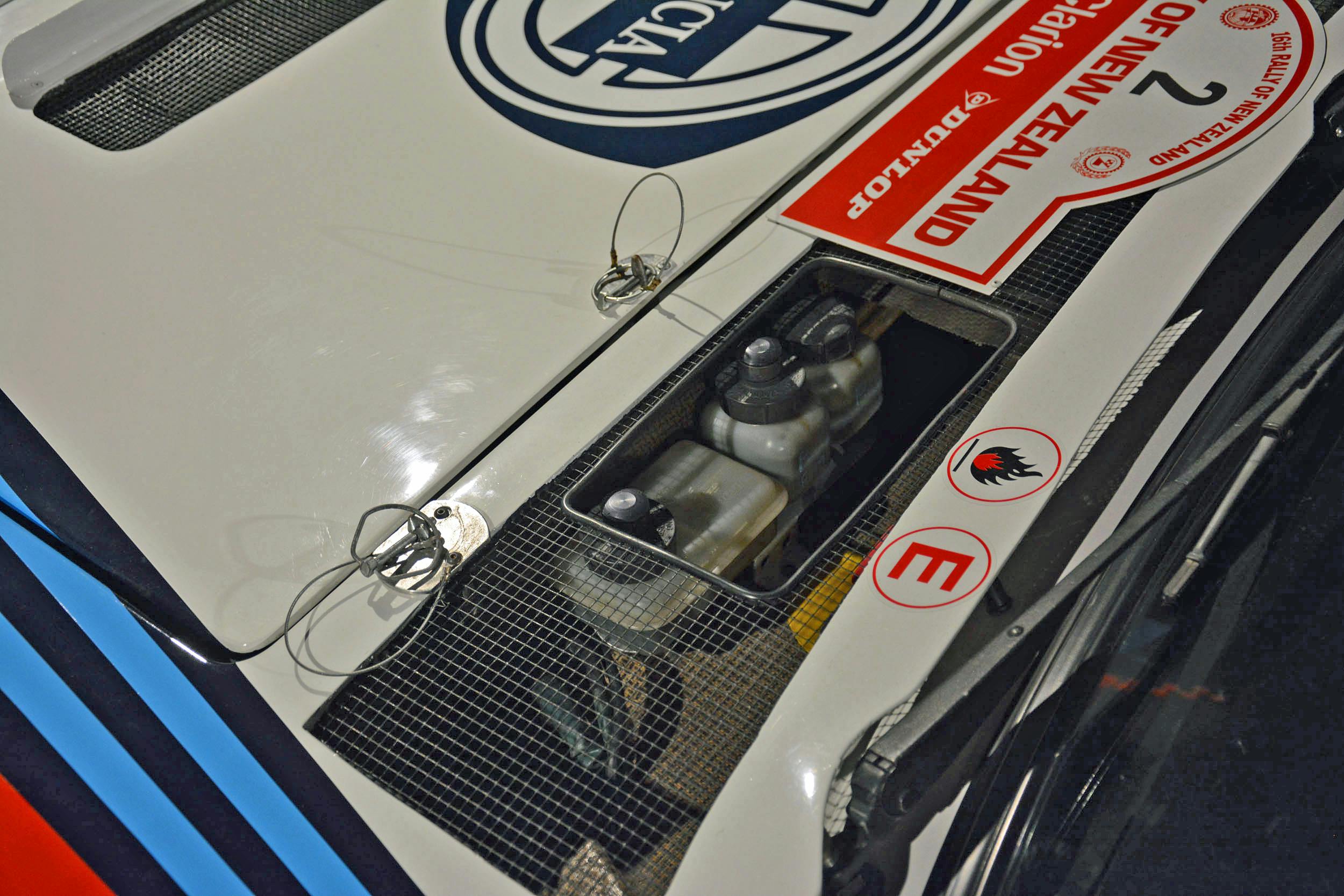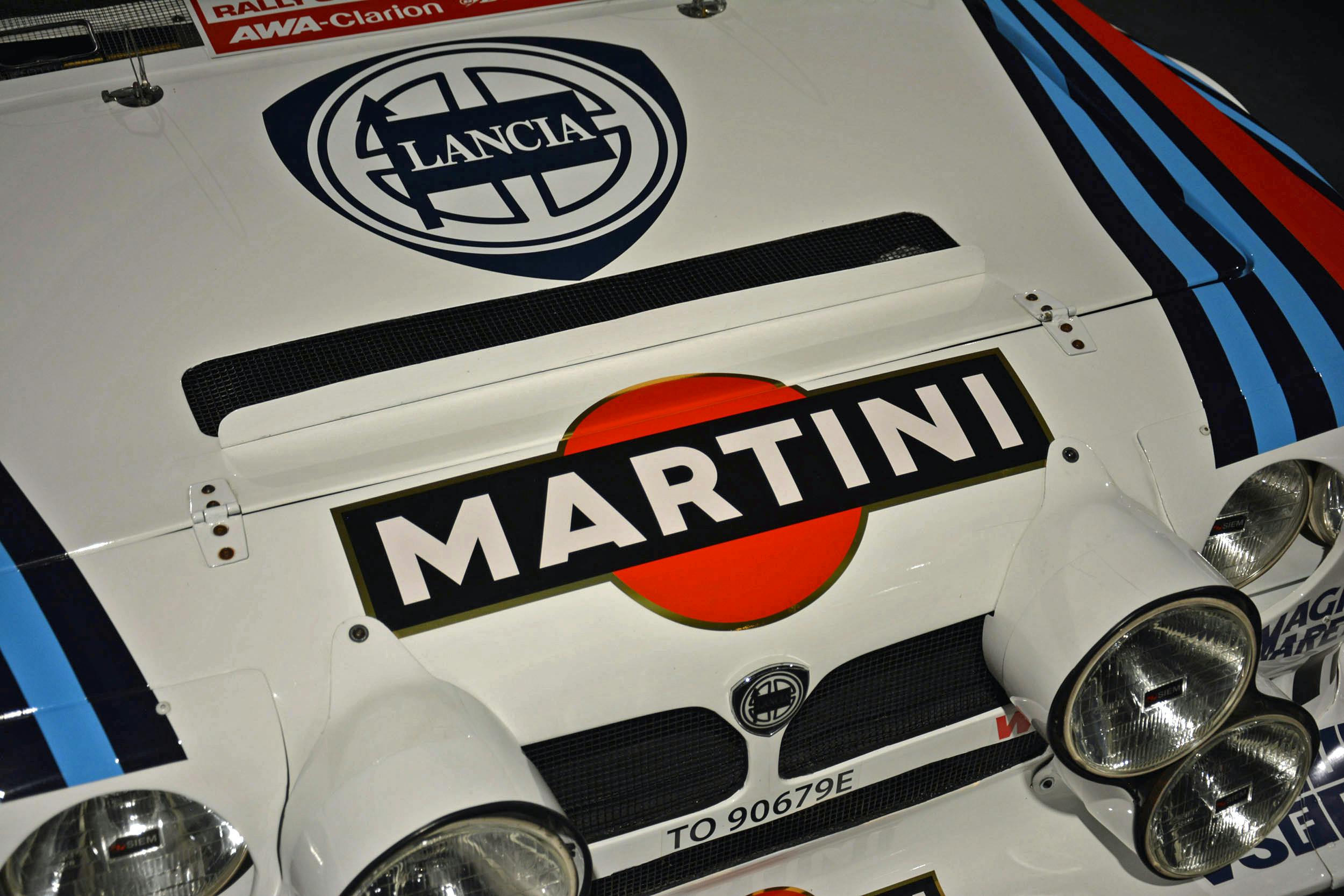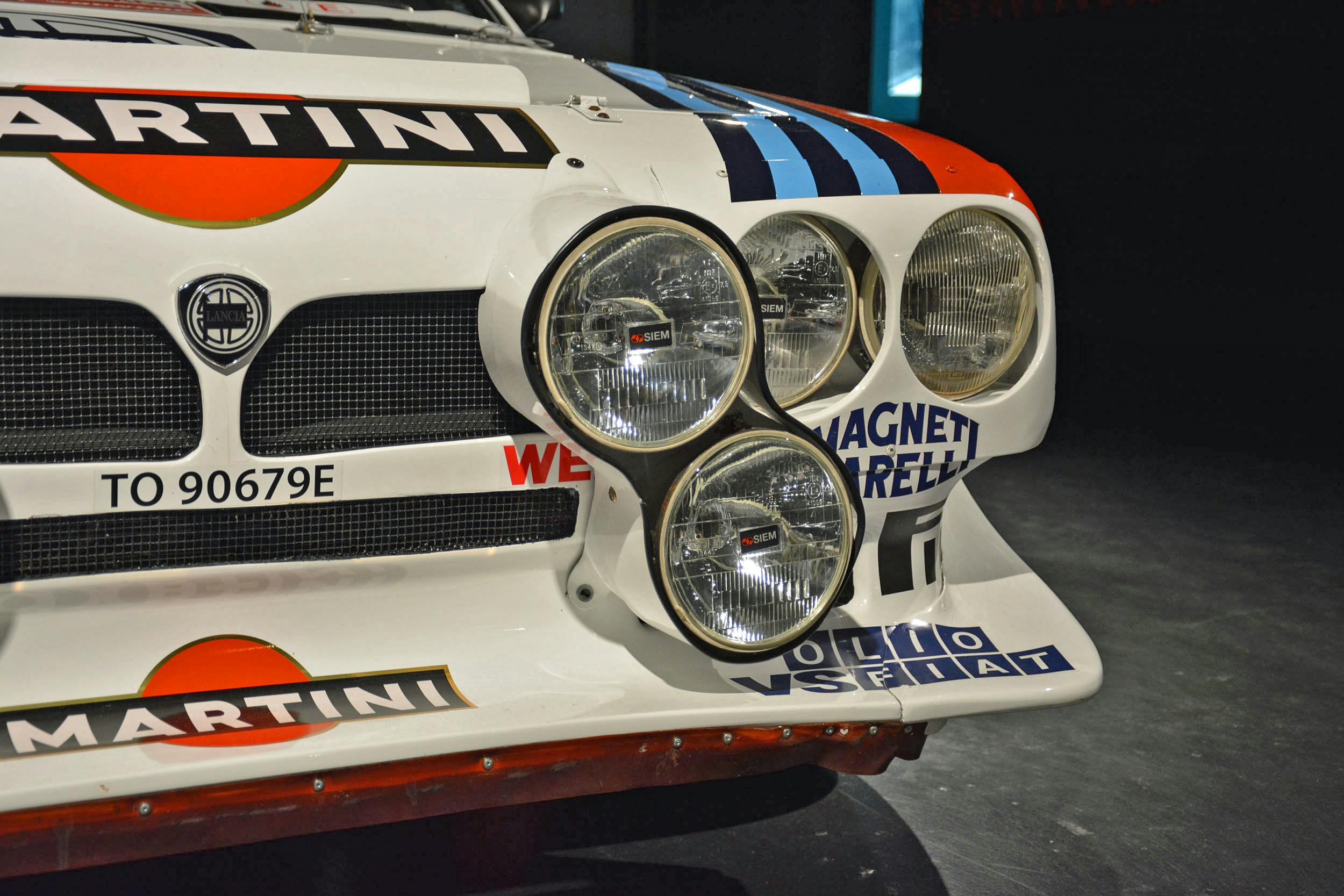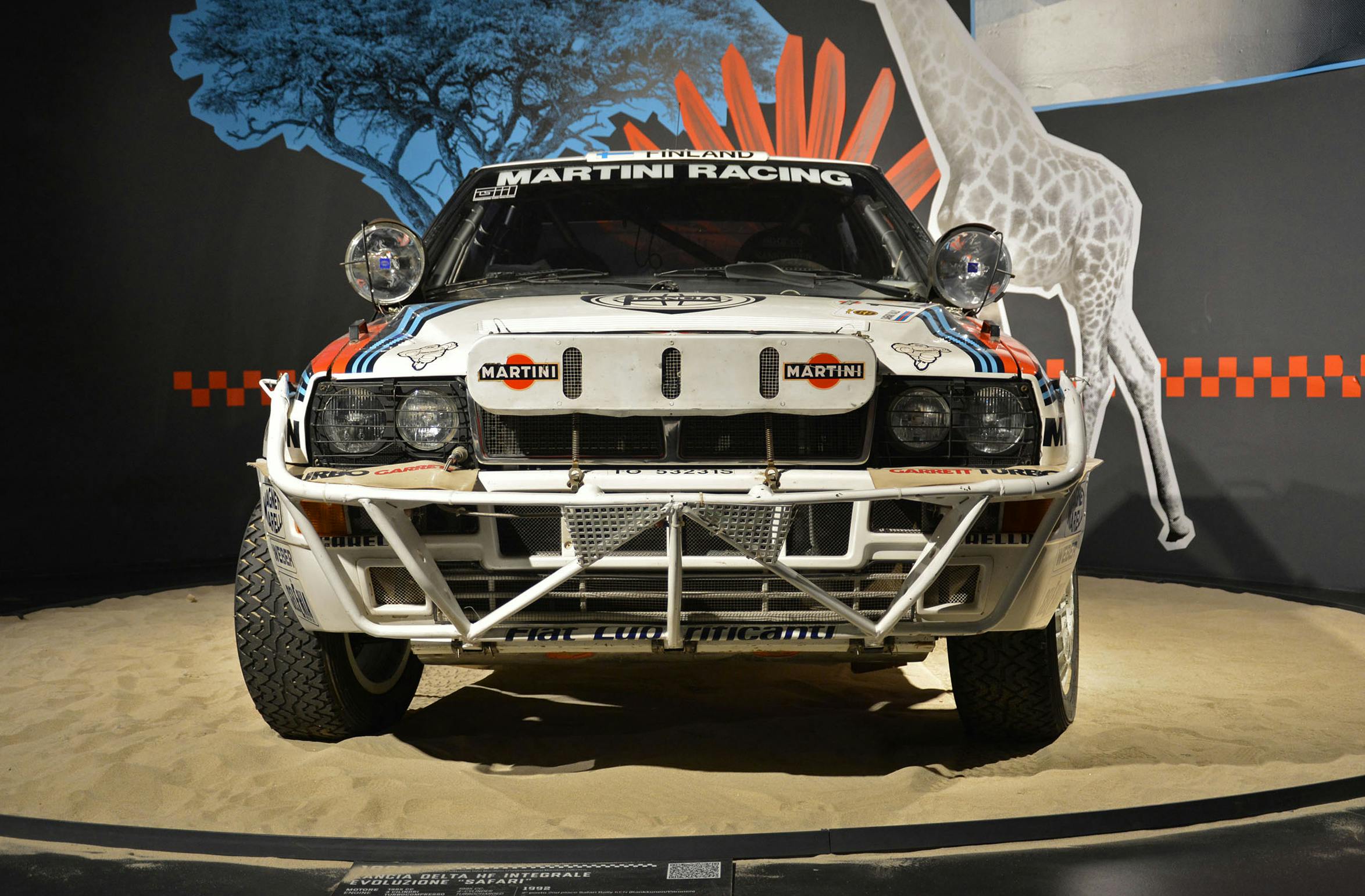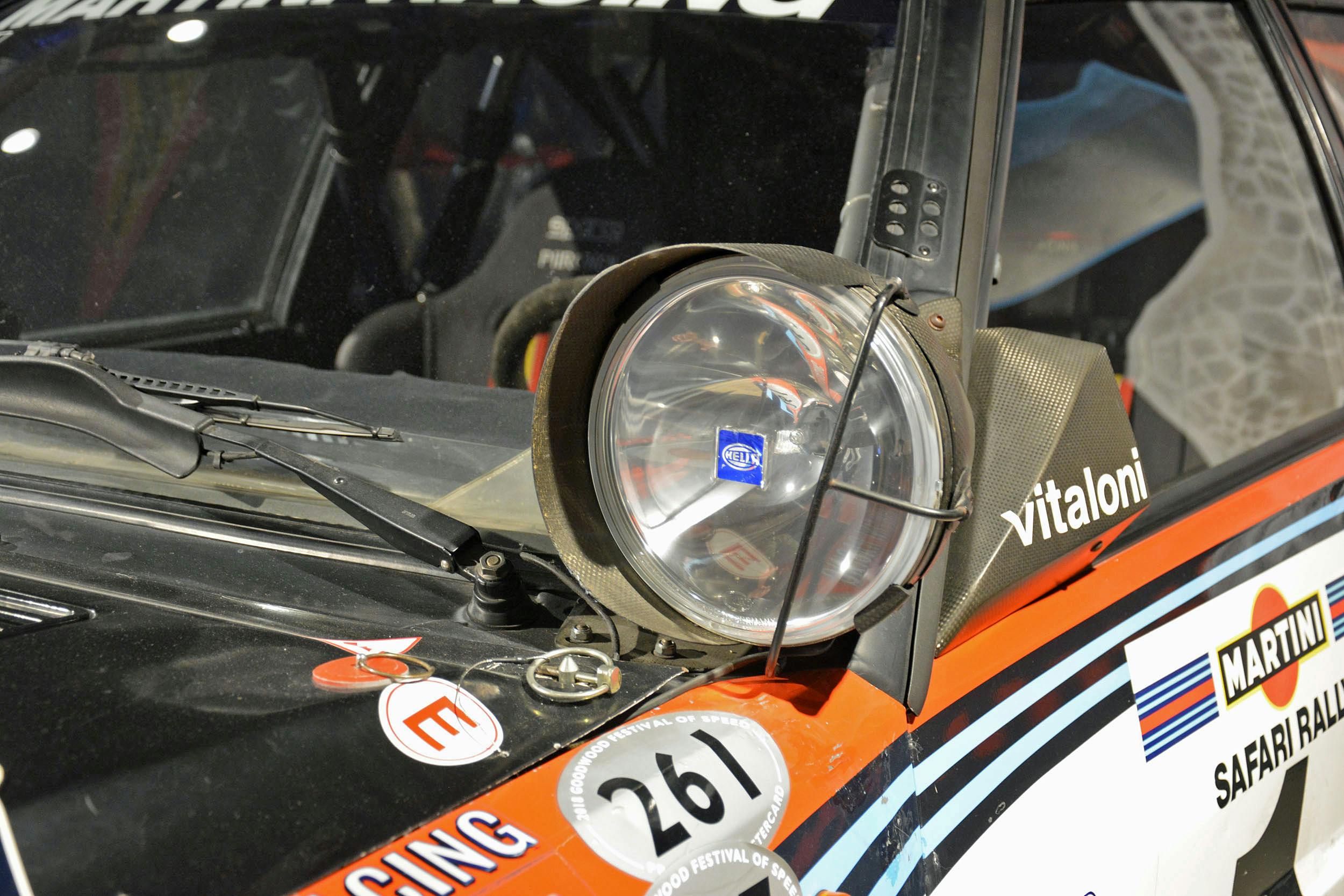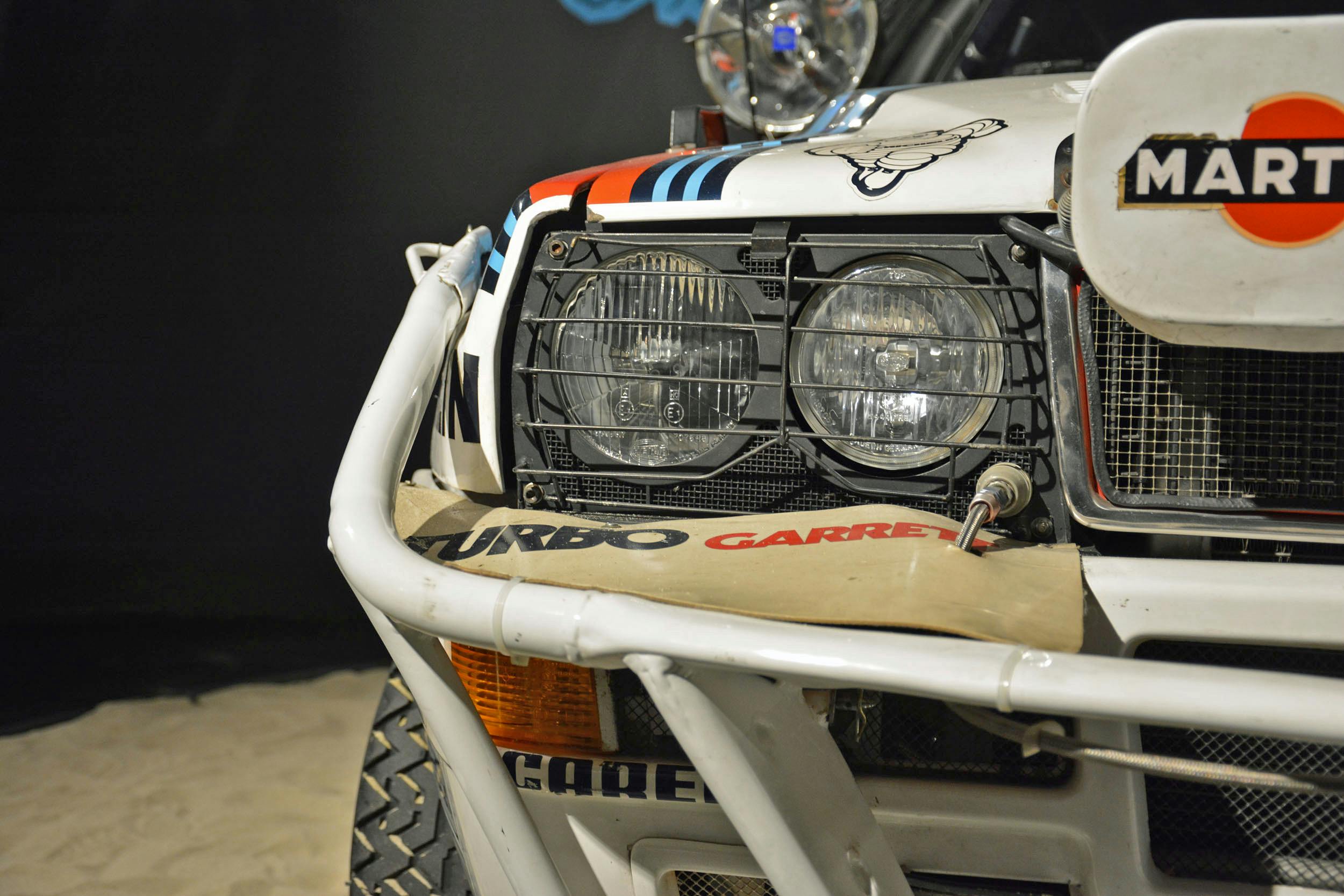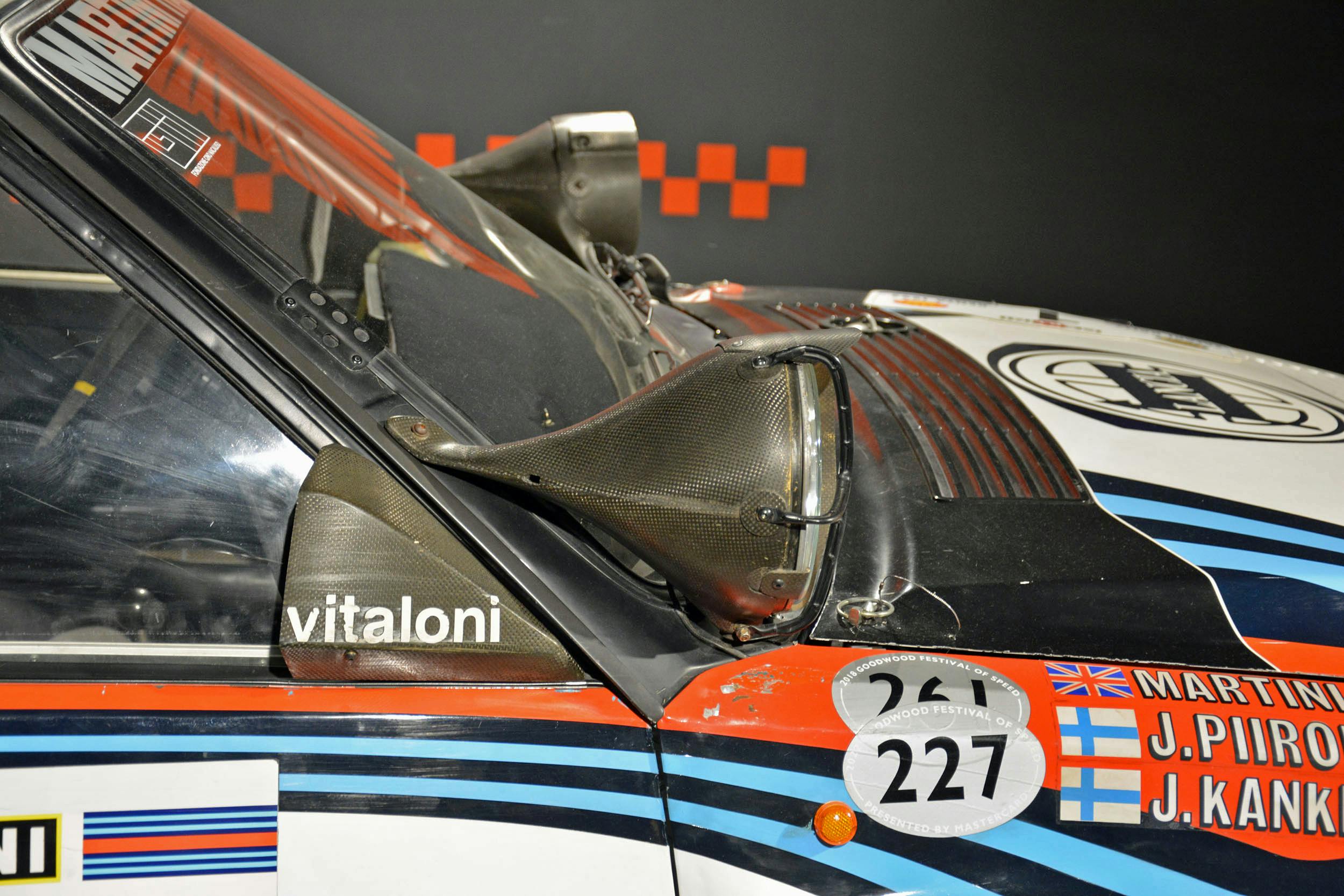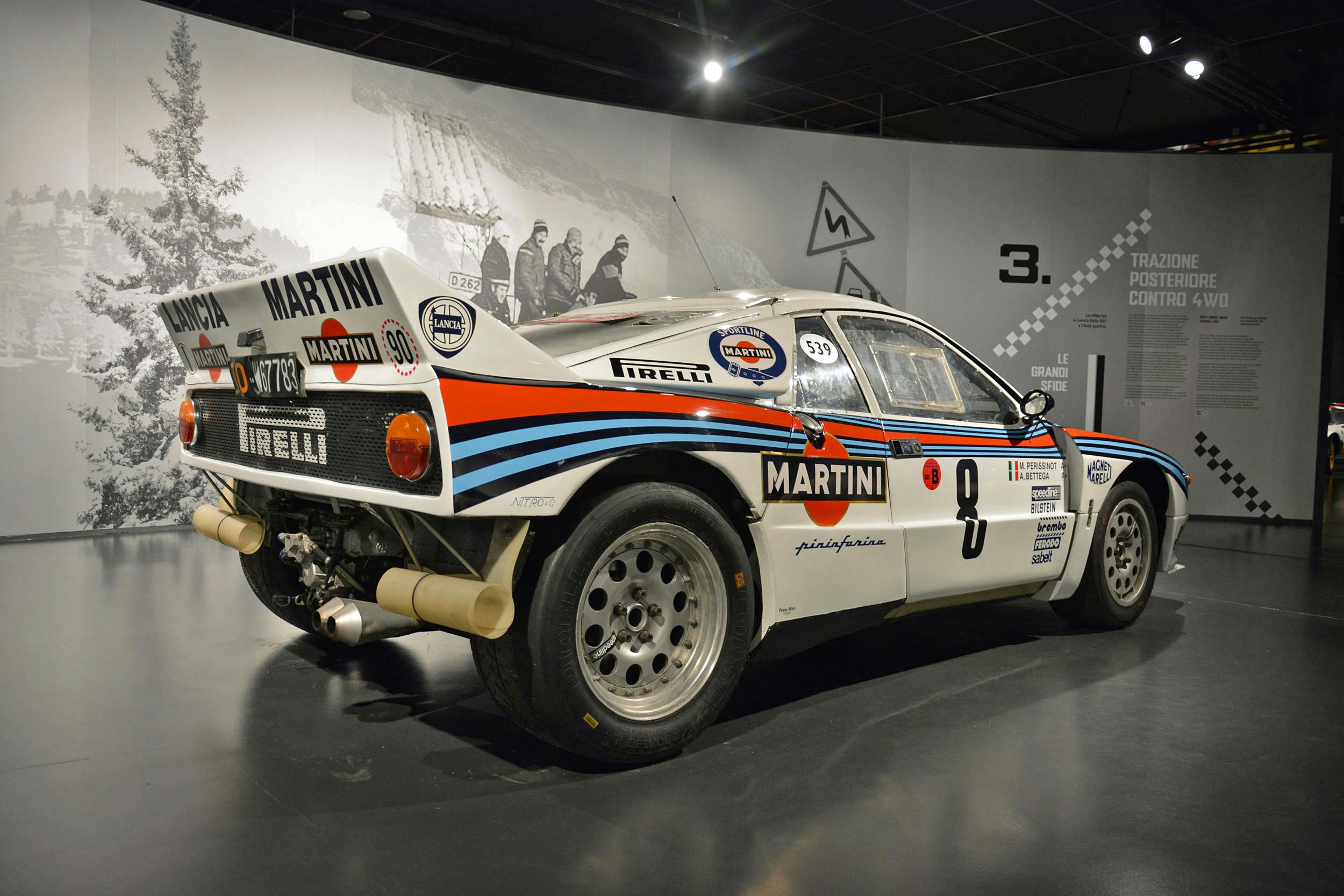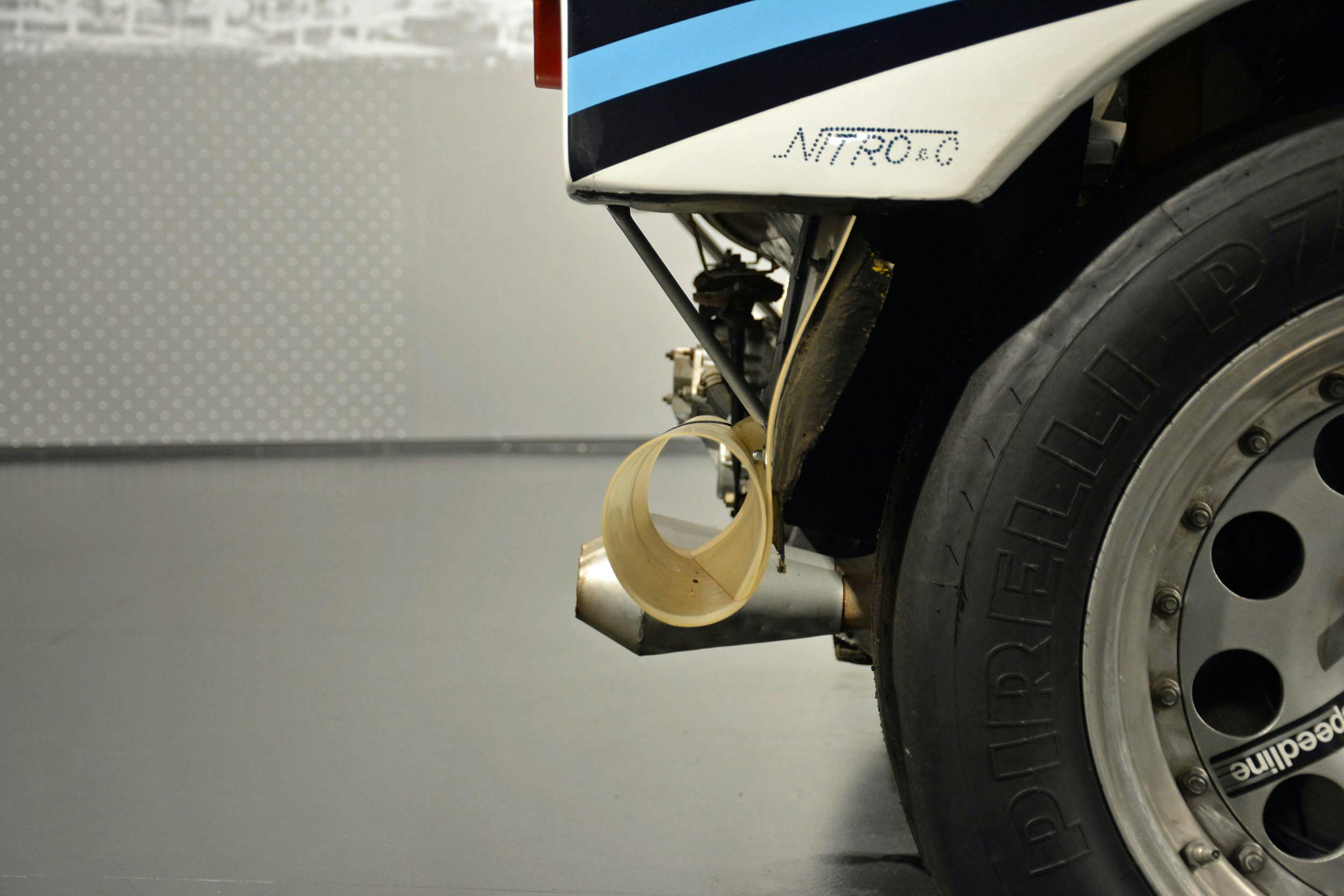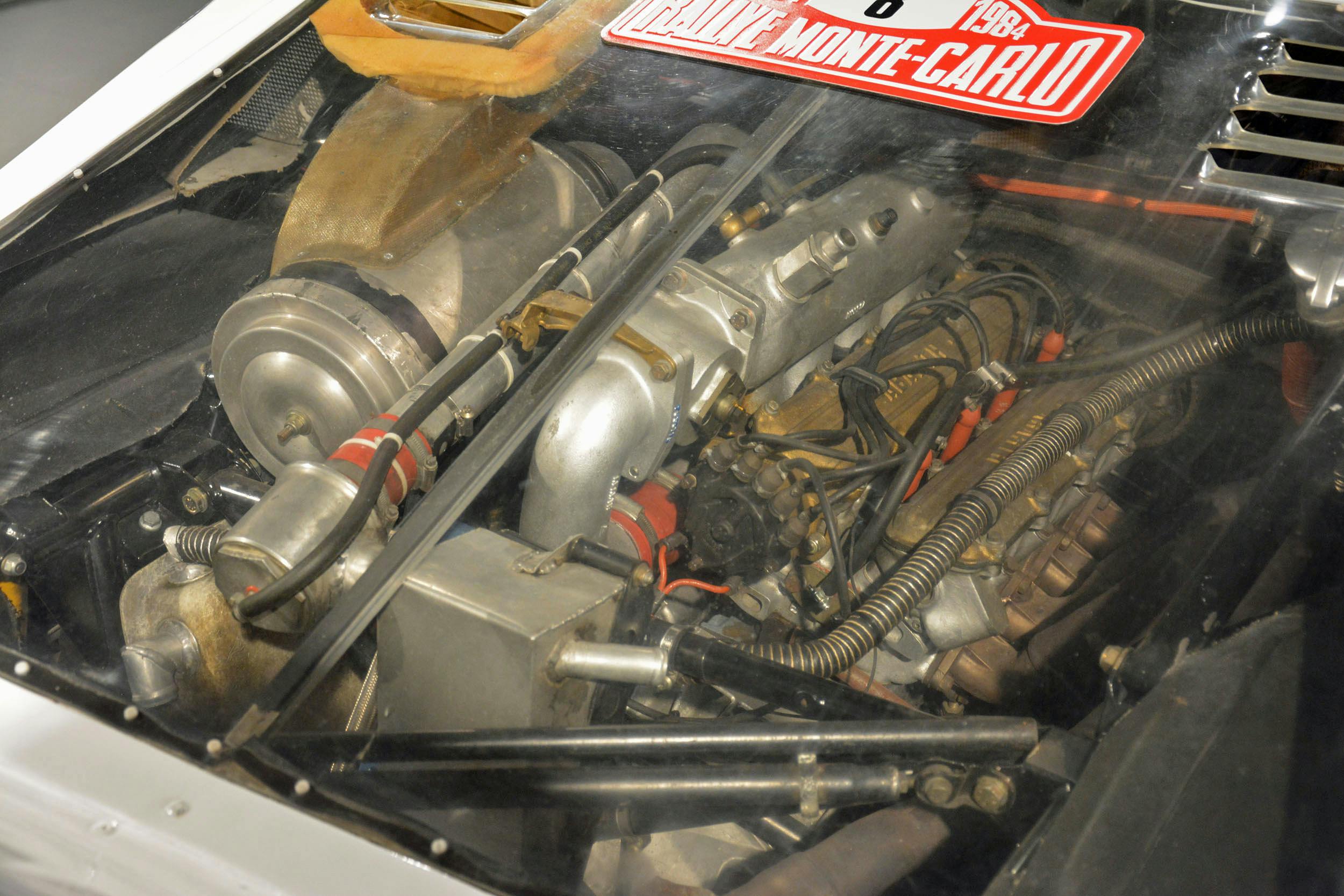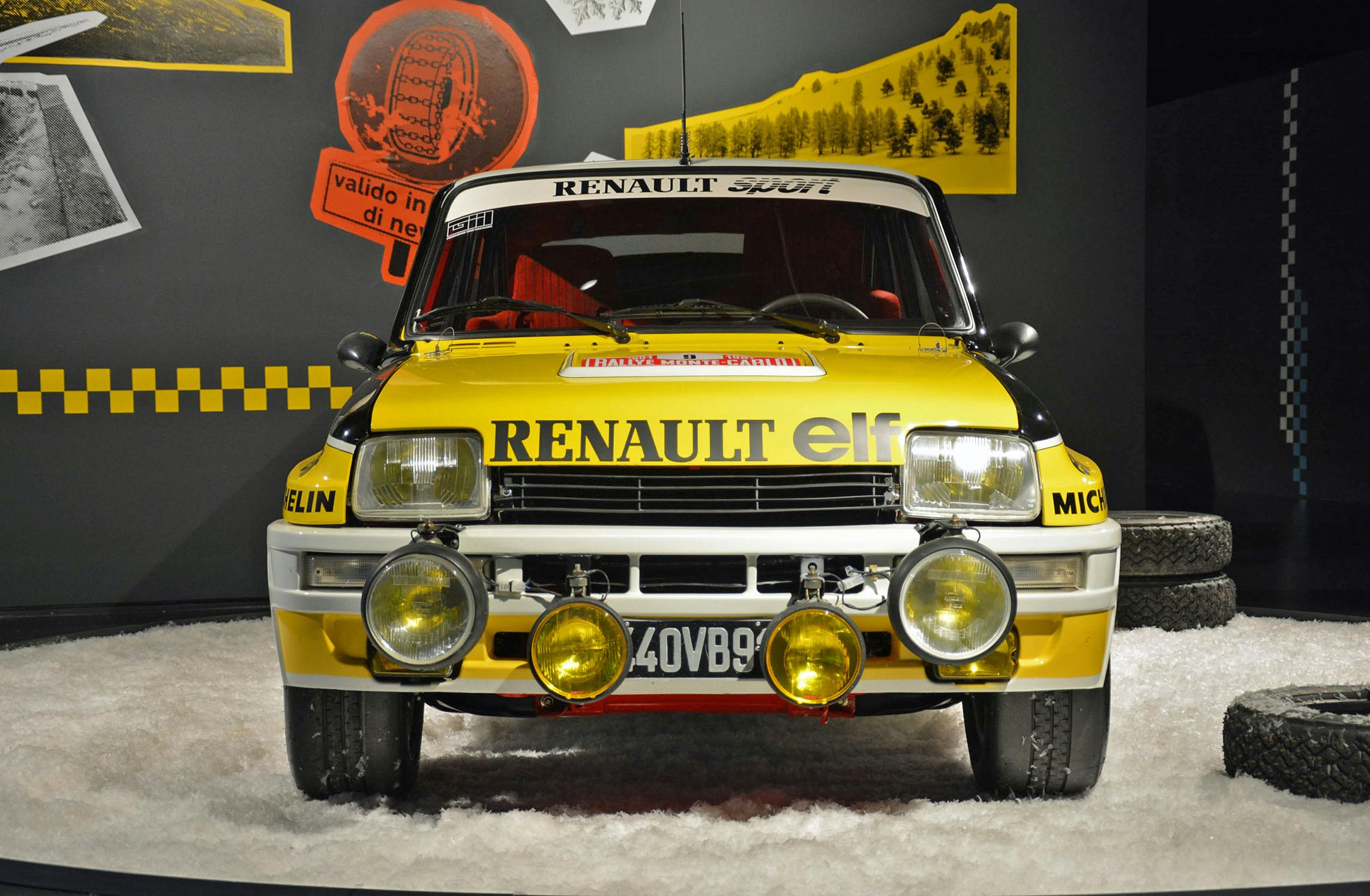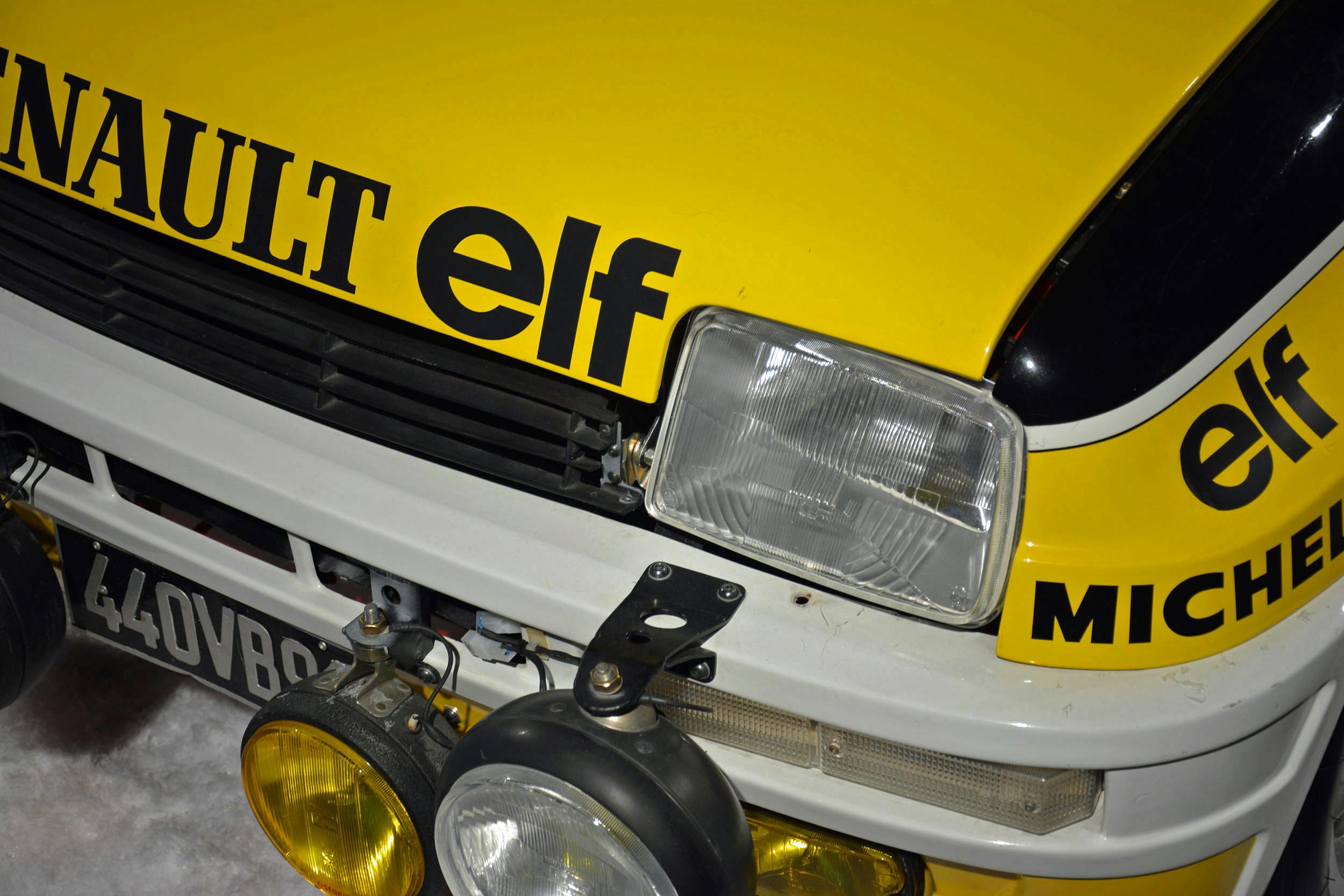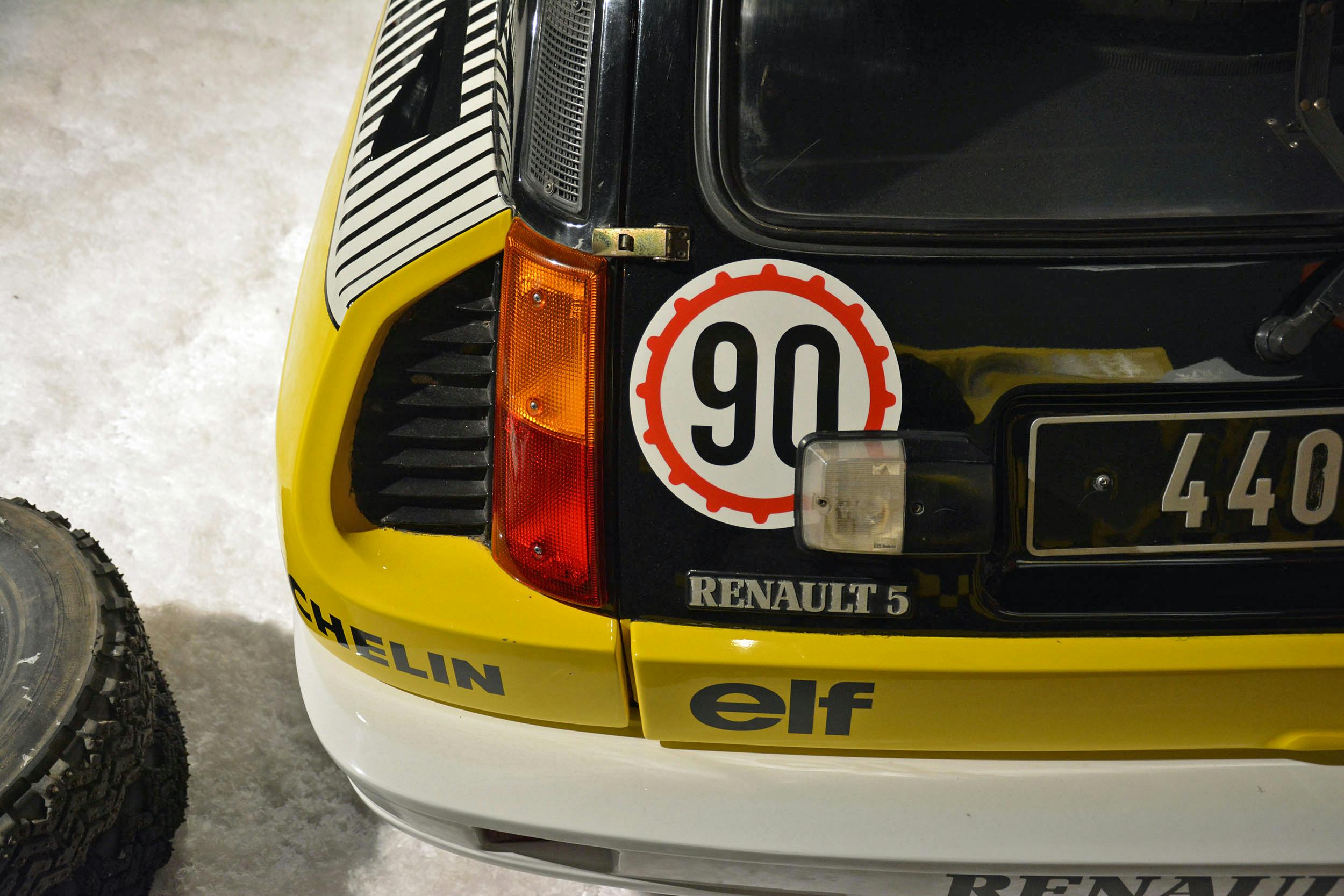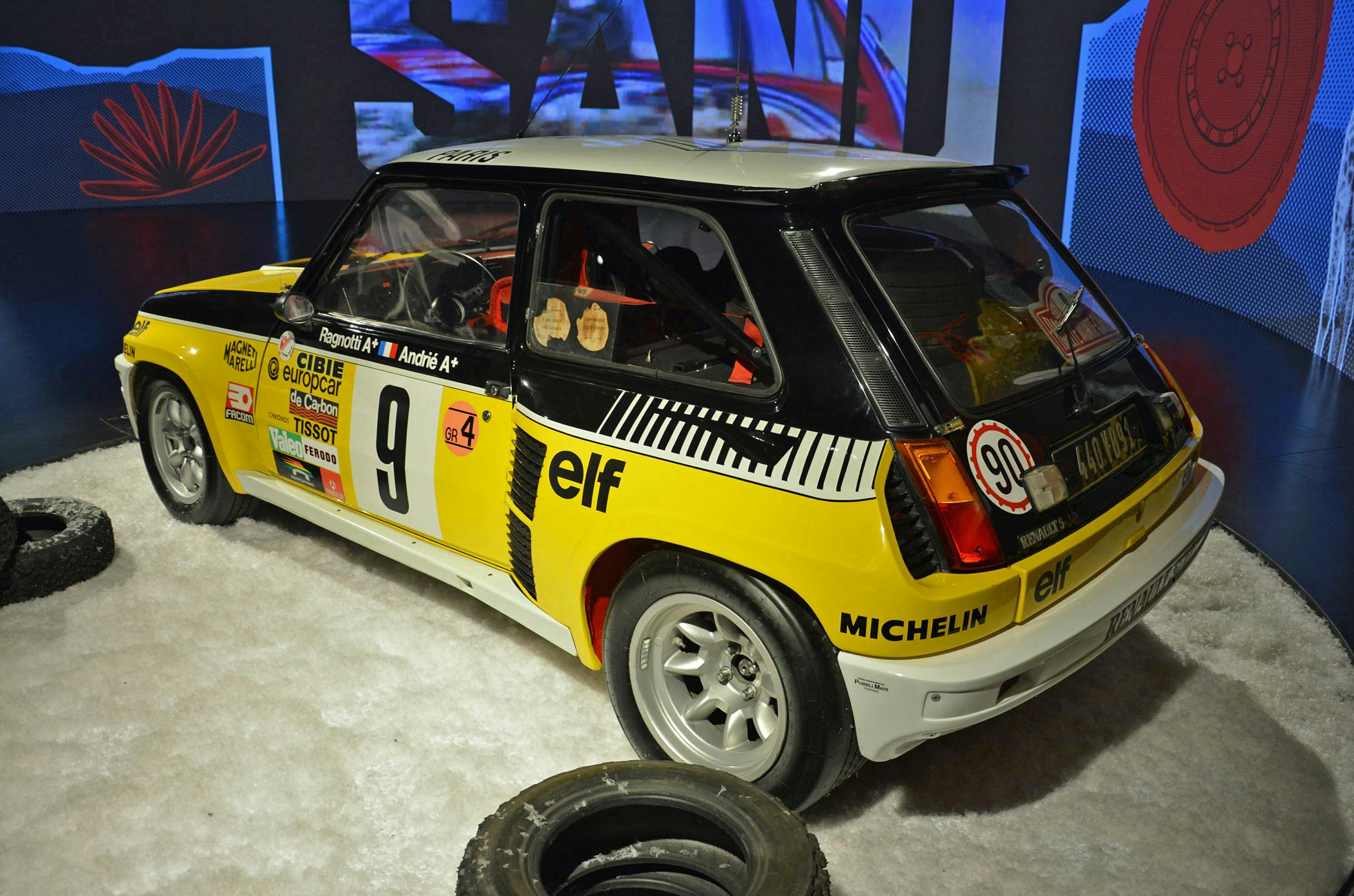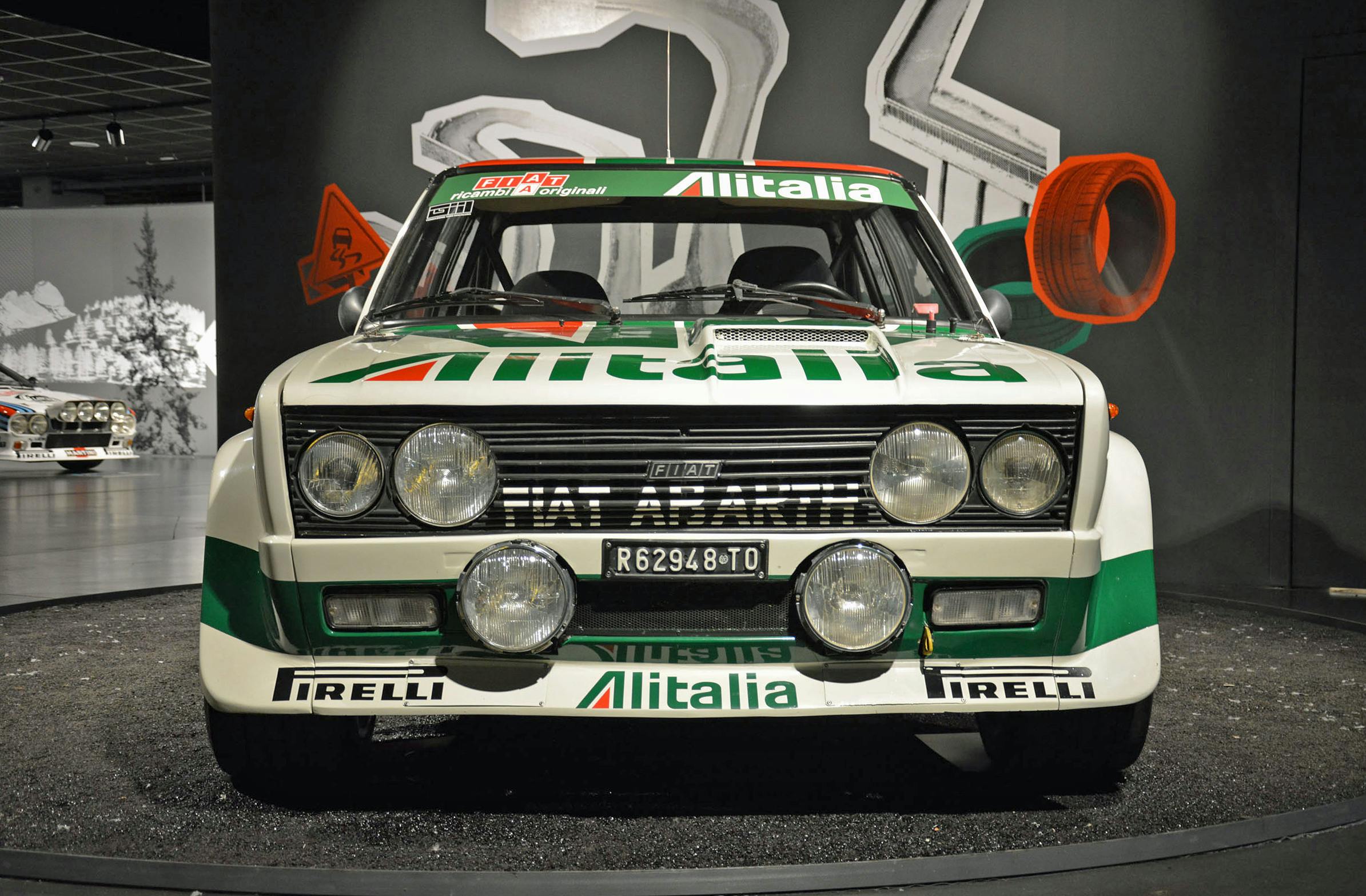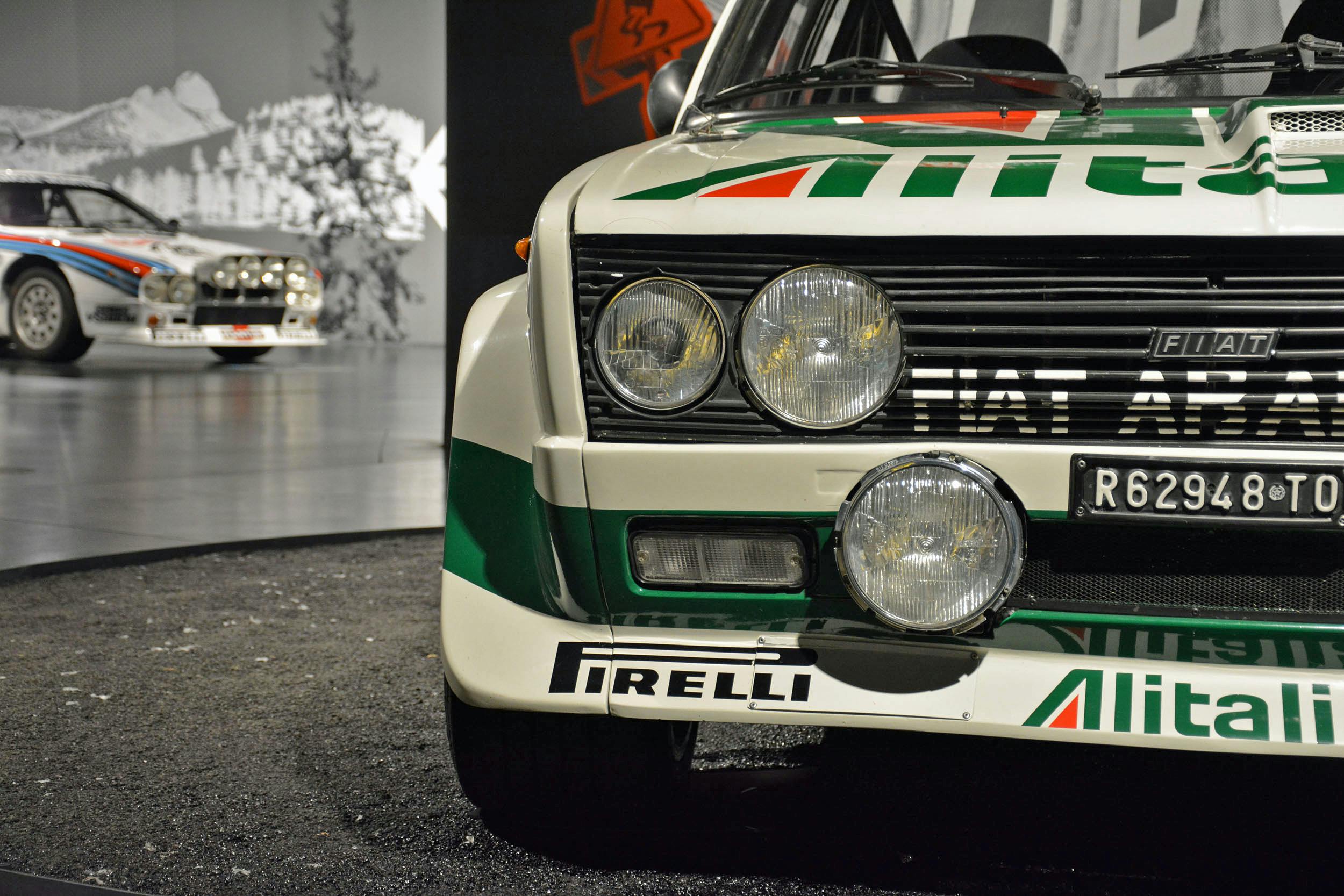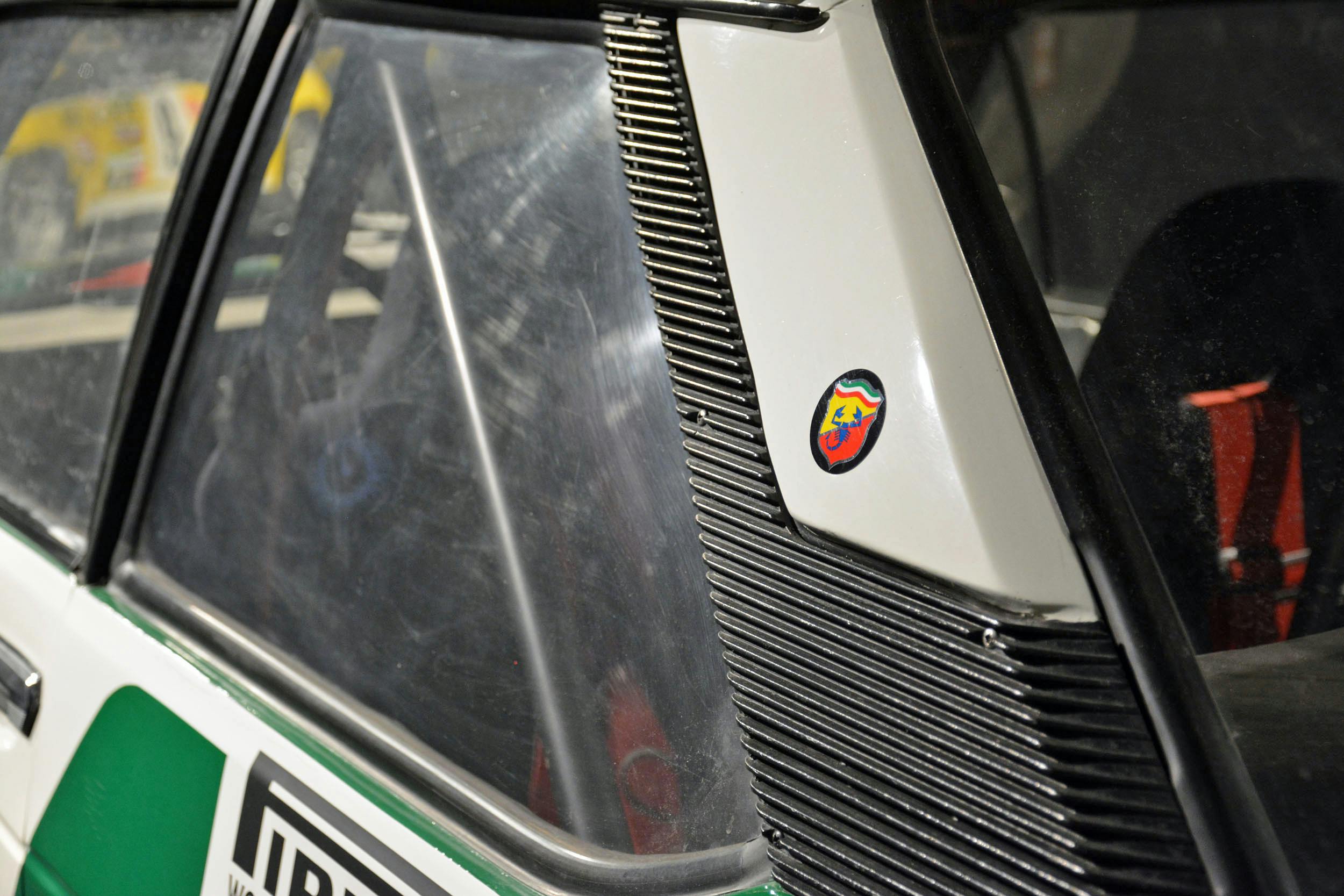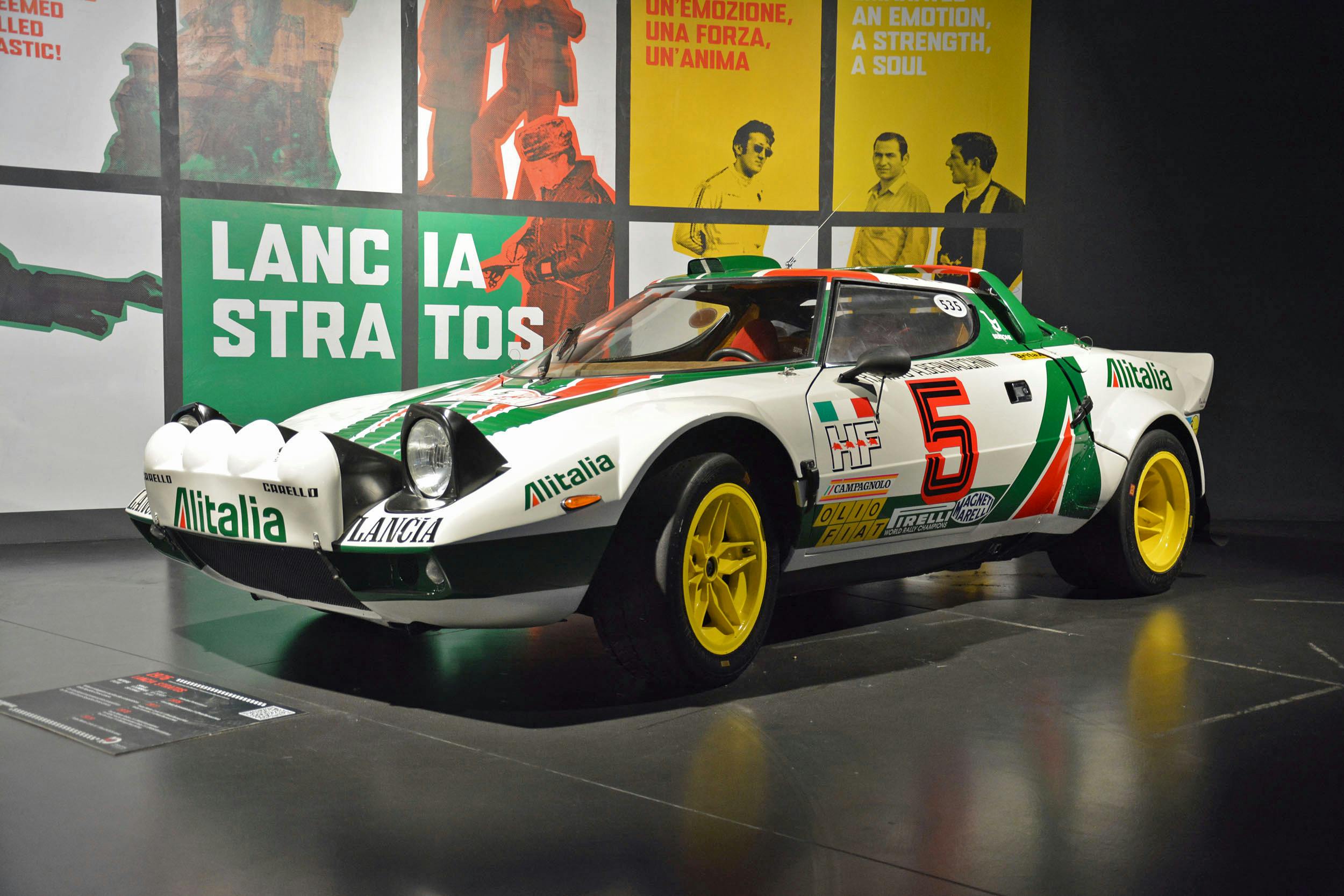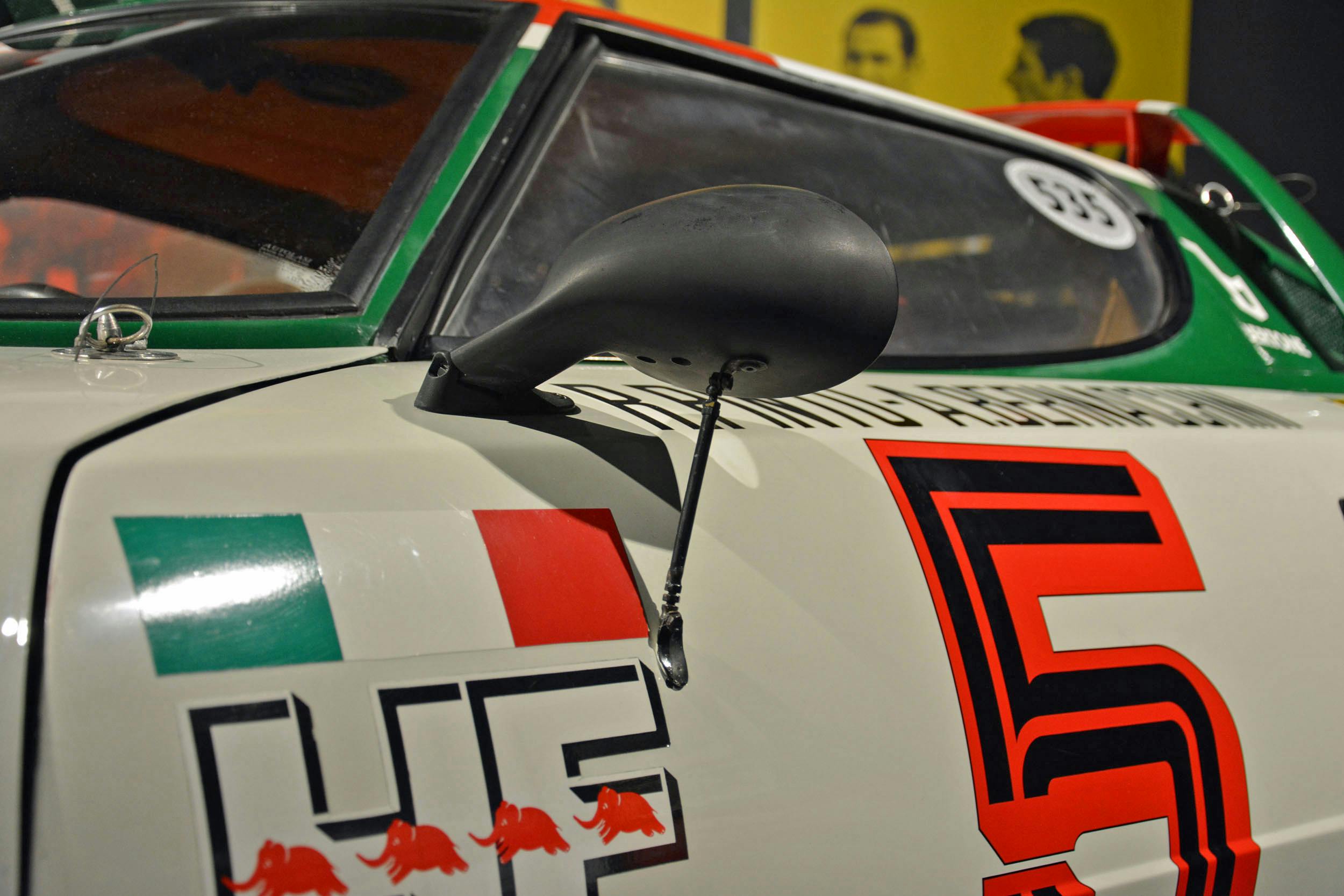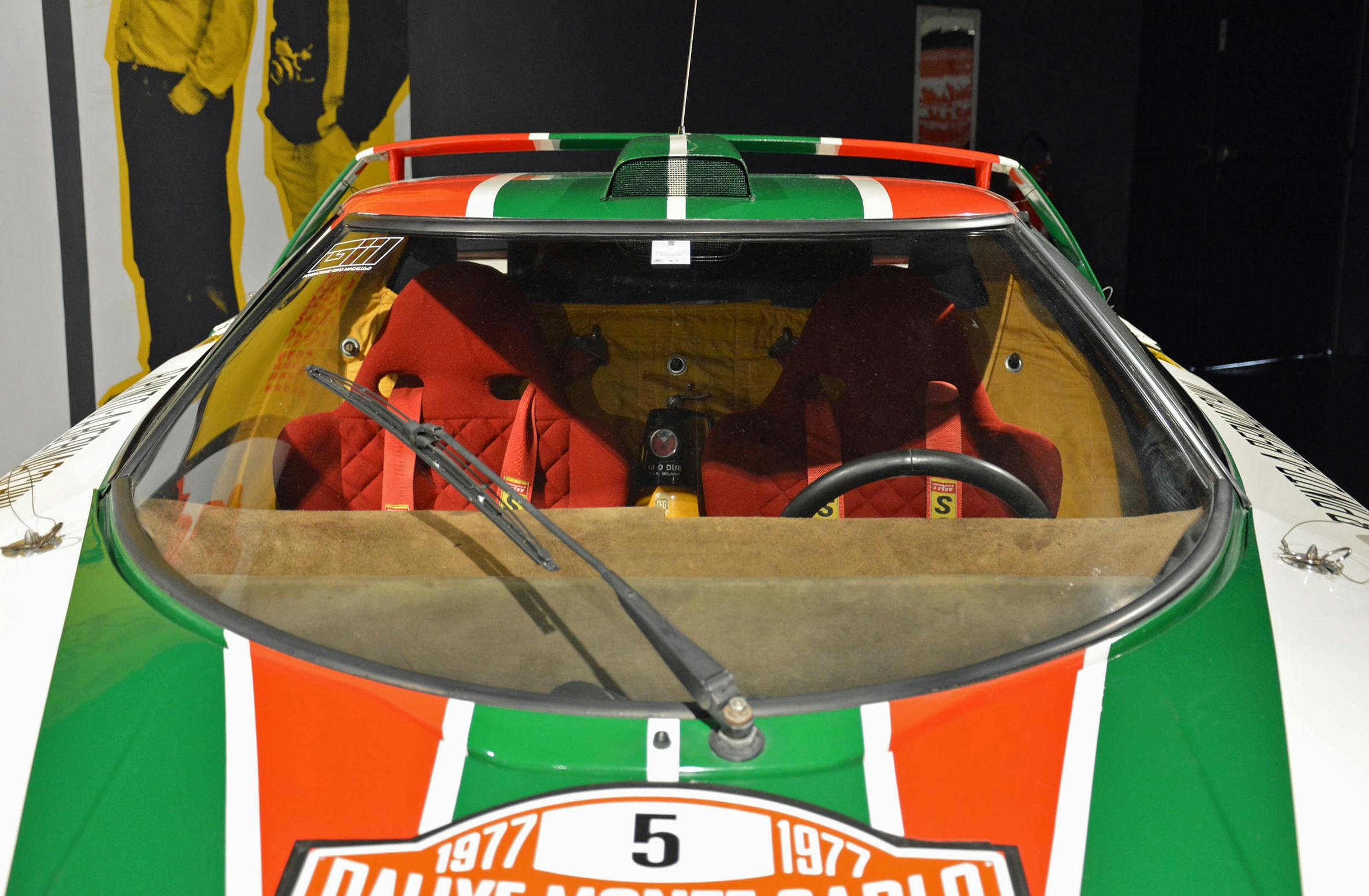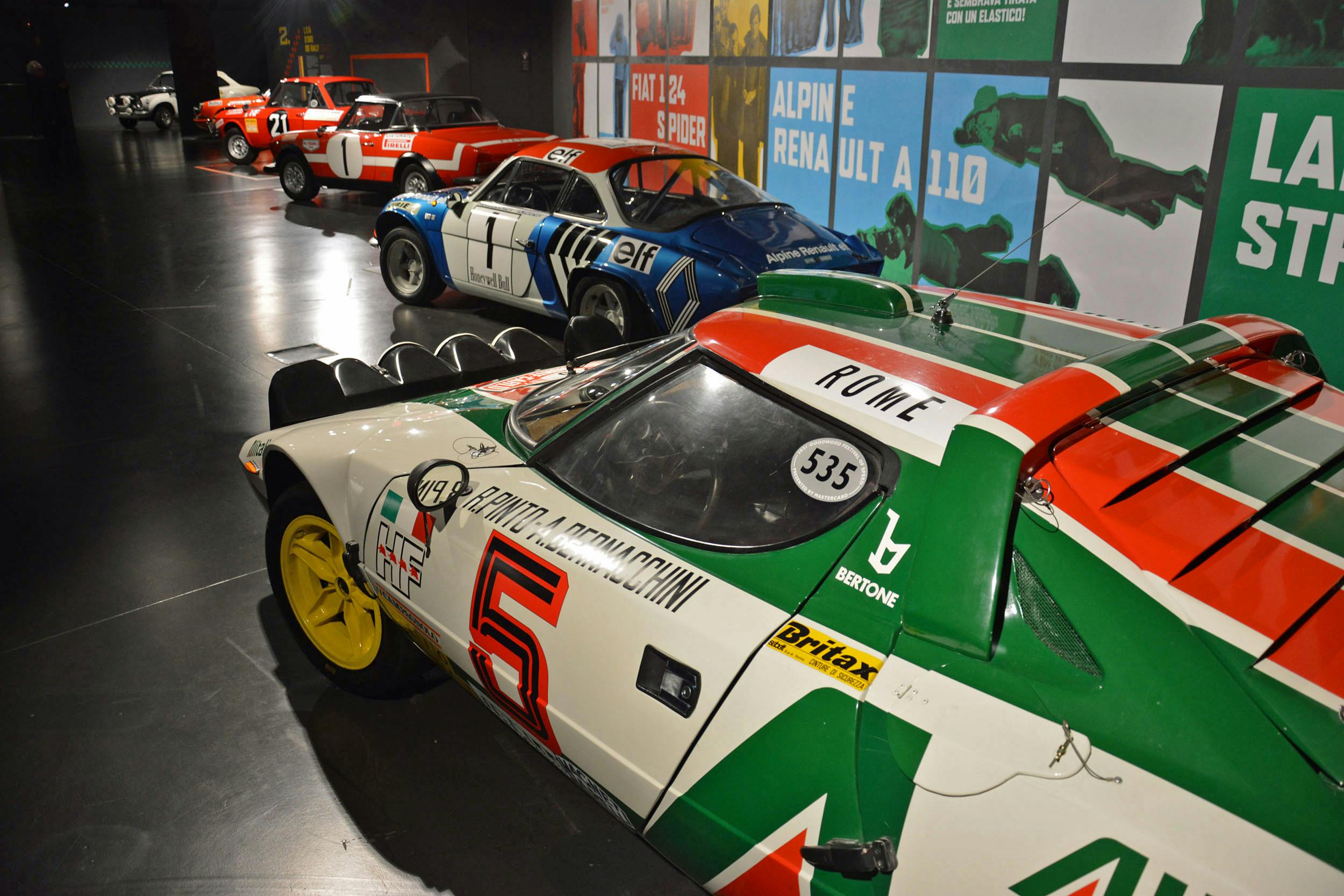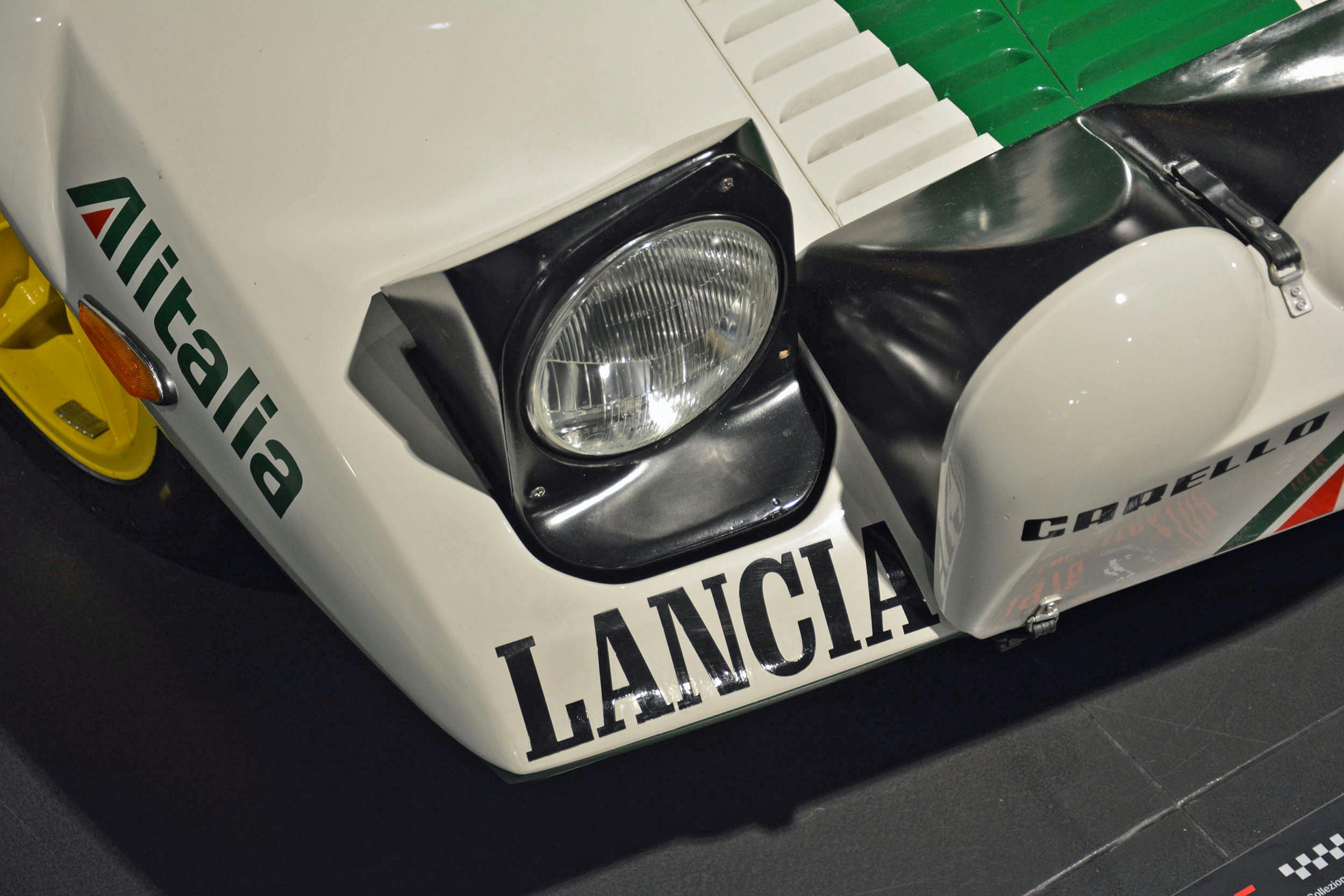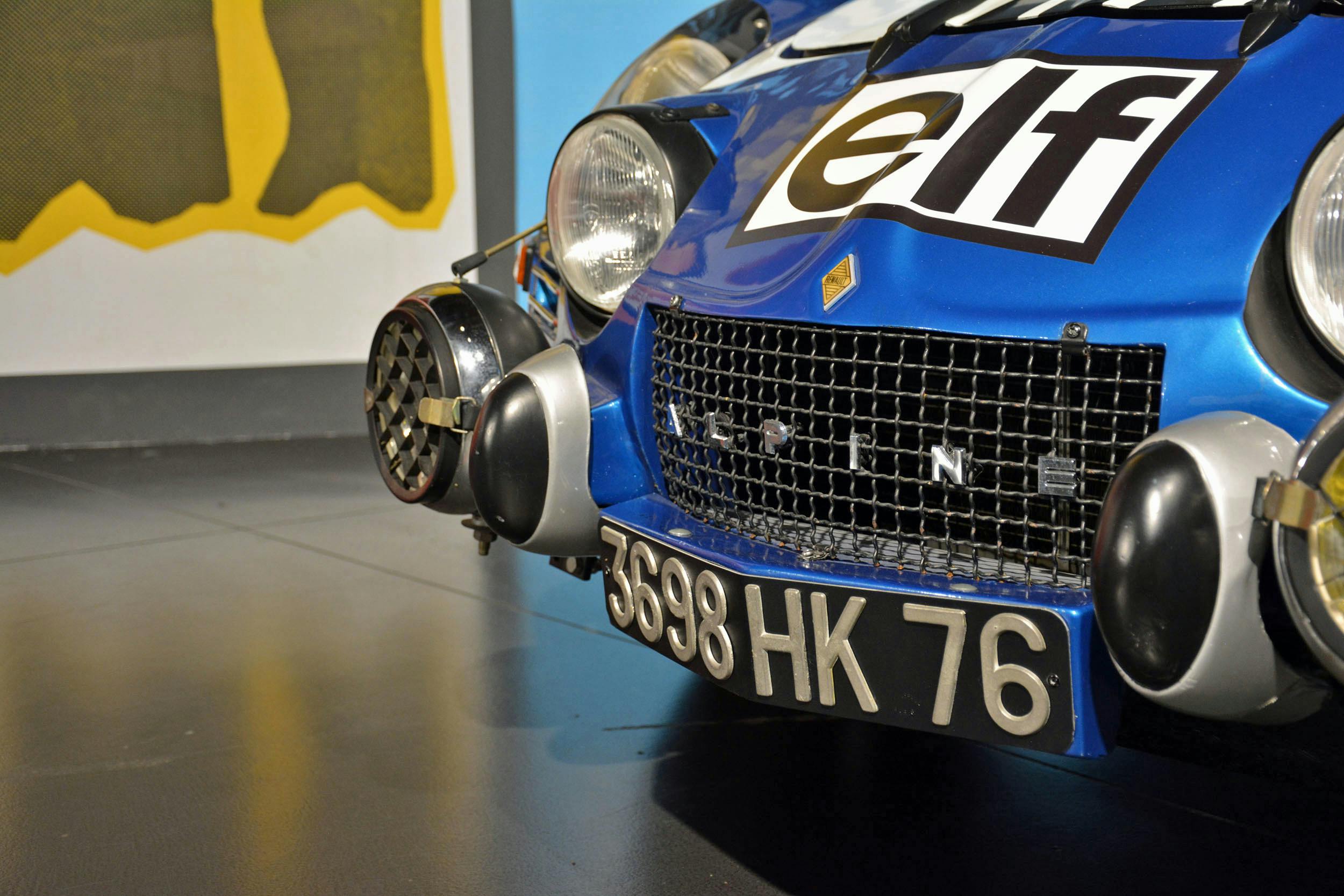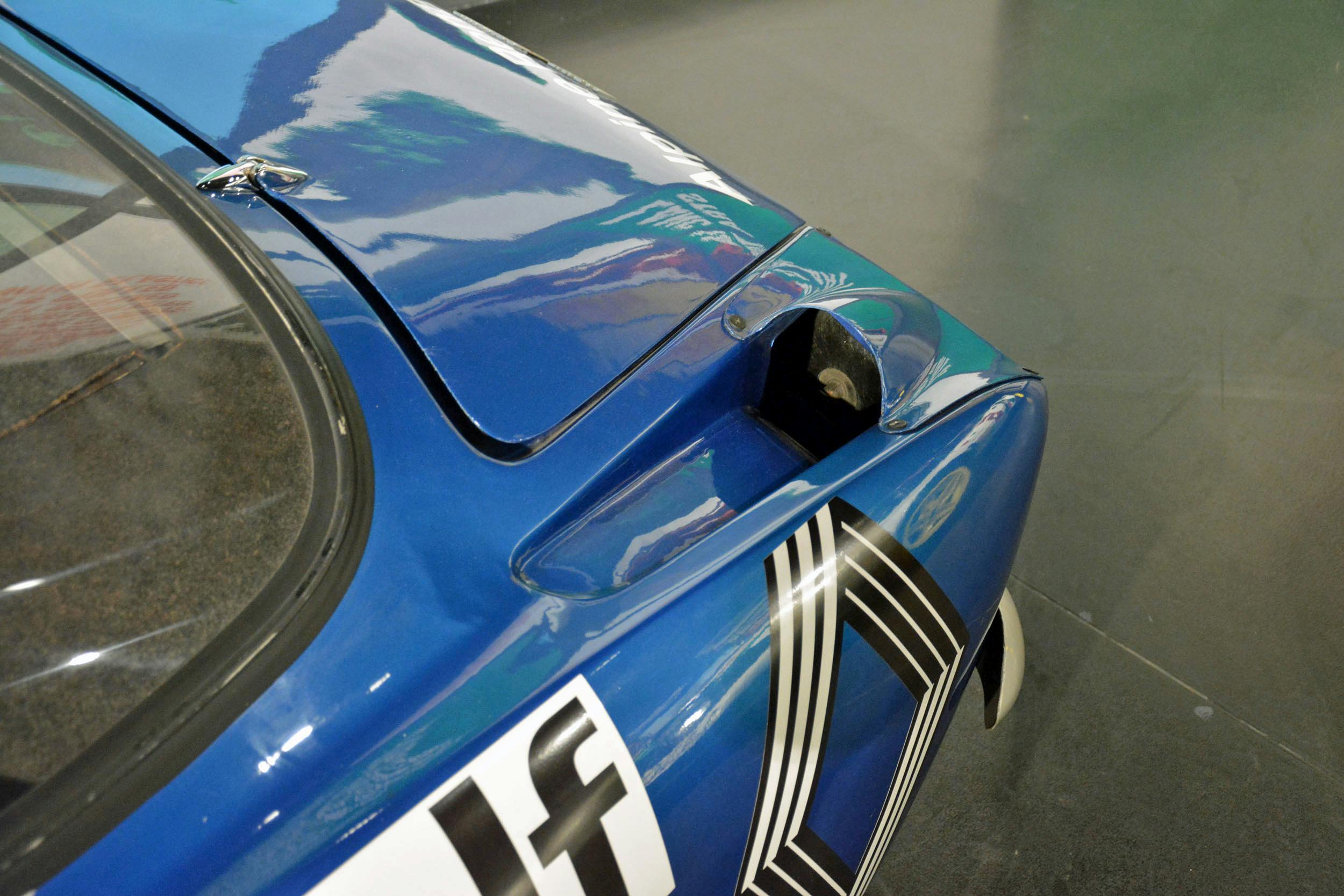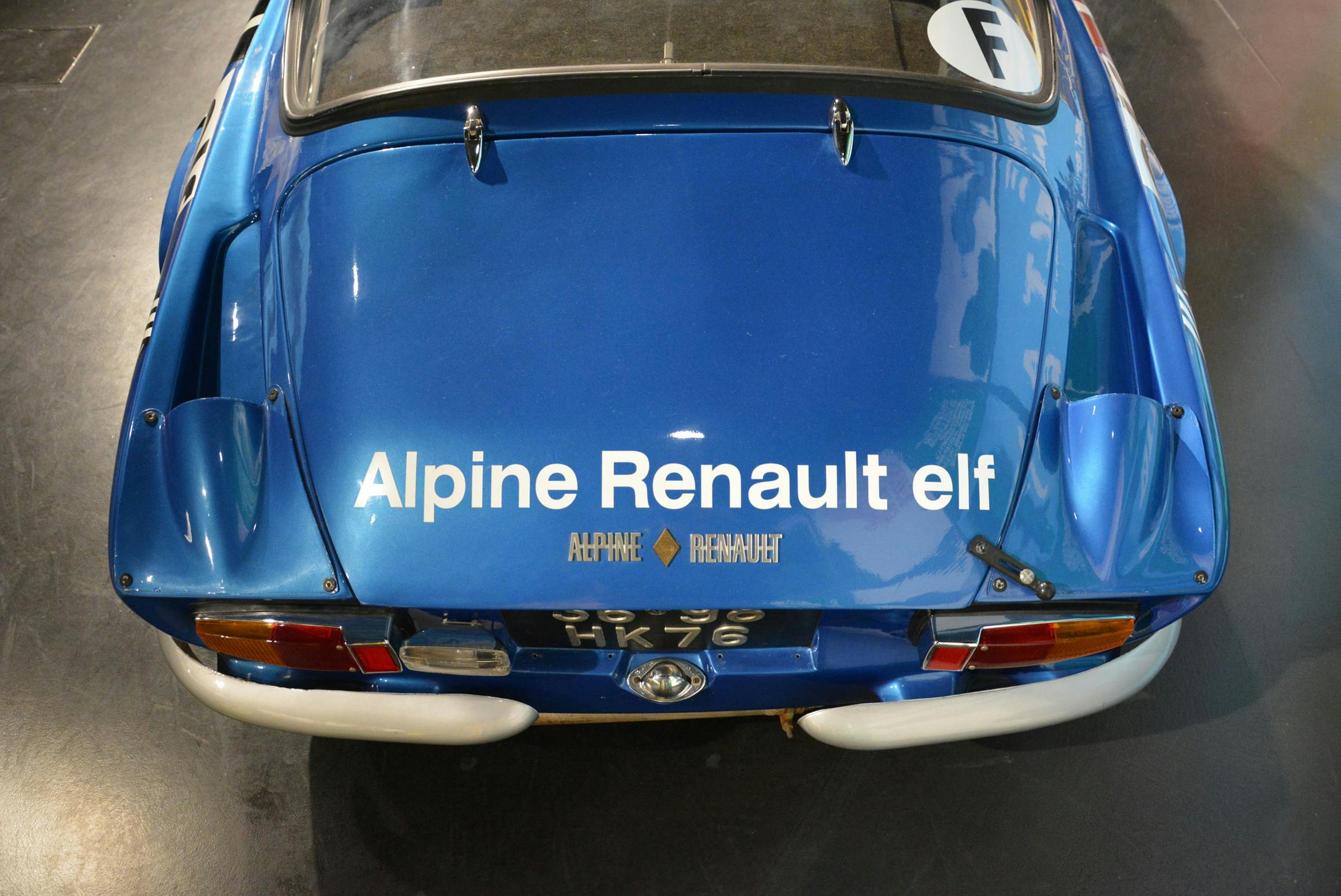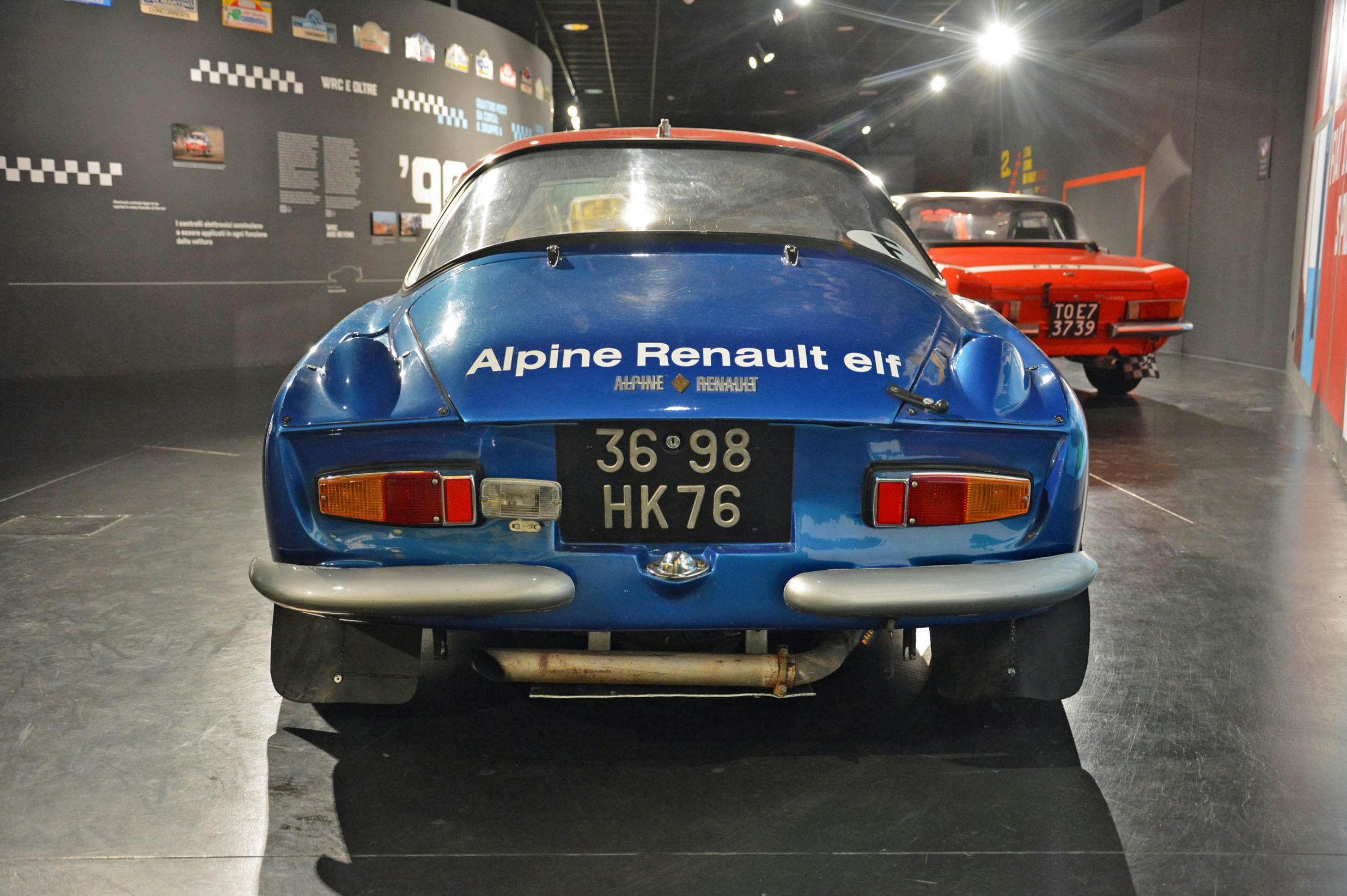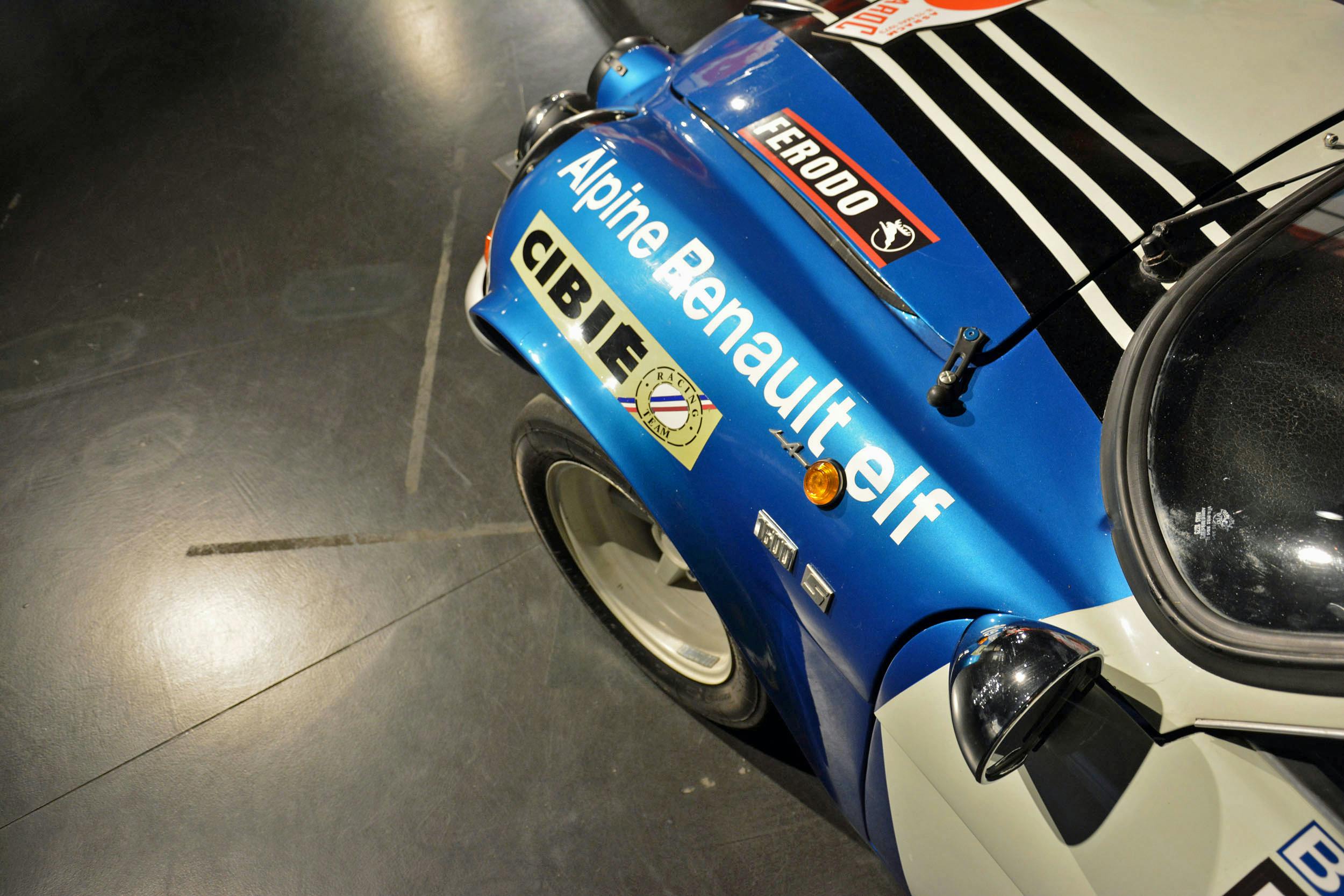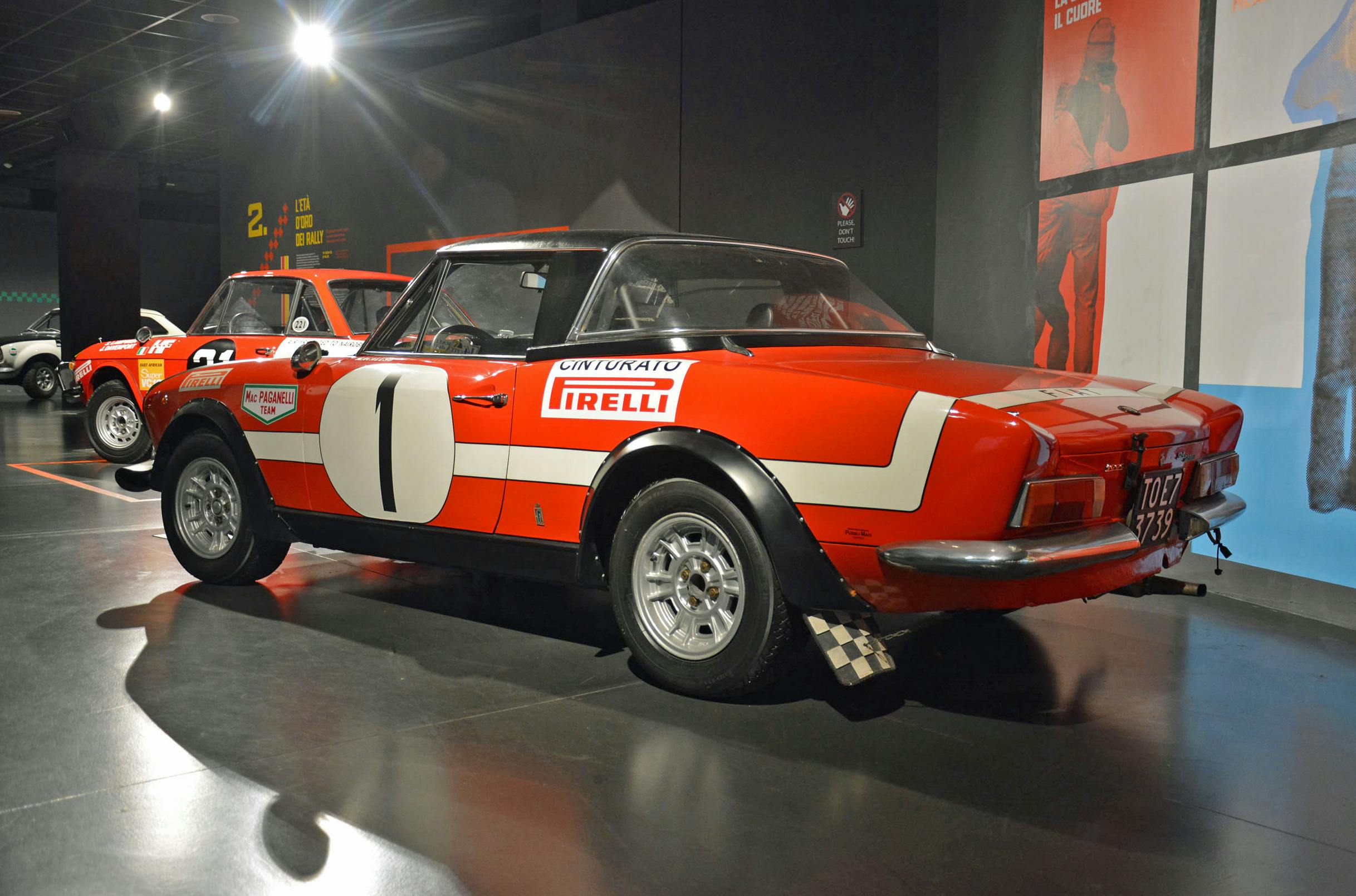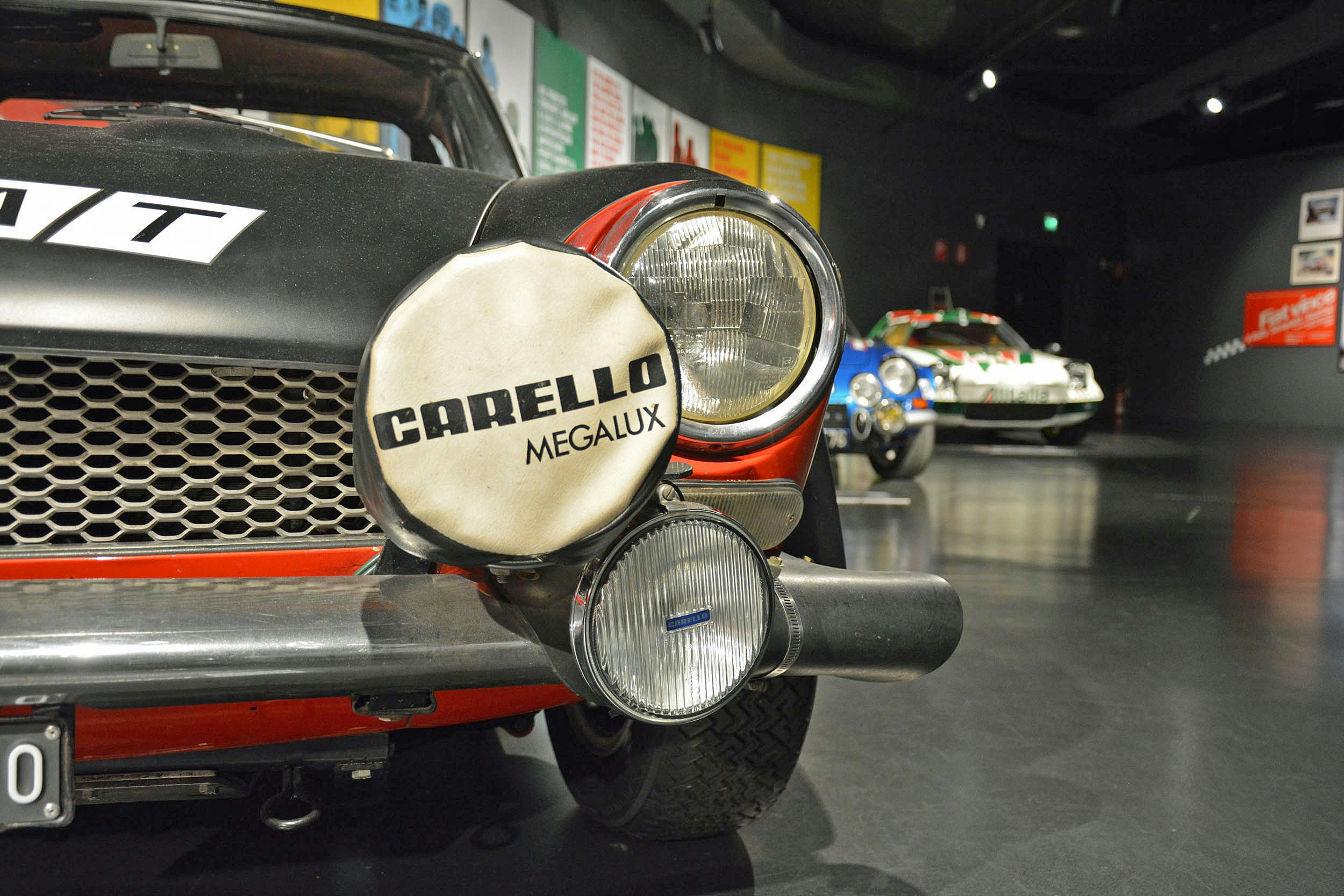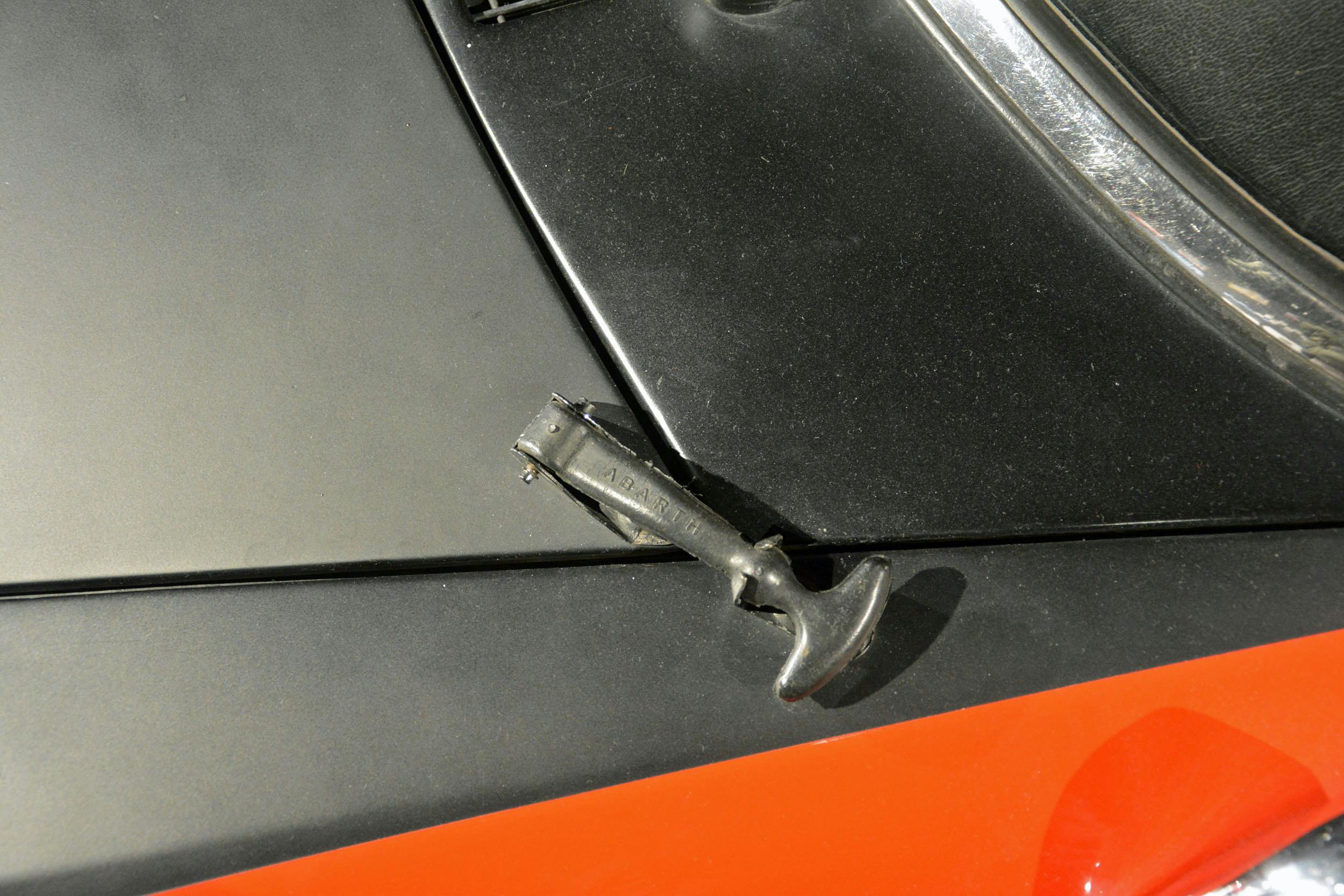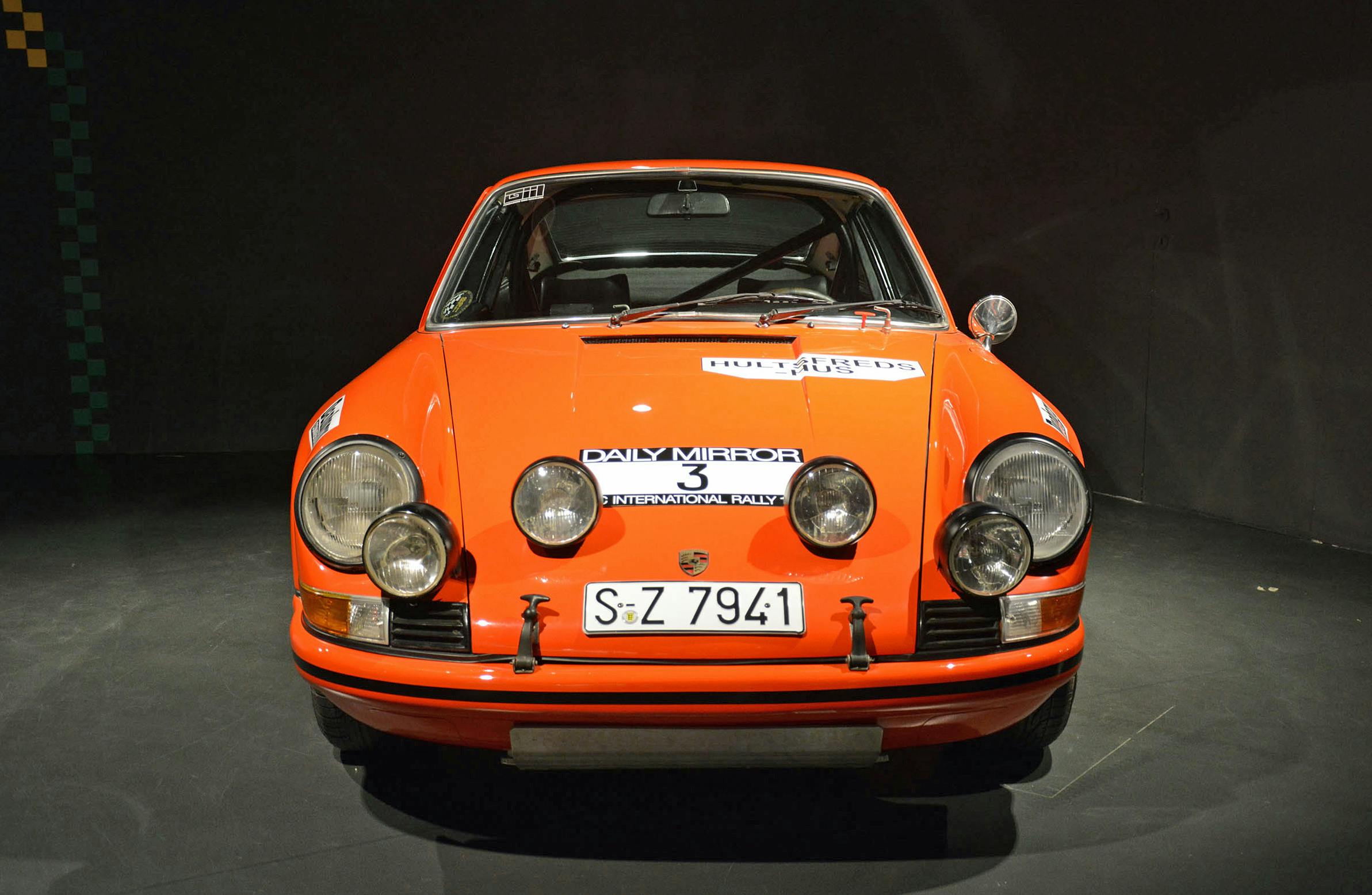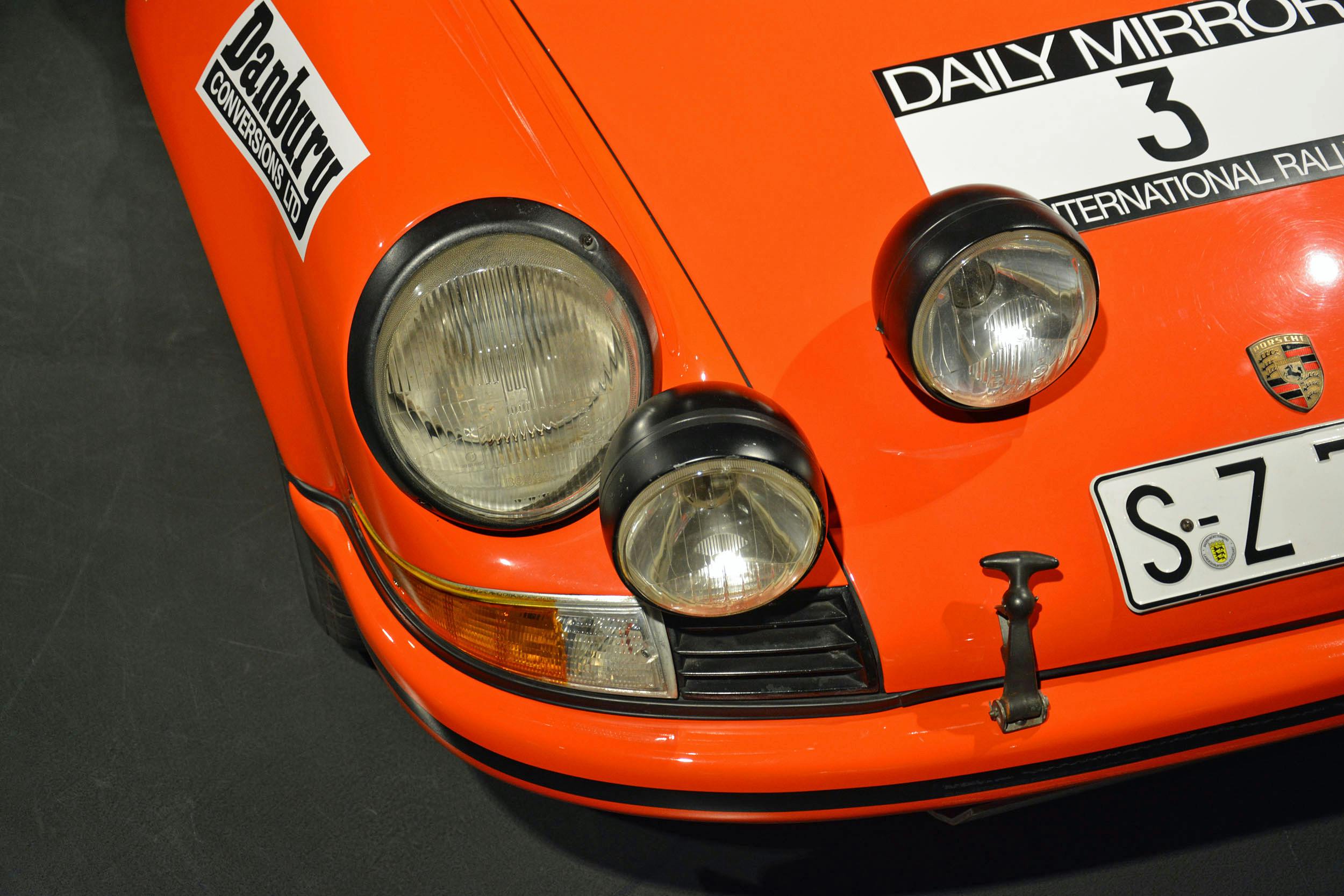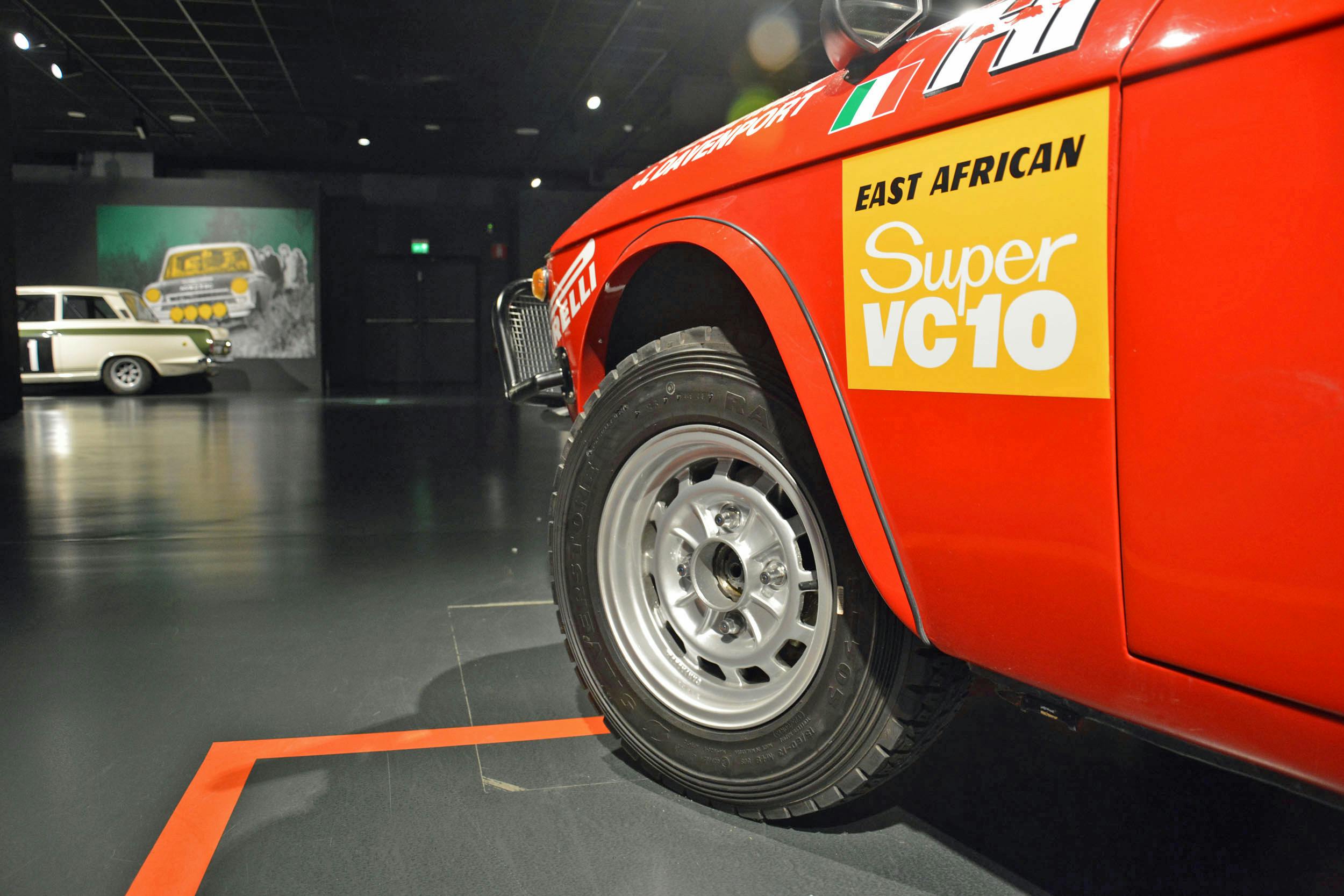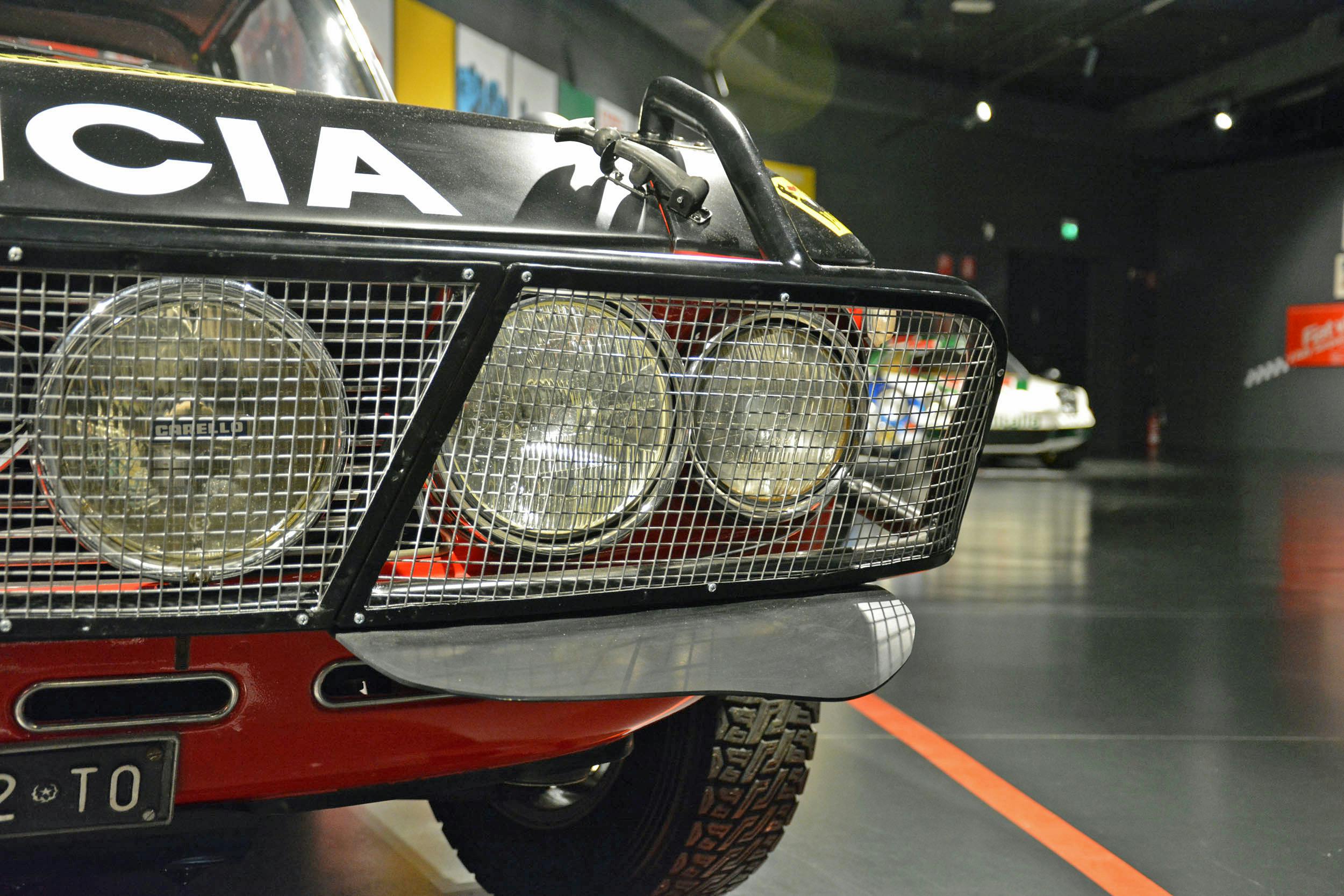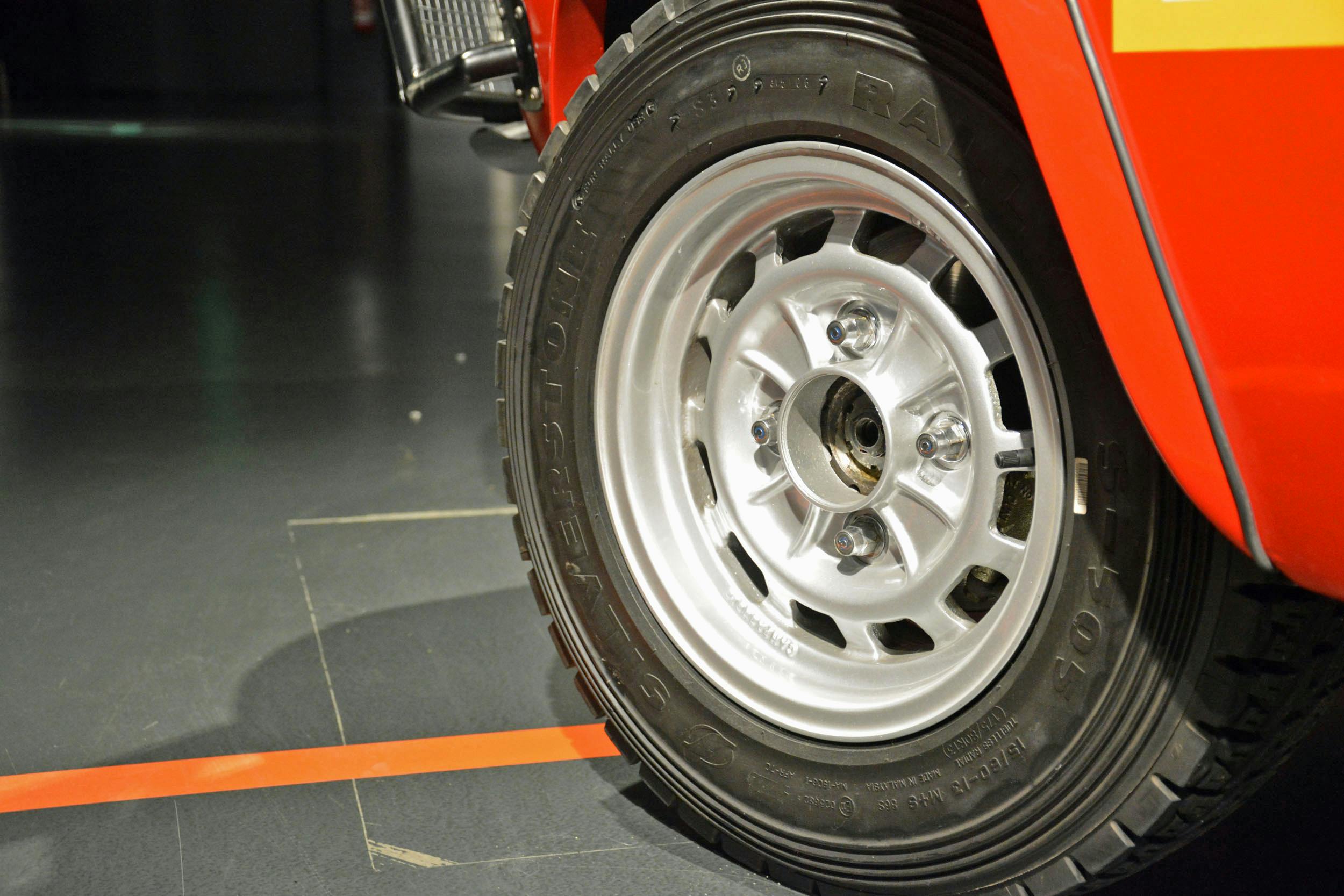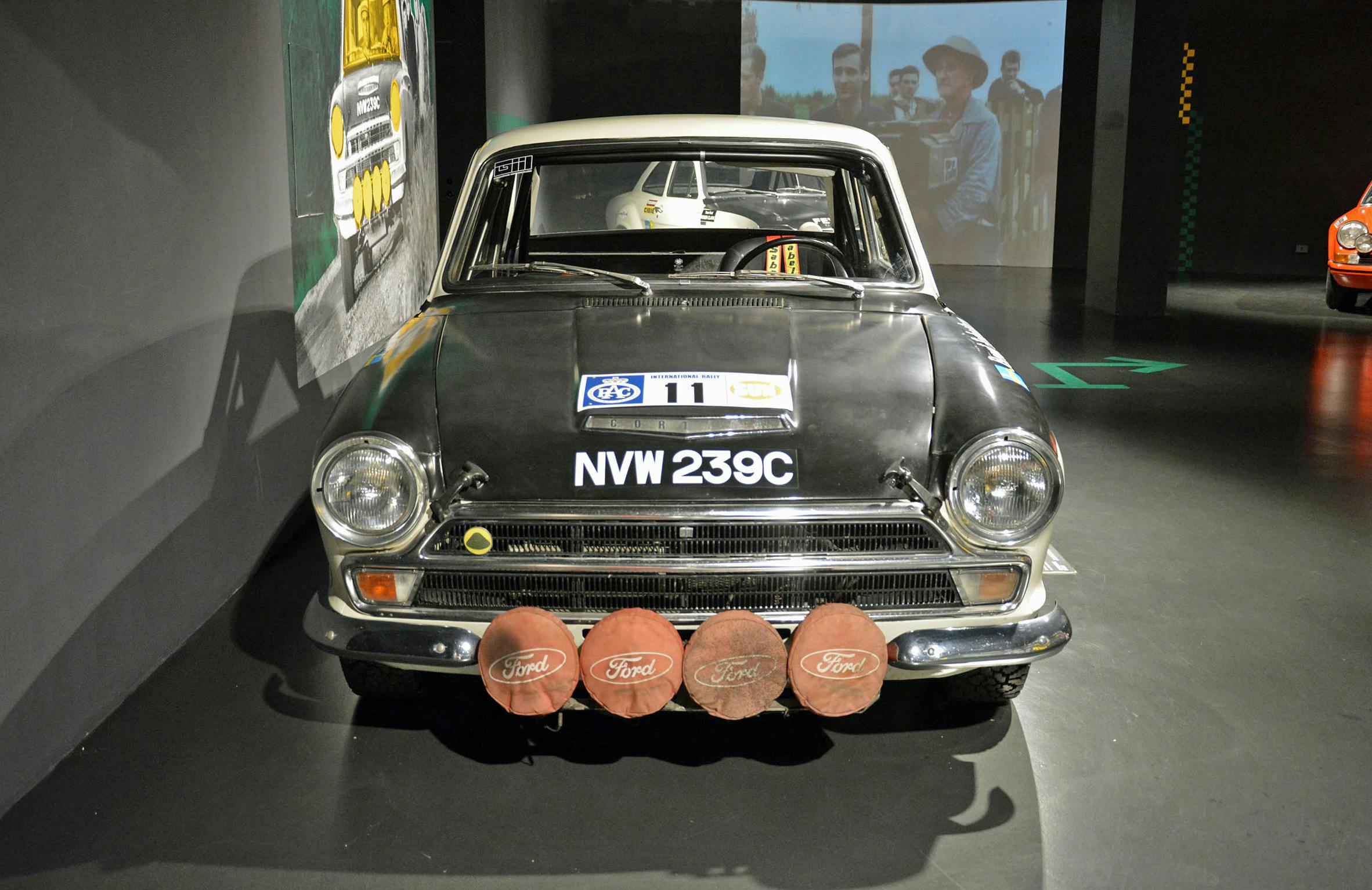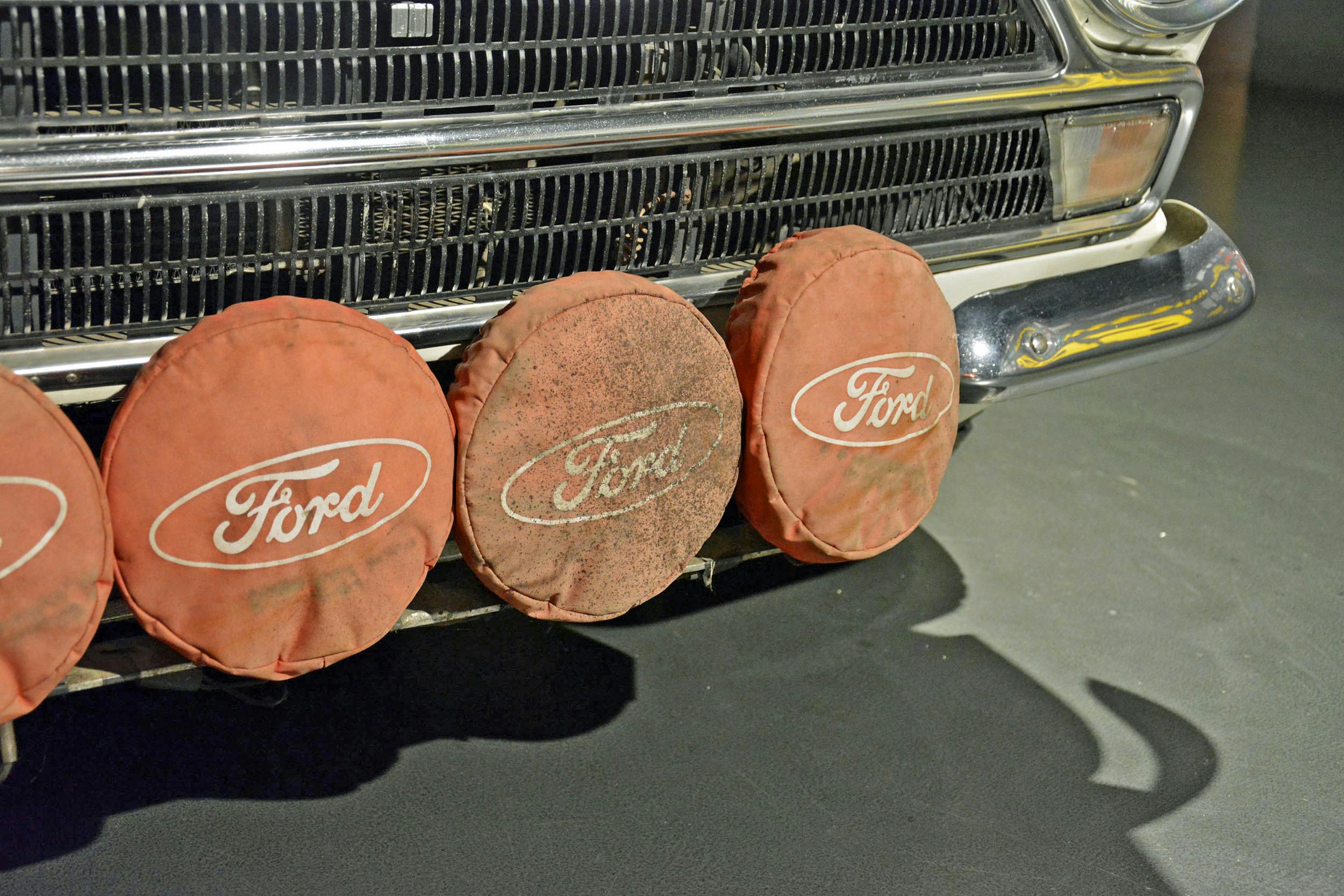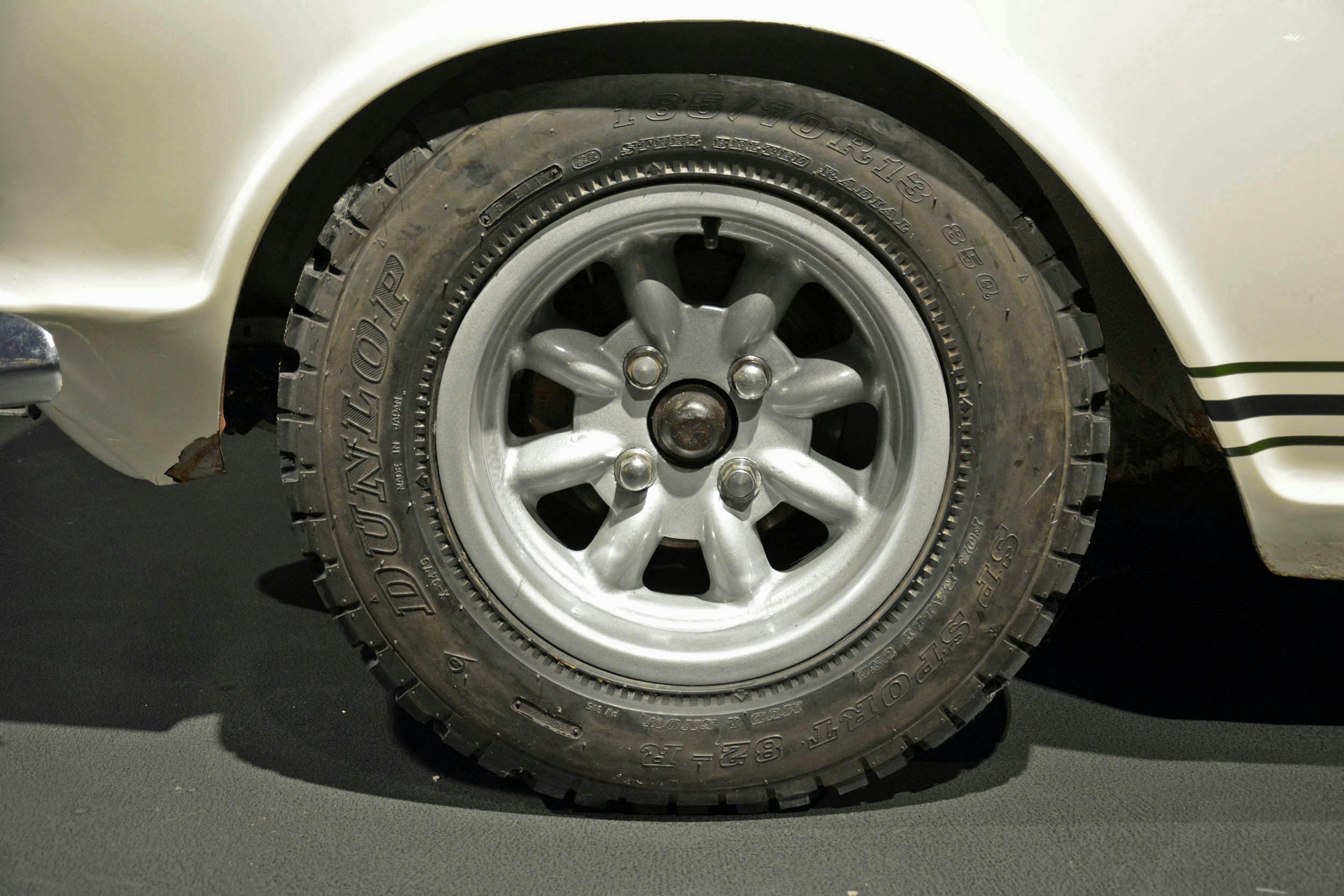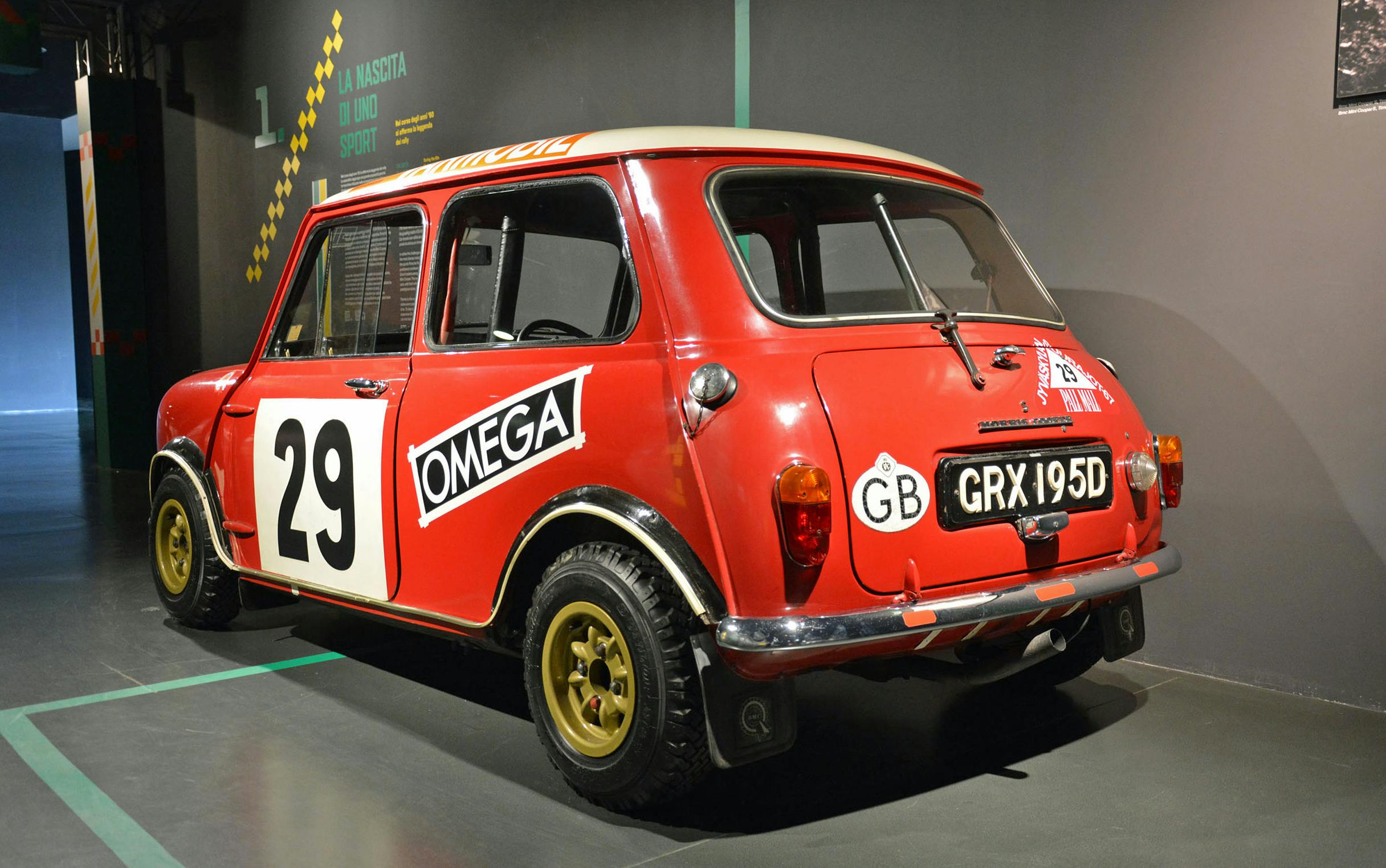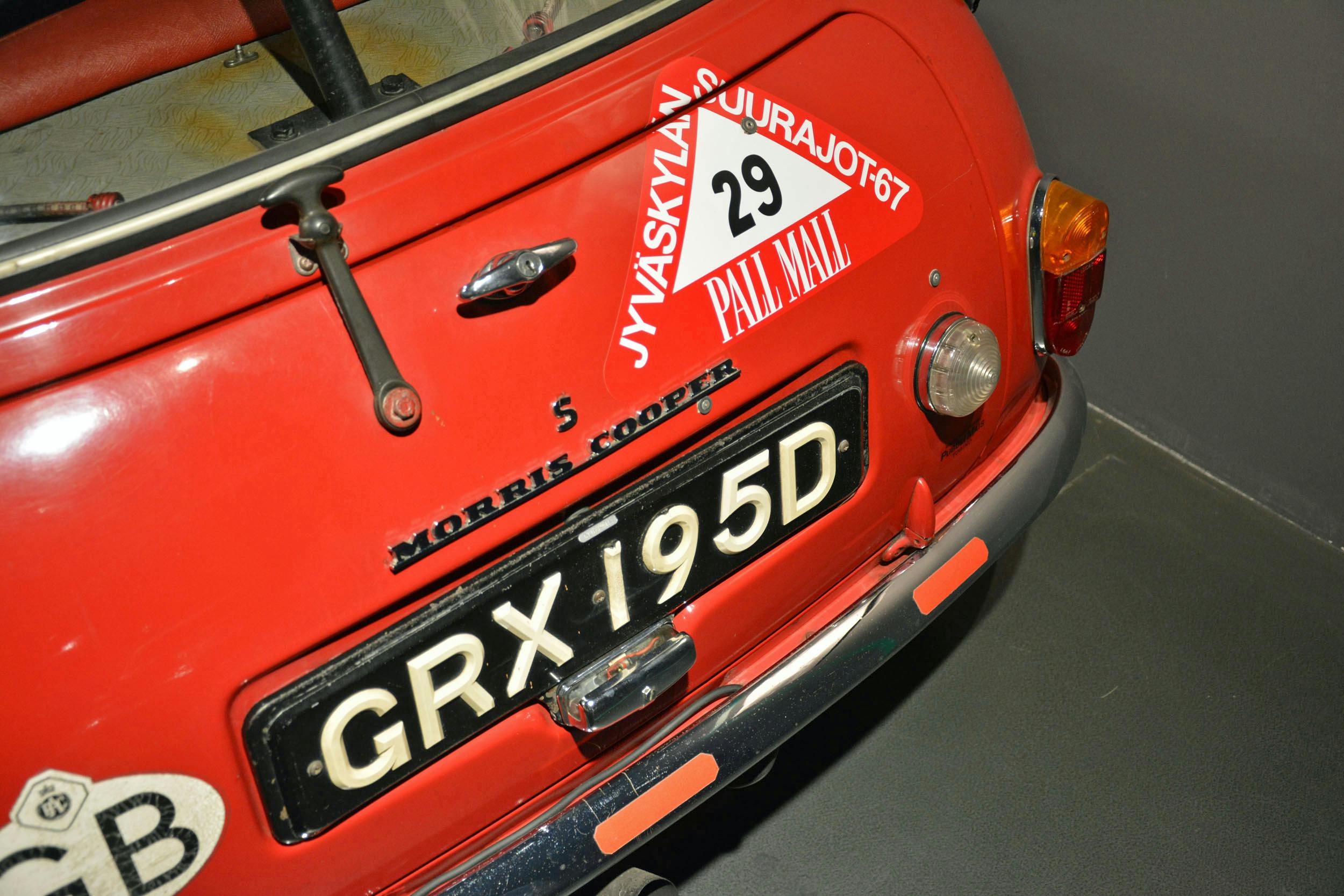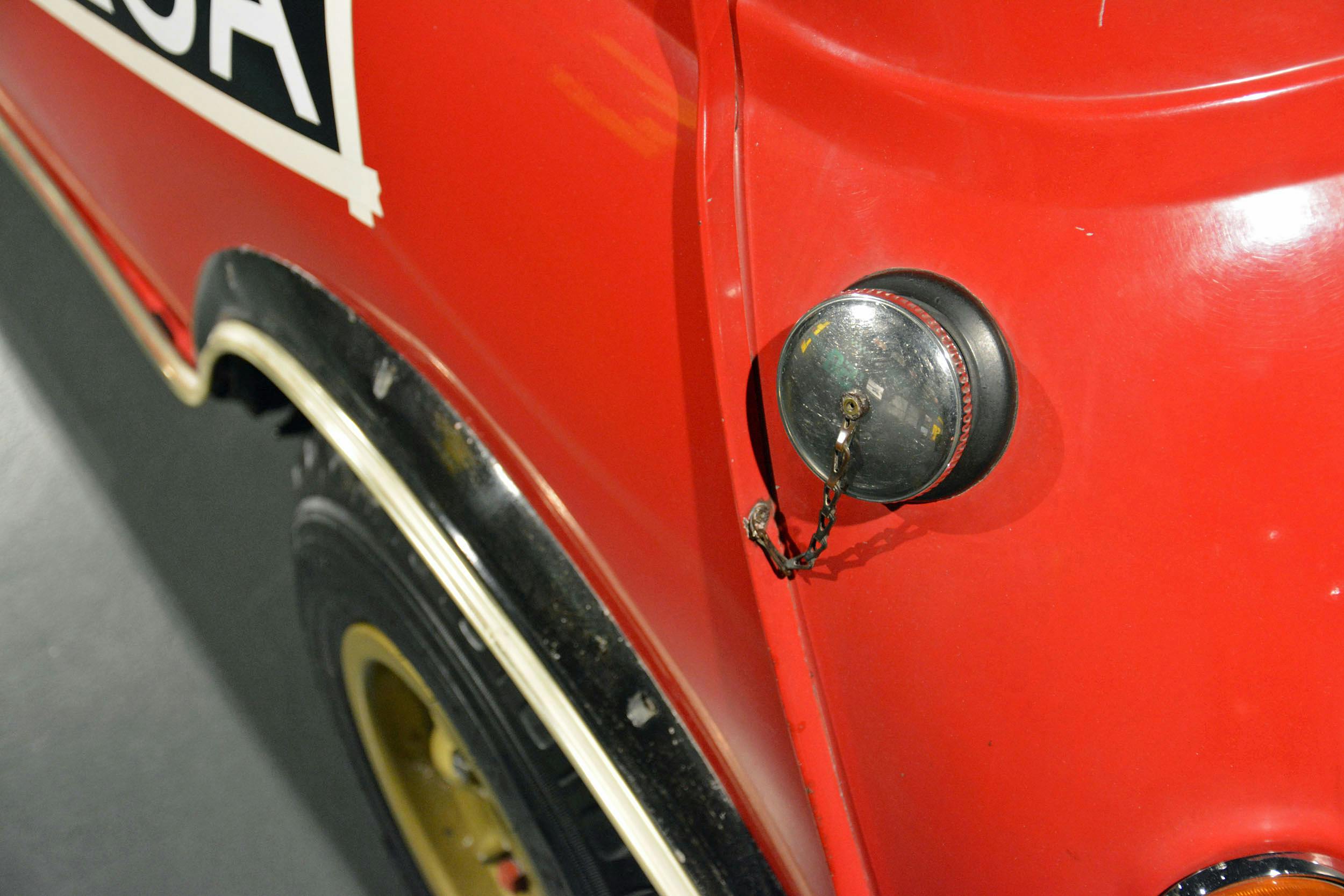17 vintage rally cars on center stage in Turin
The National Automobile Museum in Turin, Italy, is like the Sistine Chapel for Italian car fans. The multi-story building, home to local automakers’ greatest four-wheeled hits, regularly hosts temporary exhibits. The one earlier this year focused on vintage rally cars, bringing together the usual suspects and a seldom-seen prototype.
That car, the 1974 Fiat-Abarth X1/9 shown below, is the most impressive one in the exhibit, due to its rarity. It is one of four or so commissioned by Aurelio Lampredi, a brilliant engineer whose resume includes high-profile positions at Ferrari. Though the car was based on the street-going X1/9, it was developed by Fiat’s racing division with rallying in mind and so gained a long list of model-specific parts.
Power for this Fiat-Abarth comes from a 1.8-liter, 16-valve four-cylinder engine fitted with two Weber carburetors and rated at approximately 210 horsepower. (A regular-production X1/9 of the same vintage had a 1.3-liter four-cylinder, a powerplant shared with the humble 128 sedan and rated at 66 horsepower.) Mid-mounted, the 1.8-liter spins the prototype’s rear wheels via a five-speed manual transmission.
The engine wasn’t the only part of the X1/9 that Abarth modified for race duty. To save weight, fixed headlights replaced the production car’s pop-up units. The bumpers were left in the parts bin, and wheel-arch flares were added to accommodate wider tires. A periscope-like intake mounted on the rear decklid channeled air into the hot-rodded engine. A spoiler helped generate downforce.
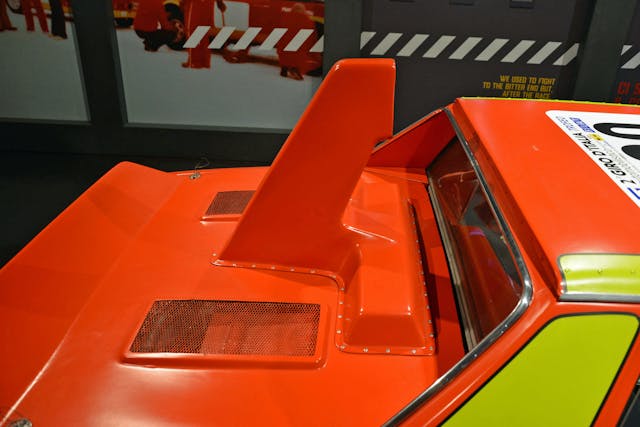
On paper and in person, the Abarth X1/9 looked more than ready to take the torch from the 124 Spider, a model which had won the European Rally Championship in 1972 (and would repeat the feat in 1975). Fiat simply needed to homologate the X1/9–based racer for Group 4 competition, a process which would have required the company to design, build, and sell a street-legal version.
However, the project was shelved after about four prototypes were built. The reasons behind Fiat’s decision remain murky: Some historians argue that the automaker took the “win on Sunday, sell on Monday” adage to heart and decided to give the 131 (sold as the Brava in the United States) a boost in showrooms instead of the X1/9.
While the rest of the rally cars in the exhibit are better known than Abarth’s obscure X1/9, they’re no less fascinating. Walk into the museum, turn left, and the first thing you see is a Mini Cooper S. It raced in the 1966 edition of the Monte-Carlo Rally and took first place in the Rally of the 1000 Lakes in 1967. The Cooper S is powered by a 1.3-liter four-cylinder engine rated at 95 horsepower, a lot of oomph for a Mini of that era.
The exhibit just keeps getting better: A 1966 Ford Cortina Lotus that won first in the 1966 RAC Rally is followed by the 1969 Ford Escort RS Cosworth that participated in the London-Mexico World Cup Rally in 1970. The latter’s 1.9-liter, 16-valve four-cylinder engine develops 210 horsepower, a substantial increase compared to the Cortina’s 105-horsepower 1.6-liter. All three cars are ex-factory-owned racers.
Porsche’s rallying efforts are represented by a 1970 911 S, while the first of several Lancia models is the 1970 Fulvia HF that participated in the 1970 East African Safari. To take on one of the most grueling rally events on the planet, the Italian coupe gained a lift kit and a brush guard, among other add-ons. The Fulvia is parked next to a 1971 Fiat 124 Spider that features the flat-black hood which later made an appearance on the last-generation, Mazda MX-5 Miata–based model.
No rally exhibit would be complete without an Alpine A110, and the 1973 example parked next to the 124 Spider has a stellar resume: It finished first in both the Rally of Morocco and the Don Capasco Rally. Next to the Elf-liveried French coupe is one of the greatest rally cars of all time: the Lancia Stratos. While this 1976 example doesn’t have a particularly impressive pedigree, it was driven by Walter Röhrl during the 1978 season and still wears its iconic Alitalia livery.
When you see the Stratos and the 1981 Audi Quattro parked in the next room, you fully grasp what made the cars designed for Group B so special. Don’t get me wrong: the Stratos is awesome, but the 360-horsepower Quattro looks like a monster that would eat a classic Beetle for breakfast. The museum cleverly parked the Quattro next to one of its archrivals: a 1984 Lancia 007 Evo 2, which won the Targa Florio Rally in 1985.
The next room is home to three massively different rally cars, each from a different era: a 1978 Fiat-Abarth 131 Group 4 (the model that allegedly stopped Abarth’s X1/9 dead in its tracks), a 1981 Renault 5 Turbo, and a 1992 Lancia Delta HF Integrale Evoluzione Safari. The last still wears the scars it earned when finishing second in the ’92 Safari Rally.
Each wild rally machine started life as a deeply pedestrian vehicle: The 131 was a budget-friendly family sedan sold as the Brava in the United States. The 5 was a bargain-basement hatchback with a friendly face and unusual-for-its-era plastic bumpers. The Giugiaro-designed Delta was created as Lancia’s answer to the Volkswagen Golf. None of the three were designed with rallying in mind from the get-go, yet they played this role very well.
Finally, you are face to face with what many consider the zenith of rallying. On your right is a 1986 Peugeot 205 Turbo 16, powered by a mid-mounted, 1.8-liter turbocharged four-cylinder engine rated at 550 horsepower. On loan from the Peugeot Museum, it took second place in the 1986 Rally of the 1000 Lakes and third place in the 1986 RAC Rally.
On your left is the Peugeot’s rival, a 1986 Lancia Delta S4 that raced in Italy and in New Zealand. It’s also powered by a 1.8-liter four-cylinder engine rated at 550 horsepower, but Lancia achieved that figure by using both a turbocharger and a supercharger.
Both cars share little more than a name and a handful of styling cues with the 205 and the Delta, respectively, but each spawned a small run of street-legal models; they couldn’t have raced otherwise. In the 1980s, before Group B was sent to the guillotine, enthusiasts could get a burger from a drive-through in a full-blown rally car that barely qualified for license plates. Imagine!
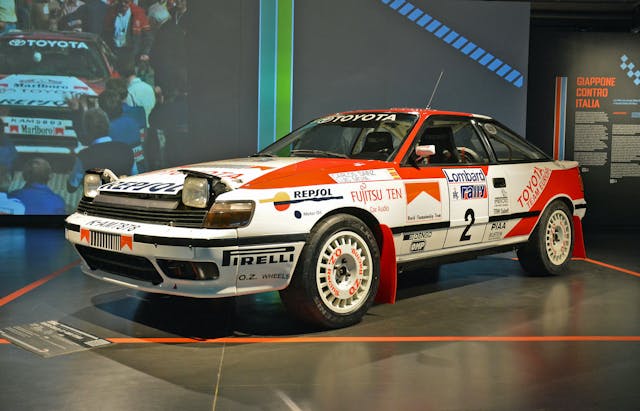
The final car in the exhibit is the only Japanese model on display in Turin: a 1990 Toyota Celica GT-Four ST165. Its turbocharged, 2.0-liter four-cylinder engine makes 295 horsepower. This is the exact car that Carlos Sainz Sr.—the father of the current F1 driver—drove to first place in the 1990 RAC Rally and the 1991 Rally of New Zealand. It illustrates the effect that new regulations had on rallying: The race car hews much closer to the street-legal Celica than the Turbo 16 to the 205.
To walk through this Turin exhibit is to witness first-hand how rally cars evolved from hot-rodded production models to purpose-built racing machines. The temporary exhibit has since yielded place to one on Italian brand Iso and another on Turin’s local coachbuilders; so, if your budget can’t stretch to a plane ticket, and you’re hungry for more rally-car history, check out this link.
***
Check out the Hagerty Media homepage so you don’t miss a single story, or better yet, bookmark it. To get our best stories delivered right to your inbox, subscribe to our newsletters.
